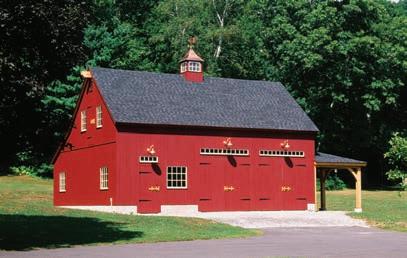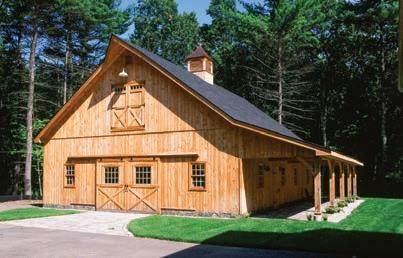A TASTY WINDJAMMER ADVENTURE A WEEK IN PICTURE-PERFECT MAINE
THE CAN’T-MISS CAPE COD SEAFOOD SPOT
SUMMER BY THE SEA


A TASTY WINDJAMMER ADVENTURE A WEEK IN PICTURE-PERFECT MAINE
THE CAN’T-MISS CAPE COD SEAFOOD SPOT

DISCOVERING THE SUMMER CHARMS OF THE FARM COAST





































































































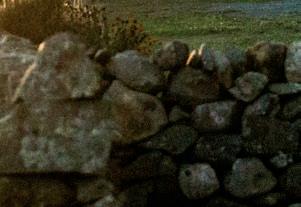

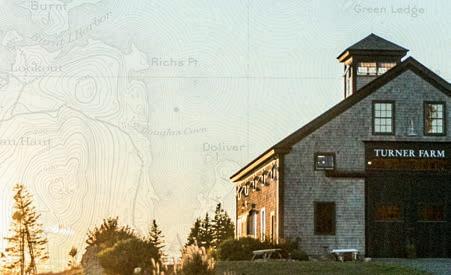








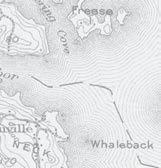

















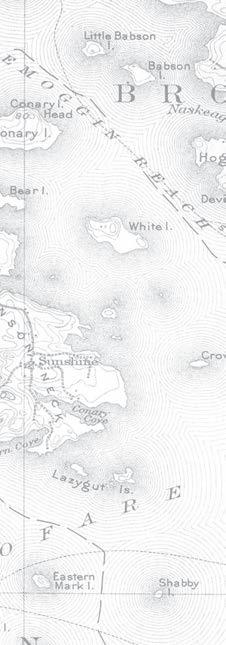
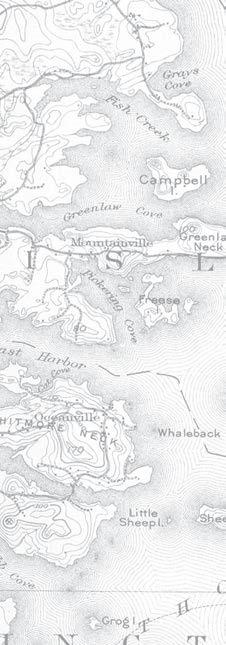
I left the simple life for the big city. And then I came back. To my senses. To everything I missed. This place on the island with no shopping centers or stoplights. Where we live off the land. Grow our own food. And open our doors to visitors who yearn for so many of the same things. Grace and charm. Time and space. A simpler path. And something to share with the next generation. This is North Haven. I’ve seen other places. But this is me.
















































Growing up on America’s oldest family farm had, like the crop that defined it, a sweetness that passed all too soon into memory. By Rebecca Tuttle
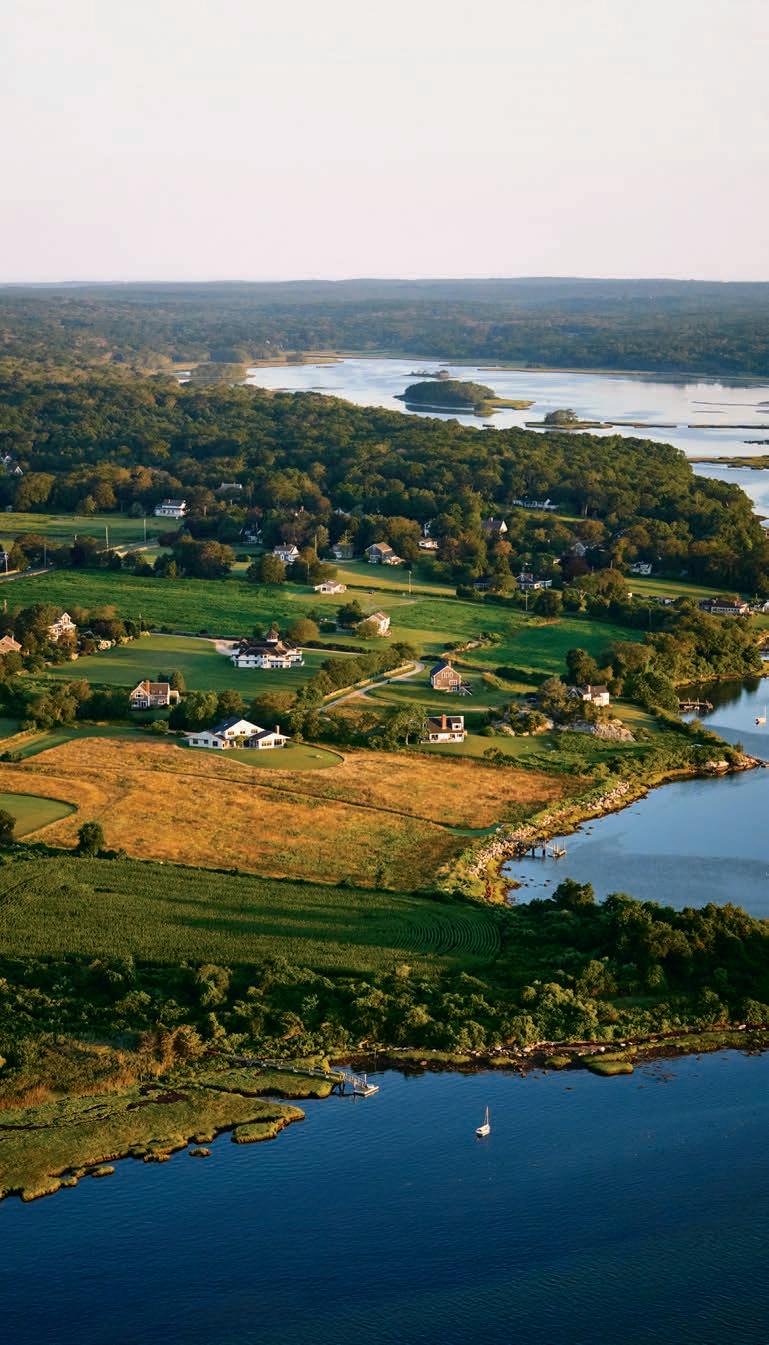
A week in a picture-perfect coastal town inspires students at Maine Media Workshops to look more deeply through the lens.
122
A memoir about the limits of love, the pain of loss, and the power of rediscovering hope.
By Geoffrey Douglas



























































































32 /// Sitting Around with Thomas Moser
Stepping into a dream house built by New England’s foremost furniture craftsman. By Annie Graves

38 /// Open Studio
The wondrous paper cuts of Vermont artist Adrienne Ginter, a wizard with an X-Acto. By Annie Graves
42 /// House for Sale
An Exeter River gem: two adjoining residences, one terrific view. By the Yankee Moseyer
48 /// Boat Magic
Aboard the windjammer J&E Riggin, a sailor’s life never tasted so good. By Amy Traverso

56 /// Local Flavor
Summer on Cape Cod just isn’t complete without a visit to PJ’s Family Restaurant. By Amy Traverso
60 /// Cooking at Cottage Farm
A simple, rustic pastry showcases blueberry season at its best. By Krissy O’Shea
64 /// Could You Live Here?
Manchester, Vermont, is heaven for fly-fishing— with lots more to reel you in. By Annie Graves
74 /// The Best 5
Go wild at a backwoods resort. By Kim Knox Beckius

76 /// Local Treasure
Listening to echoes of the textile boom. By Joe Bills
80 /// Out & About
Rounding up summer events well worth the drive.
DEAR YANKEE, CONTRIBUTORS & POETRY BY D.A.W.
12
INSIDE YANKEE
14
MARY’S FARM
An ode to the sleeping porch, where cicadas sing a lullaby. By Edie Clark
16
LIFE IN THE KINGDOM
Homesteading and hard choices. By Ben Hewitt
20
FIRST LIGHT
Behind its famous facade, Motif No. 1 holds a trove of meaning and memories. By Todd
Balf26
KNOWLEDGE & WISDOM
How to throw a Wiffle Ball, life advice from indie rocker Juliana Hatfield, and a salute to George M. Cohan.
28
ASK THE EXPERT
Want to be a docent?
Step this way, please...
30
UP CLOSE
Polaroid’s “instant” hit. 144 TIMELESS
Experience the triumphs, trials and textures of everyday life in the 1830s – a period driven by agriculture, industry, family and the seasons. Find relevance from their stories, put your hands on history, and be inspired!

Old Sturbridge Inn and Reeder Family Lodges Historic Setting. Modern Amenities. New England Hospitality. Call 508-347-5056 for a Yankee Magazine subscriber discount. July 5




Buy Your Tickets Today at www.osv.org

1121 Main St., P.O. Box 520, Dublin, NH 03444. 603-563-8111; editor@yankeemagazine.com
EDITORIAL
EDITOR Mel Allen
ART DIRECTOR Lori Pedrick
DEPUTY EDITOR Ian Aldrich
MANAGING EDITOR Jenn Johnson
SENIOR EDITOR/FOOD Amy Traverso
HOME & GARDEN EDITOR Annie Graves
ASSOCIATE EDITOR Joe Bills
PHOTO EDITOR Heather Marcus
SENIOR PHOTOGRAPHER Mark Fleming
DIGITAL EDITOR Aimee Tucker
DIGITAL ASSISTANT EDITOR Cathryn McCann
CONTRIBUTING EDITORS Kim Knox Beckius, Edie Clark, Ben Hewitt, Rowan Jacobsen, Krissy O’Shea, Julia Shipley
CONTRIBUTING
PHOTOGRAPHERS Kindra Clineff, Sara Gray, Corey Hendrickson, Joe Keller, Joel Laino, Little Outdoor Giants, Michael Piazza, Heath Robbins, Carl Tremblay
PRODUCTION
PRODUCTION DIRECTORS David Ziarnowski, Susan Gross
SENIOR PRODUCTION ARTISTS Jennifer Freeman, Rachel Kipka
DIGITAL
VP NEW MEDIA & PRODUCTION Paul Belliveau Jr.
DIGITAL MARKETING MANAGER Amy O’Brien
YANKEE PUBLISHING INC.
established 1935
PRESIDENT Jamie Trowbridge
EDITOR-IN-CHIEF Judson D. Hale Sr.
VICE PRESIDENTS Paul Belliveau Jr., Jody Bugbee, Judson D. Hale Jr., Brook Holmberg, Sherin Pierce
CONTROLLER Sandra Lepple
CORPORATE STAFF Mike Caron, Linda Clukay, Nancy Pfuntner, Bill Price, Sabrina Salvage, Christine Tourgee
BOARD OF DIRECTORS
CHAIRMAN Judson D. Hale Sr.
VICE CHAIRMAN Tom Putnam
DIRECTORS Andrew Clurman, H. Hansell Germond, Daniel Hale, Judson D. Hale Jr., Joel Toner, Cor Trowbridge, Jamie Trowbridge
FOUNDERS
ROBB & BEATRIX SAGENDORPH
PUBLISHER Brook Holmberg
ADVERTISING: PRINT/DIGITAL
VICE PRESIDENT/SALES Judson D. Hale Jr.
SALES IN NEW ENGLAND
TRAVEL, NORTH Kelly Moores KellyM@yankeepub.com
TRAVEL, SOUTH Dean DeLuca DeanD@yankeepub.com
TRAVEL, WEST David Honeywell Dave_golfhouse@madriver.com
DIRECT RESPONSE Steven Hall SteveH@yankeepub.com
SALES OUTSIDE NEW ENGLAND
CANADA Françoise Chalifour, 416-363-1388
NORTHEAST Nick Romano, 203-722-6448
SOUTHEAST Rocky Kurland, 770-441-2406
ADVERTISING: TELEVISION
NATIONAL WNP Media, 214-824-9008
AD COORDINATOR Janet Selle
For advertising rates and information: 800-736-1100, ext. 204 NewEngland.com/adinfo
MARKETING
ADVERTISING
DIRECTOR Kate Hathaway Weeks
MANAGER Valerie Lithgow
ASSOCIATE Holly Sloane
PUBLIC RELATIONS
Roslan & Campion, 212-966-4600
NEWSSTAND
VICE PRESIDENT Sherin Pierce
MARKETING MANAGER Stacey Korpi
SALES ASSOCIATE Janice Edson
SUBSCRIPTION SERVICES
To subscribe, give a gift, or change your mailing address, or for other questions, please contact our customer service department:
Online: NewEngland.com/contact
Phone: 800-288-4284
Mail: Yankee Magazine Customer Service P.O. Box 422446 Palm Coast, FL 32142-2446
Like his great-great-grandfather, (a clipper ship sea captain), Keith travels every two years to the Far East to acquire gems at the source and then he designs and makes the jewelry for us.




The Clipper Ship Trade Wind Jewelry Collection is again in the port of Portland for Summer 2018. Over one-hundred pieces of luscious sapphire, ruby, and emerald jewelry. Sneak peek preview on-line. Call or click to buy, or to experience the real thing, visit us this summer in downtown Portland.
Check it out on-line. Come visit us Monday - Friday 9:30am - 5:00pm
If you like this ad, you’ll love our weekly e-mails. Visit our website to sign up for Our Latest Breaking Gem News.
































Food: New England’s Best Lobster Shacks
Savor the classic flavor of summer by the sea with our updated regional guide.
NEWENGLAND.COM/ LOBSTER-SHACKS

Travel: Five Maine Islands to Visit This Summer
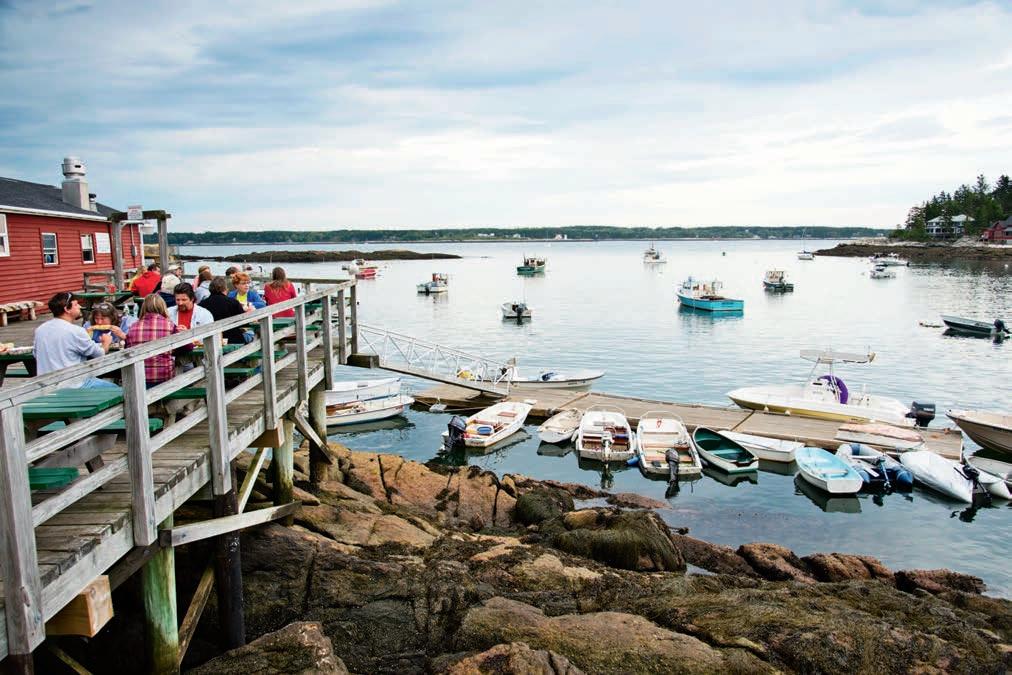
Plan the perfect getaway or day trip to one of these top Vacationland islands.
NEWENGLAND.COM/ MAINE-ISLANDS
Outdoors: Best Easy Hike in Each New England State
From the mountains to the shore, these six laid-back treks pay off with big views.
NEWENGLAND.COM/ EASY-HIKES
Recipes: Favorite Ways to Cook with Sweet Corn
This irresistible summer crop shines in 10 of our best garden-fresh recipes.
NEWENGLAND.COM/ CORN-RECIPES
Mako-certified surgeons Drs. Bradley, Marchand, Burns and Migliori

A class at Maine Media Workshops last summer put Yankee ’s veteran photo editor in a very different position: behind the lens [“A Sense of Place,” p. 114]. After years of helping to select and showcase work by top New England photographers, “I discovered that I really did have my own visual voice, and that was very empowering,” says Marcus, who lives in New Hampshire with daughters Ella and Lucy.
Dividing his time among fine-art photography, commissions, and teaching at the New Hampshire Institute of Art, Sheffield says the chance to visually explore New England [“The Most Famous Fish Shack in the World,” p. 20] was a welcome break from the “grind.” He brought along his son, Milo: “a total trouper, getting up with me at 5 a.m. to travel and spend the day exploring and taking photos.”


Born into the 11th generation at America’s oldest family farm, in Dover, New Hampshire, Tuttle tried for years to find a way to tell the farm’s story. Then she took a memoir class with novelist Joyce Maynard, a fellow New Hampshire native who had actually grown up near the Tuttle Farm. “She knew about our famous corn, and proposed I start there,” Tuttle recalls. “Thus was born ‘Corn Season’” [p. 110].



A veteran Yankee contributor, Douglas has written about everything from the 1999 Worcester fire to ethical dilemmas in cutting-edge medicine (“A Question of Life and Death,” which was a 2002 National Magazine Awards finalist). But his story in this issue [“Searching for Alexander,” p. 122] “is easily the most personal” of them all, says Douglas, who is also the author of four nonfiction books.

In “The Many Worlds of Winnipesaukee” [May/June], the photo of the vintage speedboat gets a 10. The text, however, ignores the Great Spirit weeping in despair. Winnipesaukee and its shoreline are victims of avarice, bloated egos, ostentation, and ignorance…. Sounds of songbirds and the slap of a fish jumping are lost in the racket of seaplanes, helicopters, and buzzy little Jet Skis. The shorefront forests have been replaced by chemical green lawns that bleed algae-nourishing nitrogen into the water. Architecturally abhorrent condos and McMansions litter this artificial landscape.
I am thankful that my most enduring experiences are different. I saw my father assisting my mother, in her “New Look” frock and high heels, into the cockpit of our prewar inboard before they drove off into the twilight to dance at the Weirs Pavilion to Benny Goodman or the Glenn Miller Band. And I watched the loons dance as the earlymorning mist rose from the water in the narrow channel around Hermit Island.
Ruth Smith Wilton, New HampshireEditors’ note: Though our article focused on Winnipesaukee as a summer travel destination, your point about the environmental challenges it faces is especially timely—see “Luke and the Lake,” p. 104.
Despite having crisscrossed New England for ’s home editor found the Farm Coast [“A Hidden Beauty,” p. 90] to be a revelation: “Beautiful beaches, atmospheric farm stands, sunlit fields running down to the water ... it’s like a postcard of favorite things.” She blogs about her travels—and the adventures of her boisterous Jack Russell terrier, Rudy—at anniegraves.com.
Best known to readers by his initials, D.A.W., Waters has been writing and illustrating poems for Yankee for more than 20 years. He’s also a longtime resident of Martha’s Vineyard, where he lives with husband Hal and their three Tonkinese cats (Jasper, Simon, and Toby). And since his home is on an island surrounded by beaches, Waters notes, “I didn’t have to look far for inspiration for my latest illustration!” [p. 11]
As a Connecticut expat, I’ve lived vicariously through Yankee for years, especially in the photographs. I’m stuck in a landlocked state with no trees to speak of, no ocean, and no mountains. While the Great Plains prairies have their own beauty, it’s no New England, I promise.
Here’s my issue, though: It’s not nice to tease readers like me with Weekends with Yankee , which not all public TV stations carry. Every time I open my new issue—which, incidentally, I set aside a whole afternoon
We summer feet run free and bare Without a shoelace or a care, For no one dares to lock us in A sneaker, boot, or moccasin.
—D.A.W.
to read—there’s a reference to Weekends with Yankee , and it’s making me crazy!
Thanks for many years of wonderful reading. (My issue is, of course, tongue in cheek.)
Belinda Garey Wilton, North Dakota
Editors’ note: Belinda, don’t despair! You can watch three full episodes from season 1 of Weekends with Yankee at weekendswithyankee.com. Plus, seasons 1 and 2 will be available for purchase on iTunes and Amazon starting in August.
Corrections and Updates
• “Tent Sales We’re Sold On” [May/June] gave incorrect dates for Stonewall Kitchen’s Labor Day tent sale at its York, Maine, location. The sale runs from August 20 to September 2, 2018.
• One of Yankee ’s Best of New England dining winners [May/June], Plantin’ Seeds Farm Kitchen in Connecticut, closed permanently after our awards issue had gone to press.
• 300 wooded acres, including a 68-acre preserve
• Kennebunkport and Maine’s rocky coast less than a 10 minute drive

• Several spacious cottage designs ranging from 866 to 1350 square feet


• A pool, fire pits, waterfall, and a 6,000 sq. ft. community center and clubhouse

• Hiking and biking trails (next to the 62-mile Eastern Trail)
• A poolside fire bar
• Prices start at $229,900 to $300,000+

ens of thousands of tourists have photographed or painted the iconic shack in Rockport, Massachusetts, known as Motif No. 1. But when writer Todd Balf, who grew up in Rockport, took a look inside [“The Most Famous Fish Shack in the World,” p. 20], he was able to let us in on a local secret: It’s more than a pretty face—it still holds some (maybe) useful stuff. As he puts it, “The exterior of the building is identifiable around the world. The interior is ours.”
Last summer, Annie Graves, along with Yankee senior photographer Mark Fleming, crisscrossed a still largely undiscovered region of southeastern Massachusetts and Rhode Island known as the Farm Coast [“A Hidden Beauty,” p. 90]. “It is stamped with its own particular beauty,” she writes, “sudden bursts of meadow, shingled barns, blue water, and tidy rows of things green and growing.” On every page of her story, one of those “don’t tell anyone about this” secrets emerges—such as the state park beach where even on the hottest summer day you might find fewer than a dozen cars in the parking lot.
Letting readers in on New England’s secrets has always been among the most enjoyable parts of our job. (It also can stir the most angst: After all, just like anyone else, we love having a beautiful place all to ourselves.) In “Boat Magic” [p. 48], senior food editor Amy Traverso takes a windjammer cruise and discovers the secret of cooking gourmet meals for a boatload of people. Later in the issue, a farmer’s daughter reveals both the joy of growing up on America’s most celebrated family farm and the behind-the-scenes rejection she felt when, as a woman, she was passed over to inherit it [“Corn Season,” p. 110].

There’s another story here about a secret, in a way. In the U.S., suicide is the second leading cause of death among young people (teens to mid-20s), yet it’s something that people rarely bring to light, if ever. With “Searching for Alexander” [p. 122], writer Geoffrey Douglas does something difficult and rare. Difficult, because he profiles his late stepson, Alex—reading his journals, talking to family and teachers and friends—in order to piece together the life of a young man whom so many wanted to save. Rare, because he breaks the silence that too often descends like a dense cloud around families of suicide victims.
I myself lived inside this cloud when my kid brother, David, took his life at 29. I wrote his obituary to send to the local paper, and at my mother’s emotional insistence I did not use the word “suicide.” Instead, I used the word “cancer.” And that’s how the paper ran it. Ever since, I’ve felt that my brother’s final act, expressing both who he was and his suffering, was stolen by this lie, this unspoken secret. Alex’s story just might lift the cloud for any family that knows the pain of being unable to save a loved one. It is one secret whose time to be shared has come.
Mel Allen editor@yankeemagazine.comOur sterling tree of life necklace
A symbol of a fresh start and a bright future, our tree of life will bring you positive energy every time you wear it. Beautifully crafted in Italy of diamond-cut and polished sterling silver for a lasting shine.

f abulous j ew elry & g re at p ric es f or mor e than 65 ye ar s
$59
Plus Free Shipping
Sterling Tree of Life Necklace from Italy
Sterling silver openwork pendant. 13⁄8" wide. Curb-link chain. Lobster clasp. 18" length. Shown larger for detail.
Ross-Simons Item #871059
To receive this special offer, use offer code: TREE65 1.800.556.7376 or visit www.ross-simons.com/TREE

y grandfather’s house had a sleeping porch, which, as far as I could tell, was his favorite room in the whole house. Beneath it was the sunporch, which ran a close second. But the sleeping porch had an almost mystical feel to it, part of which was that it was high up, next to treetops. My grandfather loved the hot nights when he could sleep out there. The sleeping porch was a big room, open on three sides, with several daybeds with Indian-print spreads. Screening covered the window openings, and for privacy there were bamboo shades that rolled down but would still allow air to pass through.
I was very young, not even 10, but I remember sleeping out there with my grandfather. I would sometimes spend the weekend at my grandparents’, and we would usually play cards before bedtime. For this, my grandparents had a wicker table and some chairs out on the porch. My grandmother would carry orange juice and pecan cookies upstairs on a tray and we would play hearts through the heat of the night. In between turns, my grandmother would lean back in her chair. She held her cards in a fan. She would touch the tip of each card with her finger, and then, once sure of her hand, she would use the fan to cool herself. Outside, the din of the cicadas faded in and out as if to dramatize the heat’s energy, while the katydids countered with their short, scratchy reply.
After we folded the last hand, my grandfather would settle into the bed beside the west window, and my sister and I would climb into the beds to the north. My grandmother would kiss us good-night and tell us to remember to lie really still, which would keep us cooler than if we tossed about in frustration. Then she would disappear into the bedroom adjoining the porch.
“Think of ice floating on a river,” my grandfather would say, before falling into a snore.
I don’t remember any hot nights here in New Hampshire to equal those hot nights in New Jersey. Up here on the hill, there is almost always a breeze and there are no cicadas or even katydids. But we do have heat. Intense heat wicks my energy, and I sometimes find myself sitting in a lawn chair, drinking iced tea, when I ought to be doing something more energetic. I often wonder how anything gets done in southern climates. Which is why I live where I do: Twenty below zero never gets in my way so much as a hot, humid 95 degrees.
I hope it goes without saying that I do not have air conditioning in my house. Open windows and a good fan are all I need to make myself comfortable. But during hot spells, the urge to sleep outside still comes over me. I have a small open porch, which has screening from top to bottom. It’s big enough for a few chairs and a table. In the corner, I’ve pushed an old daybed against the screens. On really hot nights, I’ll take my pillow out onto the porch and settle onto the couch. Lying there in the still heat, I can hear nighthawks and owls. Sometimes I hear animals crashing about in the thicket. As I drift off to sleep, I pretend I’m a block of ice, floating on a river. What I miss, though, is the hot noise of the cicadas and the gentle snoring of my grandfather.
This essay originally appeared in the July/August 2003 issue of Yankee. To learn more about Edie Clark, read her selected articles and essays, or order her books, go to edieclark.com.












 PHOTOGRAPHS BY PENNY HEWITT
PHOTOGRAPHS BY PENNY HEWITT
y wife and I first got pigs in 2000, shortly after we purchased our land. At the time, Penny was an active vegetarian and I myself was in recovery from a five-year flirtation with a plant-based diet, to which I applied a rather flexible self-determined definition. This meant I ate meat only when I really, really wanted to. Still, my vegetarian-ish habit had culminated in cravings for animal flesh that seemed to grow more insistent with every passing day, until finally the temptation of the shrink-wrapped slabs of beef I eyed at the town grocery overwhelmed my assumption that eating meat was bad, an assumption that suddenly felt terribly fragile and unexamined, anyway.
At the aforementioned store, I began purchasing the poor-quality cuts that fit our budget. Chuck steak was a favorite, along with stew beef and the occasional package of hamburger. Each of these I prepared in precisely the same way, in a frying pan over an open fire, complemented by copious amounts of butter and salt to compensate for the lack of quality. Even so, I ate with gusto, ravenous for the sated feeling of a meat-full belly. For her part, Penny looked on with something akin to horror, due in part, I think, to my caveman-style approach to preparation and consumption, but also to her knowledge of my dinner’s origin. Penny’s journey to vegetarianism had not been based on fragile and unexamined assumptions; she’d done her research and knew well the depravity of the dominant meat industry. And she wanted as little to do with it as possible. But now, with land under our feet, we had options. And this, in short, is how we came to pigs.
The first pigs we got we named Big Girl and Little Girl. Penny had gone to pick up the pigs with a friend, who was also a vegetarian; both were unschooled in the art of pig buying. The farmer, perhaps sensing this unusual opportunity (two vegetarians buying piglets?! Surely it’s happened, and surely it will happen again, but the odds seem long), offered a small discount in exchange for taking the runt of the litter, the soon-to-be-aptlynamed Little Girl. Nearly two decades and many piglet purchases later, I’ve come to understand that pigs rarely outgrow their runtiness; a small piglet at birth is likely to be a small pig at slaughter, and because the price of the piglets is only a modest portion of the overall cost of raising them, it makes little sense to bring home a runt, no matter the discount. But Penny and her friend did not know this (to be fair, I wouldn’t have, either), and so Big and Little it was.
I loved those pigs. There’s no other way to put it. I had prepared for them a sturdy A-frame shelter so commodious that when our dairy-farming neighbor, Melvin, saw it, he chuckled and said, “Looks like you built them a pig condo.” I knew he was heckling me, but so long as Big Girl and Little Girl were comfortable, I could take the ribbing. And they were comfortable, which I know because I visited them at least half a dozen times each day, often crawling into the condo with my body blocking the exit so that I might corner them and thus compel them to submit to my belly-scratching advances. It wasn’t long before my new friends would roll onto their sides when I approached, in anticipation of my affections.






Because these were the first animals we’d raised for slaughter, I did not yet know the golden rule, which goes something like this: It’s OK and even good to love an animal you plan to eat, but only if you know how much to love it. Because there is love, and there is love . And the problem was, I came
to love Big Girl and Little Girl. I told them stories of my day and even sang them songs, some made up and some quoted from the annals of memory. Quite naturally, my favorite song to sing them was “Pigs,” by Pink Floyd:
Big man, pig man / Ha, ha, charade you are / You well-heeled big wheel / Ha, ha, charade you are
And then, mostly because I didn’t know the intervening lyrics, I’d skip to these lines:
Pig stain on your fat chin / What do you hope to find / Down in the pig mine? / You’re nearly a laugh / You’re nearly a laugh / But you’re really a cry
I had no idea what any of it meant, but in this regard I figured the girls and I had much in common, so I belted it out as if we all knew exactly what I was singing about.
I got to sing to my girls for nearly seven months, by which time Big Girl and Little Girl had become Big and Little in only a relative sense. In truth, they were Bigger and Big, and keeping pace with their fulsome appetites had become an expensive and timeconsuming endeavor. And though I was entirely smitten, I was also committed to following through with the original plan: I was going to eat these animals. Even if I wanted to keep them as pets, we couldn’t afford to continue feeding them—nor could we afford the reputational hit we would take when Melvin got wind that we’d gone sentimental. The pig condo we would eventually recover from, but in rural northern Vermont, adding two adult pet pigs to the family was simply not a recoverable embarrassment. So I called the local itinerant slaughterer and made a date.
The night before the girls were scheduled for dispatch, I had a dream. In it, I’d taken Big Girl and Little Girl to work with me (at the time, I
was working a few days each week at a sporting goods store in Montpelier). I had them in a cage, which I situated in an alley behind the store. Every so often during the day, I’d emerge from the basement catacombs where I was fixing bicycles to scratch and sing to them. At the end of the day—as this dream went on—I headed home on my bike, and it wasn’t until late into the night that I “awoke” with a start to realize I’d left the pigs in town; in my dream fugue, I imagined them marauding through the streets of Vermont’s state capital. At this point, I awoke to the sudden, sweet relief that I’d merely been dreaming. But the relief was short-lived, for I knew what morning would bring.
Since then, we’ve raised dozens of pigs, and from them, along with other species we’ve kept for meat, I’ve learned the crucial distinction between love and love. I love all the animals we raise for slaughter, but I no longer love them, and when I sing to them, it is not a fullthroated serenade but merely a tune in passing. I still train our piglets to belly scratches, and often when I stop by the pigpen at chore time, I linger for a minute or two longer than strictly necessary, if for no other reason than it brings me pleasure to watch our animals. It is


my belief that the moment one no longer derives pleasure from the animals under his or her care is the moment one should consider whether there might be better uses of one’s time and energy. Like so many aspects of working the land, the recompense must be counted in more than money, meat, or the materials one gleans, or it will always seem to fall achingly short.
More than once, I have been asked if it is hard for us to kill animals we’ve tended on a daily basis, animals whose
quirks of personality and habit we’ve come to know nearly as intimately as our own. Yes, I answer. It is hard. But I believe that if it is our choice to eat meat (and for now, it is), it is also our responsibility to know the full truth of it. I realize that not everyone feels the same, and that is OK. I’ve learned that the world is big enough to accommodate a lot of different feelings.
Even as you read this, there are two pigs fattening on our land, perhaps three months shy of slaughter. Every morning, I fill a bucket with grain and milk and maybe a handful of questionable eggs from the tucked-away nests I occasionally find in the barn, the ones the chickens have been hiding from me for who knows how long. I carry the bucket down the driveway to the old abandoned pasture the pigs are generously helping to renovate, and I step over the two strands of electric fence keeping them contained. If I’m quiet, they won’t hear me until I’m nearly upon them, at which point they’ll rouse themselves from their nest of hay under the old truck cap that serves as their summer shelter (Melvin would approve, I think) and lumber over to their trough. I’ll scratch their backs as they eat, humming to myself and watching the sun rise in the eastern sky.


color to calm and comfort.


We understand your love of blue. As jewelers we indulge our passion for blue in seeking the best of the best, blue sapphires. We spend weeks each year comparing, considering, to find the most perfect sapphires. Once chosen, we select high-white, precision-cut diamonds to complement. Our master jewelers then mount in platinum or gold.

Over one hundred exquisite rings, earrings, necklaces, and bracelets of sapphire await your arrival. Rings from $1,250.00 to over $10,000.00
To preview our sapphire collection: www.CrossJewelers.com/sapphire








If you like this ad, you’ll love our weekly e-mails. Visit our website to sign up for Our Latest Breaking Gem News.

Rockport’s famous red shack supposedly got its nickname from local art instructor Lester Hornby, who, after seeing one too many student paintings of the shack, said, “What? Motif No. 1 again?”
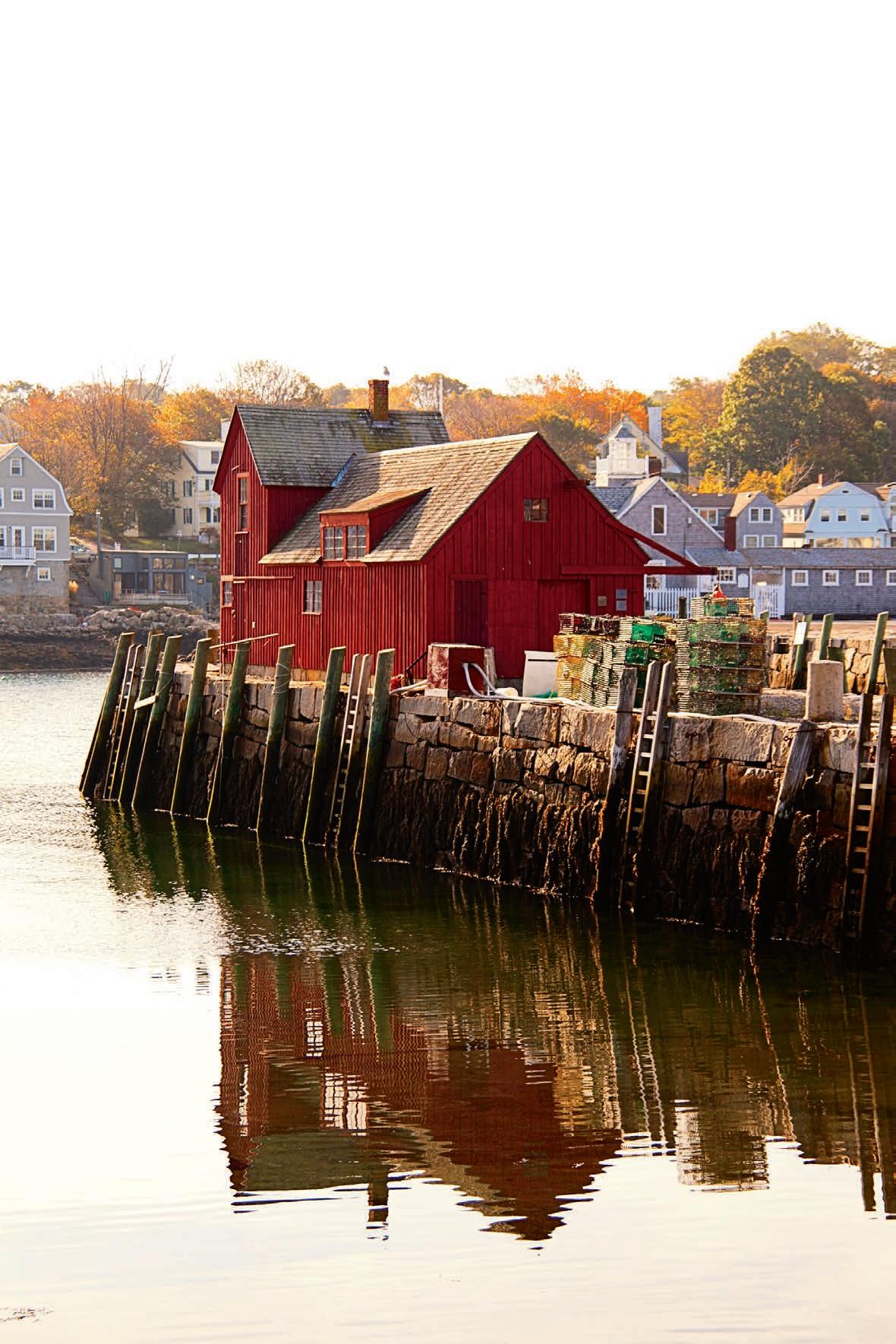

’m standing on an apron of stones at the entrance to Motif No. 1, the famed landmark in Rockport, Massachusetts, on a brilliantly sunny day—this rectangle of red against a wall of blue. Next to me is Kenny Porter, a boyhood friend who owns neighboring Roy Moore Lobster Co., and who has offered to take me inside. “Pretty elaborate security system, right?” he chuckles. There’s a rusted old chain casually draped over the door hasp, but no lock. A large solitary granite cobblestone is a makeshift, off-center step at the door’s threshold. Three plaques are affixed to the red siding, but one is badly weathered and impossible to read. Instead it’s hand-etched with a scratchy “Motif 1” that looks like the product of a late-night misadventure. It’s surprisingly endearing to see our picture-perfect building so clearly not.
To my left, across a narrow channel of water, is the pier where my 20-something artist dad once ran a frame shop, his meager income nicely supplemented in a dry town by selling cold beer out the back door. He and my mom would settle in Rockport a few years later, meaning I’d grow up here, on an island in everything but the name, attracted and repelled by the fish shack that
makes my town a little bit famous. In getting to go inside for the first time, however, I’m definitely attracted. I don’t know anyone from Rockport who’d feel any differently. The exterior of the building is identifiable around the world. The interior is ours.
Before finding Kenny, I take a walk through Dock Square to the alleyway
BY STEPHEN SHEFFIELDyields the money shot of the Motif, the long, narrow alley framing the shack a few hundred yards of inner-harbor water away. A woman is at the water’s edge, staring dreamily out at the Motif, just as I expected someone would be. I’ve seen the Motif thousands of times and will likely see it a thousand more, and still I snap a picture.
It is difficult to pinpoint why people fall for Motif No. 1—as Kenny says, there are lots of fish shacks in Rockport—but I’m looking, too, and there is something perfectly proportioned and pleasing about the building and how it sits on the pier in relation to everything else in the harbor. It’s not trying too hard, but it’s a scene-stealer all the same. We don’t stare at it as the visitor does, yet I think we’re satisfied to know it’s there.
A lone painter, plopped down on his fanny along the Bradley Wharf entrance road, has nothing more to encumber him than a light jacket, a bottle of water, and a sketch pad. A retired architect from Houston, Tom Fannin is doing a watercolor of the Motif—but not representationally, he adds. His stroke feels better outside, freer en plein air, he tells me, though a “few more clouds would make it more fun.” It’s a too-perfect day.
“Free” wasn’t the dominant sensation of some other plein air painters I met on an earlier May weekend. They’d gathered on Motif No. 1 Day, an annual celebration featuring a road race, live music, and vendors in Harvey Park. At the invitation of the Rockport Art Colony, local artists were encouraged to take their best shot at Motif No. 1 and exhibit the results in the afternoon. Organizer Dan DeLouise was happy with the turnout that morning, with a half dozen painters in position— the year before, there’d been only him and one other—but there was angst with the burdensome air of expectation. The canvases were small. “What else can you say?” muttered one woman, who’d found a hard-earned midmorning spot between a Toyota sedan and a Silverado. (“Please don’t hit the easel,” she intoned to a departing motorist.)
I could empathize. What else can you say about a building whose story is told in books and innumerable travel articles? And yet, when I sent out word among old friends that I was writing about Motif No. 1, I heard fresh stories.
One of my favorites is my friend Kip’s. He got elected to a statewide program in high school, and as he prepared to go and meet his new roommate from the western part of the state, he looked for an object that would say something about where he was from. He decided on a large, jagged piece of wood. It was from the Motif—the original one that was destroyed by the Blizzard of ’78. Like a lot of people in town, Kip hoarded pieces of the broken shack “as if they were moon rocks.” Kip said his roommate’s reaction was priceless: “What is that?” In that moment, he knew the kid couldn’t possibly understand. Kip himself barely did. So he mumbled something about an ongoing woodworking project and tucked the offering back into his luggage.
Sometimes we forget that as much as the building has been painted, photographed, and reproduced on all
manner of curios, it isn’t as famous as we assume. Everyone has seen it, but that doesn’t mean they know what it is. Or what it means.
Back in the 1930s, it was a fish shack like many others in the harbor. The town now owns the building, but it didn’t then. It was nameless. It was, however, prominently placed downtown, just down the hill from the Rockport Art Association. It was an easy target for Lester Hornby’s art students. As legend has it, the master teacher (who’d lived and painted in Paris for years) gave the much-painted building the moniker Motif No. 1.
The story that resonates with locals, however, is the one about how artists and townspeople built a 27-foot scale model of the Motif as a float and drove it 1,000 miles to the American Legion Convention at the 1933 World’s Fair in Chicago. The float, which earned a top prize, effectively began the era of Motif notoriety.
Replicas are still being built. On a recent visit to the locally owned lumberyard, I bumped into a half-finished chicken coop made in the likeness of Motif No. 1. The builder, Todd Smith, the son of the yard’s owner, couldn’t say what exactly inspired him, only that he was pretty happy with the way it was going. “People are going to be knocking at your door for one of those,” said the yard supervisor. It was the perfect Rockport marriage of form and function.
Part of the Motif’s legacy is how we say the word. “If you’re local you say mo-tiff,” says Kenny, “but if you’re from out of town you say mo-teef.” Yet it’s more complicated than that. If you’re from the working-class part of town, what old-timers call the North Village or Pigeon Cove—the place where the granite was mined and the Rockport Tool Company pounded away—the mo-tiff pronunciation is more common. The red building is how we self-identify. Local. Or a little more local.
It’s also how others identify themselves. “It’s my signature—I sell it everywhere,” says Janis Anderson, when I ask her about the unusual photograph of the Motif she has on her easel at a street arts festival in Beverly. The image, with its unlikely overlaid vertical reflections of the inner harbor and the Congregational church in the distance, seems to be ingeniously manipulated, but she says it was a singular moment granted to her, when light and luck smiled. There was no trickery, just magic; she was set up on T-Wharf at the right time. It’s her Mona Lisa, and though I’m harmless enough with a smartphone, she refuses my request to take their picture together.
My friend Dana’s postal service route covers Bradley Wharf. He sees the Motif nearly every day. His favorite story is about that “rare moment of municipal brilliance” in 1977, when the town had blueprints made for the exact dimensions of the Motif. A year later it was wrecked in the blizzard. Thanks to those plans, the present-day “Motif No. 2” (inside joke) was born “through public effort and subscription,” erected and dedicated in November 1978.
In the Academy Award–winning film Finding Nemo , writer-director Andrew Stanton (Rockport High School Class of ’84) placed a painting of the Motif in a dentist’s office. Musician Nelson Bragg (Class of ’79) has it on the cover of his album Day Into Night. Icons populate the digital landscape. For Rockport expats it’s a running gag; it’s a flag in the sand.
The closer you are to the Motif, the messier it gets. The unmoored stepstone, the plaque with the childlike scrawl, the missing (or simply unnecessary) lock. But these aren’t blemishes, really—they’re signs of life, of a quirky, full-featured place. Inside the building is more of the same: open storage stalls for a few fishermen and the harbormaster. It’s comforting that, inside, the Motif looks like any other fish shack.
The Motif is still a working shed, filled with tenants’ gear and odds and ends. At the entrance ( TOP LEFT), plaques commemorate the town’s 1950 purchase of the Motif, its rebuilding after the Blizzard of ’78, and local fisherman Leon “Windy” Wallace.

















Apartment and cottage living at Piper Shores offers residents fully updated and affordable homes, with all the benefits of Maine’s first and only nonprofit lifecare retirement community. Located along the Southern Maine coastline, our active, engaged community combines worry-free independent living with priority access to higher levels of on-site care—all for a predictable monthly fee.
But as Kenny has promised, the best is yet to come. On the second floor we pop into a treasure-filled attic from our childhood imaginations. There are layers upon layers of odd collectibles and yellowed news clippings. On a joist over our heads is a five-foot-long bill of a prize swordfish. Of course! Next to that, on the adjoining joist and getting equal billing, is a tenor saxophone. A sextant is cheek by jowl with a disco ball. It’s like that throughout, in part due to the tenant, a marine salvage operator and colorful harbor mainstay named Billy Lee. He’s not here today to explain the ceramic toucan or the cubist painting reprint or the saxophone, but no matter.
Kenny is overdue back at his bustling shop, but he’s happily losing himself in the buoys and belongings of fishermen he’s known, and vintage paintings, woodcuts, and photographs of the building we’re in. “It’s too bad, these are getting ruined— I hate it!” he says, alarmed at their dissolving condition. “But you don’t want to take them out of their spots.” It feels like a sacred space, as if we’re on an archaeological site, which we kind of are. There’s a ship’s bell and a tidy cast-iron stove. For a long time we hover over a small mounted photo: The handsome young fisherman on the right was a classmate of ours who died soon after the picture was taken.



The building teems with stories. Our stories. When we get back outside, I ask Kenny if he owns a painting of the Motif. Kenny has a robust art collection, one that’s so large he’s not sure of everything he’s got, but nothing immediately comes to mind. He professes no special sentimentality about the building in his backyard. What about a salvaged piece of wood from the original Motif? Did he get himself a keepsake? “Oh, I think I do have one of those,” he says. “Oh, sure.”























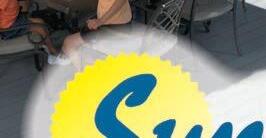
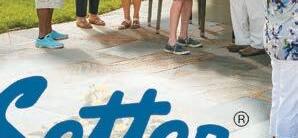


orn in a Fairfield, Connecticut, backyard in 1953, the Wiffle Ball is probably the most unaerodynamic projectile ever conceived. It will dip, rise, twist, wiggle, and do a fair rendition of Chuck Berry’s duck strut, depending on how you grip it. One early customer sent inventor David Mullany Sr. a diagram illustrating 30 different ways to throw a Wiffle Ball. Basically, it will do anything but straighten up and fly right.
As every serious student of pitching knows, the grip is a most important first step in throwing a pitch that will fool the batter. In baseball, the pitcher positions his fingers on the raised, stitched seams of the ball so that it will spin when released toward the plate. This creates turbulence that produces uneven patterns of high and low air pressure, which in turn cause the ball to dip or swerve as it approaches the hapless hitter.
With the Wiffle Ball, the oblong holes serve the same purpose as raised seams; however, they create the necessary turbulence without the rapid rotation a hardball pitcher must apply at the expense of his wrist and elbow.
In short, anyone can throw a major-league curveball with the Wiffle Ball:
■ Hold the ball with the holes on the side to which you wish the ball to swerve. Without your having to strain your joints, the holes will work their magic, confounding both you and the batter.
■ Experiment with variations in the grip and the position of the holes.
■ And finally, when all else fails, just throw the ball toward the plate unmindful of the above information. The wind blowing through those oblong holes will often do the most unpredictable things.
—Adapted from “The Gift of Wiffle” by Ric Bucher, October 1985

—Juliana Hatfield (born July 27, 1967, in Wiscasset, Maine). A leading light of the ’90s indie-rock scene in Boston, this singer-songwriter recently marked the 25th anniversary of her debut solo album, Hey Babe. Unlike many of her peers from that era, she’s still putting out music, and it’s as independent-minded as ever: In the span of a year she released both the political protest album Pussycat and the heartfelt tribute Juliana Hatfield Sings Olivia Newton-John

“A person can learn so much by just jumping into something and trying to do it, rather than having someone else teach you everything.”
7/3/1878
Day that George M. Cohan was born in Providence, RI
7/4/1878
Day that the famously patriotic composer claimed he was born
15
Age at which Cohan made his Broadway debut, singing and dancing with his sister in a sketch called “The Lively Bootblack”
500
Approximate number of songs he wrote in his lifetime, including “You’re a Grand Old Flag” and “The Yankee Doodle Boy”
$5.75M
Value of war bonds sold for the New York premiere of the 1942 Cohan biopic, Yankee Doodle Dandy, starring James Cagney
10,931
Estimated number of performances during Cohan’s lifetime of Broadway plays he wrote, produced, directed, and (or) starred in
56

Number of years of Cohan’s 64year life devoted to the stage
1.5M
Number of sheet-music copies sold of “Over There,” which Cohan wrote in 1917 as the U.S. entered World War I
ONE

Number of performers’ statues on Broadway (an 8½-foot bronze likeness of Cohan, unveiled in 1959)


ocents are our conduits to the rich history preserved in our museums, parks, and landmarks. As the assistant manager for visitor services at the Mark Twain House and Museum in Hartford, Connecticut, Grace Belanger not only gives tours but also oversees a roster of guides and historic interpreters. We recently took a tour with Belanger, and afterward she shared her thoughts on what makes a good guide, how a tour can go wrong, and how to answer the same questions over and over without going crazy.
When it comes to guiding a tour, there’s no faking it: You have to love your subject. It was Belanger’s interest in Victorian houses in general and Mark Twain in particular that led her to her job. She remembered hearing her father laugh as he reread Huckleberry Finn every year. “He’d have tears in his eyes,” she recalls. “I loved Twain because he brought so much joy to my father.”
As luck would have it, the Mark Twain House once had a guide who was also a playwright, so they hired her to write one-act plays to serve as a basis for the character-led tours. Still, Belanger encourages her guides to research their characters and how they would have interacted with the Twain family and the staff. “If you are giving a tour as Maggie the cook, that presents a particular challenge. There are sections of the house that the cook would not likely have gone into. Figuring out
how to work around that will give the tour authenticity.”
Consider Your Audience
School groups can be tough, but not for the reasons you’d think. “The kids are usually OK once you involve them in the conversation,” Belanger says. “In fact, they’ll often behave better than the teachers. Teachers can be the worst at following rules.” Her tip for handling a group with a wide range of ages: “If you can engage the youngest, the adults will eat it up.”
Take the Bad with the Good
“Sometimes I’ll ask a group, ‘How many of you are here because you are fascinated by historic homes?’ And some hands go up. ‘Because you are a fan of Twain?’ More hands. Then I’ll ask, ‘How many of you are here because you were dragged by some -
one else?’ If more than half are in that last group, it’s going to be a challenging tour,” Belanger says, adding that ringing cellphones and screaming babies also can make things difficult. “No matter what, though, we always do our best. And inevitably, even after the worst tour, there’s someone who comes up and tells you how much it meant to them.”
Mind-numbing repetition is an occupational hazard for tour guides. “There are questions that get asked on nearly every tour, like whether the girl in a particular painting is one of Twain’s daughters,” Belanger says. “It’s important to remember that the people asking today are not the same ones who asked yesterday.” And to help keep things fresh, she recommends coming up with variations on
the routine. “Even if you are playing a character, that character probably has multiple stories to tell. One day, I might be interested in talking about the animals that lived here. On another, we can focus on the furniture. Especially when you are dealing with a character like Mark Twain, everything has a story.”
As for the qualities that make a great docent, Belanger can’t define them, exactly, but she says she can sense them. “Different guides are good for different reasons, and no two tours are the same,” she says. “I’ve seen people who were knowledgeable but who could never find their comfort level, and I’ve seen young people who seemed too shy just blossom into the role. You have to give them a chance to surprise you.”
Escape to the calming aura and posh appeal of this favorite Block Island boutique hotel and restaurant. Enjoy this Victorian landmark, hosting 17 beautifully designed rooms, contemporary craft cocktails, fresh seasonal cuisine, and unparalleled service.




251 Spring Street
• 401-466-9898
• HotelManisses.com

dwin Land was only 19 and a recent Harvard dropout when he applied for his first patent: a transparent plastic sheet that could cut glare from bright light. This technology—which would revolutionize everything from sunglasses to headlights—became the basis of the company he cofounded in Cambridge, Massachusetts, in 1932 and later named Polaroid.
A prolific inventor, Land notched more than 500 additional patents before he died in 1991. But it was his 70th “special experiment”—project SX-70—that would make him a household name. Inspired by his 3-year-old daughter, who had asked to immediately see the pictures he was taking during a family trip, Land began designing a camera and film system that could be its own darkroom.
The result was the Polaroid Land camera, which made its public debut on Black Friday 1948 at Boston’s Jordan Marsh store. At four-plus pounds, the world’s first instant camera was heavy. At $89.75, it cost 15 times more than the popular Kodak camera of the day, the Brownie. And within hours, it sold out: All 56 Land cameras and film packs were snapped up. Even the demo model was gone.

Polaroid’s Land cameras enjoyed decades of success (by the 1960s, an estimated half of all American households owned one) before they were ultimately elbowed aside by things like onehour processing and videocams. The fact that Instagram based its firstever logo on a 1977 Land camera, however, shows that their core appeal—instantly seeing and sharing pictures—is as modern as ever.
Jenn Johnson1.Gems are mined here in Maine.
2.Maine is world-famous for the tourmaline that is mined here.







3.Cross has the world’s largest collection of Maine tourmaline jewelry with over 400 pieces on display.

4.Cross is open Monday - Friday 9:30am-5:00pm or visit our website.
5.Free shipping anywhere. U.S.A.





Just twenty-eight miles north of our Portland, Maine store, on the banks of the Little Androscoggin, beneath a meadow, lies the richest part of the world…gems. Gem tourmaline has been found: tourmaline the color of spring and the color of the sky, two distinct colors commingled in a single crystal.

From these crystals, our gem cutter has coaxed out their true light and life, creating a gem and a unity of color we call SparHawk Mint Green Teal. This is the color of life; color that moves with swiftness of thought; color that sweeps, darts, and soars; color so precise, so graceful that once chosen it alights upon your hand or nestles safely near your heart.
We are privileged to have the opportunity to offer the new SparHawk Mint Green Teal tourmaline. To see our most recent pieces of SparHawk jewelry, visit us on-line or stop in.


 A cherry Rockport Chair comes to the fore amid the mix of Thos. Moser furniture gracing Thomas and Mary Moser’s home.
OPPOSITE : The Mosers with their dog, Murphy; their custom-built house on the New Meadows River, which flows into northern Casco Bay.
A cherry Rockport Chair comes to the fore amid the mix of Thos. Moser furniture gracing Thomas and Mary Moser’s home.
OPPOSITE : The Mosers with their dog, Murphy; their custom-built house on the New Meadows River, which flows into northern Casco Bay.
New England’s foremost furniture craftsman hangs his hat in the house that he and his wife built on Maine’s Dingley Island.

 BY ANNIE GRAVES
BY ANNIE GRAVES
Thomas Moser at home can sit anywhere he likes, in multiple chairs of his own design. But on this particular Maine morning in mid-July, as the sun burns through a haze surrounding Dingley Island, 12 miles south of Brunswick, the 83-year-old master furniture craftsman is propped in a leather recliner that is most definitely not of his own making. ¶ “My back!” he barks, with barely contained impatience. The founder of Thos. Moser insists that 40-odd years of hovering over a workbench—tinkering with prototypes, tweaking this element or that to craft a spare beauty like the swooping Continuous Arm Chair—is not the culprit, as one might expect. Rather, the lanky craftsman accuses a ladder. Specifically, the one he’s co-opted for the past few days while freshening the white trim of the 3,200-square-foot Cape that he and his wife, Mary, built in 1993.
The house sits on the land as if washed up from the sea, with water on three sides and a straight-on view of Sheep Island. “We’re in the northern reaches of Casco Bay,” Moser says. “If you look out straight, that’s open ocean. It’ll probably take you to South America.”
But he’s here, of course. In Maine. “We’ve been citizens for 50 years,” he says, then pauses. “Fifty years since we took citizenship,” he repeats emphatically, this transplant from Illinois. In the title of an 86-page biographical sketch he wrote last year, Moser asks: How Did I Get Here? And to me, he asks, “How did somebody who never got much beyond halfway in high school become a college professor? How does a college professor become a wood craftsman? And then, how does that become a business? These are improbables!”
Part Renaissance man, part coxswain, with a dash of Hemingway, Moser sprinkles his sentences with exclamation points and poses questions with professorial directness. And yet, evidence of improbability is everywhere. In 1972, Moser took a sabbatical from Bates College, in Lewiston, where he taught speech and commu-
nications and was the debate coach (“They called me the mouth without a cause—I could argue either side”). He opened a workshop with little more than a table saw, a belt sander, some hand tools, and Mary’s staunch support (childhood sweethearts, they’ve been married since 1957). “We did everything back then,” Mary recalls, from
building reproduction Shaker furniture to restoring old clocks, landscaping, and renovating and selling historic houses (about 29 of them).
“I like to say I learned from dead people,” Moser says. He even wrote a book, How to Build Shaker Furniture, as a tribute to his earliest influences. But when Eldress Gertrude, one of the last Shakers at Maine’s Sabbathday Lake, remarked of the book, “Imitation is the highest form of flattery,” the couple decided it was time to start creating furniture that was recognizably their own.
The design thread that began with Shaker values—understanding and respecting materials and utility—now took on other influences, from Frank Lloyd Wright to George Nakashima, whom Moser credits as being one of the most important figures in furniture (a Nakashima chair graces their upstairs hallway). “The first five years, we didn’t know what we were doing,” says Mary. “Then we got serious.”
Thos. Moser grew from 12 employees in 1978 to its current staff of 135. The company’s lean, elegant furniture has been snapped up by university libraries and statehouses; it’s been admired and sat in by presidents and popes. More improbables.


And, there is this house.
“We were always looking for a place on the ocean,” Moser says. “When we could afford $125,000, everything was $300,000. When we could pay $300,000, everything was more.” In August 1988, he and Mary bought this Harpswell Peninsula property: a 14-acre parcel on a spit of land, with a half mile of frontage and a view of Cundy’s Harbor, one of the “last genuine fishing villages” in the area, says Moser.
At the time there was nothing here but an unlivable cottage, built in 1924, and an ice pond (the Mosers’ quarter-mile driveway is flanked by freshwater on the right; ocean to the left).
The couple sold everything, including their New Gloucester home and boat, and “went into deep hock,” Moser says. They renovated the cottage and lived in it while building the barn (a combination apartment/ boathouse/garage/workshop). Then

they occupied the barn while spending three years raising the house. In summer 2016, they made their final mortgage payment. “When you’re 80, you shouldn’t be mortgaged,” Moser says, with the brusque certitude of the almost-Maine-born.
Moser describes the house that he and Mary built as a “big Cape Cod,” with three-inch-to-the-weather clapboards and white cedar on the gable ends, to keep the look traditional. The sunroom, overlooking the water, came later, as did the hot tub (“You can run around naked, but you’ve got to watch out for the lobstermen,” says Moser).
“How did we know where to site the house? We put up scaffolding, sat back, and said, ‘This is what we want to look at when we wake up in the morning,’” Moser says. “This house was built from the inside out, not the outside in, the way it’s usually done.” Which, co incidentally, is how he designs a chair. Moser has written, “It’s still common for me to design and build a piece with little notion of its measurements.” He confesses that his drawings for the house consist of scraps of paper, jumbled together somewhere in a drawer.
Behind the house’s traditionallooking exterior, the Moser domain is a pageantry of woodwork. He and Mary did much of the labor, including building all the doors, insulating, and hanging drywall. They made custom trim and baseboards in the workshop; they designed the kitchen cabinets. “Every room reflects 100 percent of who we are,” says Mary. “A little schizophrenic, and it’s all here.”
“It wasn’t built or designed to please anyone but us,” Moser agrees, citing two bedrooms and five baths.
Ceilings rise to 8½ feet except in the open entryway, which soars to the second floor, with a starkly elegant railing up above. Sculpted busts of the couple’s four sons—David, Aaron, Matt, and Andrew, who’ve all been involved with the business—congregate on the first floor, more Moser handiwork.
The library/study is encased in walnut, with a ceiling “right out of Kyoto,” Moser says. There’s a secret room, too, which I scramble to find, although Mary reassures me that “everyone who comes into the house knows where it is anyway.”
No matter. Wood reigns supreme here—the same eye that envisioned Thos. Moser furniture is evident everywhere. There’s mostly cherry trim downstairs and walnut trim upstairs, but there are some tantalizing deviations, too. The floors on the ground level are made of teak from Myanmar, dredged up from under 60 feet of water. Upstairs, the bedroom’s panoramic view is framed by tidewater cypress taken from an 1802 cotton warehouse in New Orleans.
With this preponderance of wood, the dividing line between home and furnishings is often negligible. Sometimes, as in the salmon-hued dining room, the furniture dominates. Which leads me to ask Mary: When you’ve had
a lifetime of Moser designs, how do you decide what ends up in your house?

“It’s what was available,” Mary says with a smile, as we admire a massive walnut dining table that seats 14. “Most of what we have are prototypes. This was an extra college library table, and I was lucky enough to get it. It’s been here since we built the house.”
The living room couch is a prototype from an art deco line that didn’t work out. In fact, all of the living room furniture is Moser.
“Sit in that!” yells Moser from the kitchen, and I sink into his Rockport Chair, placed off to one side in the walnut-enveloped living room. It fits like a glove. But in fact, sitting in a Moser chair in a Moser room feels a little like sitting in a hall of mirrors. The wood-paneled rooms are simply a further extension of the Moser principle.
If he had it to do over, Moser says, he’d build a glass house. And yet, when he stops to think about what he loves about this place, the words spill out
quickly, without reservation. “From the bedroom, it’s a 130-degree uninterrupted view. The Milky Way is directly overhead. Not an electric light to be seen—we might as well be in the 12th century.”
Mary nods. “It’s a thrill to go upstairs.”
They glance at each other, some sort of unspoken language that communicates the years and the accomplishments.
“When I wake up, I just pick up a pillow and prop it against the headboard,” Moser says, his blue eyes drilling a hole in the horizon. “And I thank God and providence that I am where I am.”




 BY ANNIE GRAVES
BY ANNIE GRAVES
couple of twists and turns from downtown Brattleboro—currently undergoing a Vermont-style Renaissance, with cafés and social activism sprouting in onceempty storefronts—the road winds down to a teal-blue mill building: the Whetstone Studio for the Arts, shouldering up against a nimble brook. ¶ Inside, the vast space is renovated to Brooklyn-loft standards: polished wood floors, high ceilings, thick beams, and stained glass windows that cast patches of deeply jeweled light. It is further sliced and diced into the kinds of studios that most artists dream of.
Adrienne Ginter moves like a dancer through her second-story work space, an airy room that looks down on Whetstone Brook, but she’s up here in the crow’s nest, inhabiting a world of imagination. The walls are lined with landscapes, surreal in their colors and often fantastical, executed with a degree of detail and precision that seems beyond human ability. This is cut paper? Seriously? I’m catching a
glimpse of what’s possible when ordinary tools land in extraordinary hands. More precisely (and precision, in this case, is everything), we’re talking about someone fluent in the art of paper cutting, capable of wielding a swivel craft knife whose blade is not much wider than a thick eyelash. Edward Scissorhands with an X-Acto.
Ginter’s hand-cut visions are lacy, mystical, more fragile and elaborate than a paper doily, with multiple receding layers that create 3-D effects. Minuscule cuts pare away slivers of paper—behold, a stream of birds emerges. A tangle of Queen Anne’s lace lifts up in shades of sage and celery. Dark pointed firs hold on to their mystery against a twilit sky.
But then, as I look around, there are also tiny shadow boxes littering a desktop. Crazy little sculptures molded from tangled paper parings dominate a cube in the center of the room. Lacy bits of works in progress dangle from the walls—all insight into the multitude, beauty, and whimsy of the projects that Ginter’s got going.
“I’m ADD,” she confesses. “I get bored easily, so I’m always working on several things at once.” One of these is a collage for her daughter, who’s about to have her first birthday. The gift is a bold layering of white rabbits, fuzzy pale-peach flowers, and fuchsia snakes. As for the small paper sculptures, she shrugs. “I don’t know what to do with these yet!”
The Gilford, New Hampshire, native moved here from Boston four years ago with her husband, who also works with motion graphics and 3-D animation, and rented this studio in her first week. Her route to Brattleboro passed through the University of New Hampshire (BFA in painting) and Boston University (MFA in painting), with liberal doses of awards and gallery shows, plus a stint as a Realtor (she loved it). She began cutting paper 10 years ago, almost accidentally, while working on a mostly green oil painting called Jungle. It wasn’t flowing, and so “I went to Blick art supplies and bought every piece of green paper they had and started cutting.”


Right away, she liked the meditative quality of this new direction. A single layer of detailed cutwork can take up to 60 hours; one of her large pieces has 10 layers. “I work on five to 10 pieces at a time,” she says, “but if I
worked on the same one, I would guess it takes two to three months.” Some have taken years. “Even then, I’m not sure when they’re finished,” she says ruefully. And while Ginter’s oil paintings are also intricately detailed, “there’s more control with paper, and I like the graphic quality.”
There are also built-in restrictions. The Canson Mi-Tientes art paper she uses is ideal for cutting but has a limited palette: 40 colors. On the liberating side, “the nice thing about paper is that you can do it on a kitchen table. With oils, you need space.”

And yet Ginter is quick to add she doesn’t define herself as a paper artist. “I’m always experimenting, always doing something new and teaching myself.” Equal parts artist and extrovert, she ticks off antidotes to the stircrazy solitude that might otherwise plague an outgoing creative type. She served on the board of the Arts Council of Windham County, teaches art, and does craft shows. For good measure, she co-owns Hazel, a lively selfdescribed “pizza joint with a BBQ bend” on Elliot Street, a perfect exemplar of Brattleboro’s upbeat revival.
“I’m really social,” she says with a grin. “That’s a real perk when you’re an artist.”
Cards sell for $5; a 6-by-8-inch shadow box is $700; and 8-by-10-inch pieces sell for $900. For more information, email adrienne.ginter@gmail.com or go to adrienneginter.com.















Yankee likes to mosey around and see, out of editorial curiosity, what you can turn up when you go house hunting. We have no stake in the sale whatsoever and would decline it if offered.

tanding at the river’s edge, next to the swimming ladder I put there, we own everything you can see on the other side in both directions,” said John Mueller, as we sat with him and his wife, Martha, one beautiful day this past spring at their home in Exeter, New Hampshire. We were in the dining room; on the level below us was their living room, with its wonderfully large windows looking out at dogwoods, rhododendrons, azaleas, lilacs, roses, and even a poppy garden—all leading down to the river. That’s the Exeter River, of course, stocked each year with trout by the New Hampshire Fish and Game people.

“Every morning this time of year,” said Martha, “I garden my way down there, fussing with all my plants, until I reach the swimming ladder. Then a swim.
She went on to tell us that when she and John, then living in Beverly Farms, Massachusetts, first walked into this house one fine day in 2003 during a house-hunting trip in search of something closer to Southern New Hampshire University, where she works, “we were suddenly confronted with this view you’re seeing now, and we simply knew right away that this place was it. Our search was over.”
During the next 15 years, they undertook extensive restoration work, changes, and improvements on what is actually two connected

kayakers
this distinctive property are often heard to say, “There’s the most beautiful house in Exeter.”Martha and John Mueller in the dining room of their home, part of their property’s adjoining houses ( OPPOSITE ): one from the 18th century, the other from the 20th. JOHN MUELLER (EXTERIOR)
houses with a common entrance: There’s one built in 1770 (two bedrooms, 1½ baths, three fireplaces, and a garage), currently being rented to a young couple for $1,650 a month (which includes water and electricity), and a comparatively new one built in the 1950s (three bedrooms, 2¾ baths, and a two-car garage), in which John and Martha live.
For both houses together on just under 1½ riverside acres, the Muellers are asking $855,000. As for the six-plus acres across the river, well, we can assume that is negotiable. Incidentally, those extra acres include two dams that once supplied power to the famous Flagg and Wiswall paper mill, which succumbed to fire in the 1870s and is no more.
For us, the highlight of the newer house is the master bedroom, once the location of a large hot tub that was surrounded on three sides by tall win-
dows overlooking the river. “When we first saw it, it occurred to us both that maybe this was where we’d like to wake up every morning,” said Martha. So after placing a mattress on top of the hot tub and sleeping there for a couple of weeks “just to be sure,” it was good-bye to the hot tub, and they had their permanent, and most unusual, master bedroom.
We particularly loved their library, too, with its massive wall of books and a ladder for reaching the top shelves. It also has an interesting large framed photograph, one of several throughout the house, mostly interiors, taken by their only child, Elizabeth, when she was studying in faraway Myanmar. Incidentally, Elizabeth, newly married now, lives with her husband, Felo, in Rhode Island, and therein lies the reason the Muellers have decided to part with their wonderful Exeter River property. “We’d like to live near Eliza-
beth and Felo,” Martha explained. “We’re excited about searching for a new place—but oh how we’ll truly miss waking up here every morning.”
Exeter, New Hampshire, located just eight miles from the coast, is one of New England’s most desirable places to live. But since Yankee recently published a travel feature on it (March/ April 2018), we won’t have to tell you about how Abraham Lincoln once gave speeches in the town hall, or how the oldest brass band in the country (c. 1847) will be performing there each Monday evening in July, a month that also sees the return of the town’s American Independence Festival. So ... no need to repeat all that. Right?
For more information, contact John Mueller at 603-686-6666 or jcmueller@comcast.net.








• Established: 70+ years strong
• Competitive prices

• Fast turnaround

When you’re ready to sell your collection, contact Littleton Coin Company. With thousands of active collectors and outstanding demand, we need your coins and currency! Our expert staff has over 150 years of combined buying experience and deals with all U.S. coin and paper money types. Experience counts – get knowledgeable, professional service from leaders in the numismatic field!


• Actively buying and retailing collections through the mail since 1945
• Single issues, large collections and hoards
• We spend over $25 million a year on coins & paper money

• As one of the nation’s largest, most trusted retailers, we can pay more!
Find out how to receive your FREE appraisal. Contact Littleton now for your personal and confidential consultation.


Call to speak with one of our experts today



1-877-857-7850 Or E-Mail CoinBuy@LittletonCoin.com

Mention B9E838 to get your FREE Seller’s Guide!
“When I decided to sell my coins, I was looking for three things: timely replies, professional, respectful treatment and a fair price… I got all three…”


J.P., Wadsworth, OH
We’re buying scrap gold, platinum and silver, unwanted or broken precious metal jewelry, watches and rings.














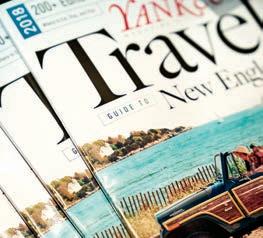


New Hampshire PBS and Yankee recently hosted an evening in Portsmouth, NH, celebrating season 2 of Weekends with Yankee, a 13-episode documentary series that invites viewers nationwide to explore the best of New England. On hand for the screening and Q&A at the Music Hall Loft were series cohost and Yankee senior food editor Amy Traverso, Yankee deputy editor Ian Aldrich, Weekends with Yankee director Rennik Soholt, and Black Trumpet chef-owner Evan Mallett. Yankee Publishing president Jamie Trowbridge moderated the Q&A, which delved into the process of bringing Yankee ’s insider knowledge to the screen for season 2.

Celebrating the people, destinations, and experiences that make the region and Yankee Magazine so unique.

Follow along @YANKEEMAGAZINE #MYNEWENGLAND





The Music Hall Loft event was followed by a dinner at the bistro and wine bar Black Trumpet, where chef-owner Evan Mallett, a multiple James Beard Award semifinalist for Best Chef in the Northeast, plated up his globally inspired cuisine. (In season 2 of Weekends with Yankee, cohost Amy Traverso went mushroom foraging with Mallett.)

A SPECIAL THANK YOU TO OUR EVENT SPONSORS





COASTAL MAINE MAKES NO PROMISES FOR WEATHER, AND THE WINDS CARRY YOU WHERE THEY WILL, BUT ON THE J&E RIGGIN ONE THING’S FOR SURE: YOU’LL BE EATING VERY WELL.





 BY AMY TRAVERSO
BY AMY TRAVERSO

 FLEMING
photographs by MARK
FLEMING
photographs by MARK
The waters of Owls Head Bay are still and silent in the last hour before dawn. I hear a door latch quickly lifted and closed and look out my porthole to a blurry darkness. It’s 4:30, an uncommon hour for me but a typical start when you’re cooking for 24 guests and six crew members on a Maine windjammer. I can hear that my host, co-captain Anne Mahle, is already on her way to the galley to light the stove, so I splash water on my face and creep up the companionway and across the deck. ¶ Onshore, a rooster crows, and in the dull blue light I can make out the silhouette of Monroe Island, one of the largest undeveloped islands in midcoast Maine. Down in the galley, Anne—she goes by Annie—is humming quietly as she washes her hands and fills a pitcher of water. Just a few feet from where she stands, behind a curtain on the port side, a young apprentice named Jasper is sound asleep in his bunk. He won’t wake until 6:15, when Annie, marveling at the snoozing powers of teenage boys, will rouse him. But for now the morning is hers, a rare bit of solitude.
This is how the day begins aboard the J&E Riggin, with passengers asleep in their cabins and Annie getting her systems into gear. Only the lobstermen loading their bait bags over at the Owls Head Lobster Co. are up to share this watch. The Riggin —one of 13 windjammers that sail out of Rockland and Camden—is a 120-foot, two-masted schooner first built in 1927 as an oyster dredger for Charles Riggin, who named the boat after his sons, Jacob and Edward. Converted for passenger sail in 1977, it’s now a National Historic Landmark that takes passengers on three-to-seven-day sails from May to October. Annie and her husband and co-captain, Jon Finger, took custody in 1998, when she was pregnant with their first daughter, Chlöe. “A boat and a baby,” Annie says. “Go big or go home.”
The first task of the day: boil water for coffee, a 45-minute project when you’re cooking on a wood-burning stove. There’s no food processor here, no stand mixer, no microwave. The limited electrical supply on the boat comes from a rechargeable battery system, which powers navigation equipment, cabin lights, and ice chests. But this simplicity is very much by design, and the mild smoky scent that permeates the food is Annie’s special spice. “I never feel we have a summer of lack and then go back to luxury,” she says. “Not even a little bit.”
She puts a blue enamel kettle under the faucet and opens the tap, which lets
water flow down from storage barrels up on the deck. She adds a few logs to the stove’s firebox, then lights some of yesterday’s leftover cardboard and puts it in. The Crawford stove—Annie calls her “Lucy”—is slow to catch today, even though there’s enough wind to create a strong draft. “I’ll be feeding this box all day,” she says. “To get water boiling in time, I’m really cranking it.”
The quiet is periodically broken by lobster boats tearing out of the harbor as they race to their traps, but it still allows a borderline introvert to recharge for the very social, close-quartered day ahead. “Right now, the phone’s not ringing. Everyone’s sleeping,” Annie says. “Once I get this moment, I can do anything.” Which is why Jasper gets to sleep in instead of her.
By 5:40, the water is boiling audibly. She’s now joined by Mark “Chives” Godfrey, the mess mate, who works the same job Annie had back in 1989 when, fresh out of college, she first met Jon aboard the Stephen Taber, another Rockland schooner. Annie and Chives roll through the day’s menu, take stock of the remaining supplies, and decide on a breakfast menu of frittatas, French toast, home fries, and pecan sticky buns. Chives starts chopping vegetables while Annie sifts flour, baking powder, sugar, and salt for the dough. Into the skillet go some onions and peppers, then mushrooms, eggs, and goat cheese. To control the cooktop’s temperature, which
fluctuates with the fire, Annie rotates her skillets, moving them closer to or farther from hot spots. To prevent the sticky buns from burning in the oven, she tents them with foil. She didn’t learn any of these techniques working in restaurants, or at the Culinary Institute of America, where she studied baking, or on the Caribbean yachts she and Jon worked aboard before buying the Riggin . Operating this stove is a complex choreography, a relationship built on compromise over 20 years.
About a quarter of the produce served on the boat comes from the garden that Annie cultivates at her house in Rockland. Friends and neighbors help with the garden when she’s on the boat, and in fall and winter, she cans produce and makes jams. Whatever she can’t grow, she buys mostly from a farm that delivers right to the dock. It’s all part of Annie and Jon’s larger mission to run a carbon-neutral operation, to leave every island they visit untouched by their arrival, to source locally and live their lives by the wind and tide.
With some 30 passengers and crew to feed every morning, noon, and night, the Riggin ’s cast-iron wood stove—nicknamed “Lucy”— sees plenty of action.

By 7:45 all the guests are up, circling the deck with mugs of coffee as they wait for the 8 a.m. breakfast bell. “I’m not even a breakfast eater,” marvels Tim Stilwell, a passenger from Bradenton, Florida. “ But when 8 rolls around, I’m eating. And I think I’m full, but then lunch rolls around and I can’t resist.”
Between meals, when the boat isn’t docked at a port or an island, guests talk, read, nap, and knit. They knit themselves together, too, sharing bottles of wine, washing each other’s dishes after meals (the only labor expected of them, though many pitch in with sail raising and anchor dropping). “It’s boat magic,” says Rhea Butler, a Mainer who has now cruised on the Riggin five times. “By the time you leave, you know each other so well.”
On our last night, after a meal of stuffed Cornish game hens, zucchinieggplant gratin, and mini lime pies in jars, the crew washes the pots and pans, takes down the flags, and brings out kerosene lanterns. Daylight fades from yellow to orange to a soft purpleblue, and Jon and Annie announce that Music Night has begun. They take a seat above the companionway with their daughters, Chlöe and Ella, and when they launch into a string of chanteys, we all join in on the chorus. Then Chives brings out his guitar to accompany Chlöe and Ella on Hozier’s “Cherry Wine” in two-part harmony, and suddenly we have become the von Trapps of Penobscot Bay, or, rather, we’re in their care. The wind has died down and the air is warm again. Someone calls out, “Let’s have a contest of who doesn’t want to go home more!”
Later that night, I step out to take one last look at the bay and see a single lantern, the anchor light, gently swaying in the rigging. The water is so still, I can see the stars reflecting back at me. Captain Jon is walking the deck, doing a final check before retiring, and I ask, “Are those really stars? I’ve never seen the ocean so still.” “Yes,” he says, “but you might also be seeing this.” He pulls a long pole off the wall and waves it in
the water; thousands of bioluminescent plankton light up in its wake. A phosphorescent sea, a magical place.
These recipes will give you a taste of life aboard the J&E Riggin . Several come from Anne Mahle’s books At Home at Sea and Sugar & Salt . To learn more about her family and their boat, go to mainewindjammer.com.
PECAN STICKY BUNS
TO TAL T IME : 1 HOUR , 20 MINU T ES
H ANDS- ON T IME : 35 MINU T ES
This dough is interesting because unlike most breakfast rolls, it’s not a yeast dough. Instead, it’s a sweet biscuit dough, which is easier to work with and takes much less time to prepare. Treat it as you would any biscuit dough: with a light hand and minimal kneading.
For something a little different, try substituting cardamom or cloves for the cinnamon, or adding orange, lemon, or lime zest to the filling.
FOR THE DOUGH
2 ¼ cups all-purpose flour, plus more for dusting
2 teaspoons baking powder
¼ cup granulated sugar
½ teaspoon table salt
6 t ablespoons ( 3⁄4 stick) unsalted butter, chilled and cut into ½ -inch cubes
3⁄4 cup milk
1 large egg
FOR THE FILLING
3 t ablespoons salted butter, melted
½ cup firmly packed light brown sugar
½ cup chopped pecans
1 teaspoon ground cinnamon
FOR THE TOPPING
½ cup (1 stick) salted butter, melted, plus extra for the pan
½ cup packed light brown sugar
¼ cup chopped pecans
Preheat the oven to 375°. In a medium bowl, whisk together the flour, bak-
ing powder, sugar, and salt. Press the chilled butter into the mixture with your fingertips or a pastry cutter until the results look like coarse cornmeal. Add the milk and egg, and mix with your hands until just combined. Sprinkle the countertop with flour, then turn out the dough. Knead gently five or six times to just combine. With a rolling pin, roll the dough out to a little more than ¼-inch thickness, dusting with flour as needed.
Now, make the filling: Brush the dough with the melted butter. Sprinkle with the brown sugar, pecans, and cinnamon. Carefully roll up the dough into a log and cut into 12 pieces.
Lightly butter a 9-by-9-inch baking pan. To make the topping, combine the rest of the melted butter and sugar, and stir until well incorporated. Spread the mixture onto the bottom of a baking pan and sprinkle with pecans. Place the dough, cut sides facing up, and dab a little butter on top with a pastry brush. Bake for 40 to 45 minutes, or until the insides are just cooked and the tops are golden brown. Invert onto a platter or cutting board, and serve warm or at room temperature. Yields 12 buns.
TO TAL T IME : 1 HOUR , 30 MINU T ES
H ANDS- ON T IME : 30 MINU T ES
This recipe can also be made with a single 3½- or 4-pound roast chicken. As with the game hens, rub the chicken inside and out with oil and seasonings and fill it with the stuffing. Then roast it at 375° until a meat thermometer inserted into the inner thigh reads 165° (about 60 to 80 minutes). And while Annie recommends using smoked shrimp for the stuffing, you can substitute smoked oysters or mussels.
2 t ablespoons salted butter
1 small onion, minced
1 s talk celery, minced
½ shallot, minced
No hardtack and salt pork for these fortunate sailors: Mahle, who has three cookbooks to her name, laid out a feast including stuffed Cornish game hens and zucchini-eggplant gratin.

¼ teaspoon table salt
1½ cups finely diced day-old French bread
3⁄4 cup smoked shrimp (or oysters or mussels)
½ cup chicken stock
1 tablespoon brandy
4 Cornish game hens, about 2 pounds each, giblets removed
¼ cup olive oil
1 teaspoon kosher salt
½ teaspoon freshly ground black pepper
1 teaspoon paprika
Preheat the oven to 375° and set a rack to the middle position.
Set a medium skillet over medium heat. Melt the butter in the skillet, then add the onion, celery, and shallot. Sprinkle with salt and cook, stirring, until the onions are translucent, about six minutes. Put the bread and smoked shrimp into a medium bowl, then add the onion mixture and toss. In a small bowl, stir together the chicken stock and brandy, then sprinkle over the stuffing and toss until everything is evenly mixed.
Rub the outside and inside of the birds with the oil, salt, pepper, and paprika, then set them on a rack in a large roasting pan. Fill the birds with the stuffing, leaving them untrussed, and roast until the thighs move loosely in the joints, about one hour. Transfer the birds to a platter, and tent it with foil as they rest for 10 to 15 minutes. Serve hot (for eight servings, cut each hen in half lengthwise). Yields 4 to 8 servings.
ZUCCHINI GRATIN
TO TAL T IME : 1 HOUR
H ANDS- ON T IME : 20 MINU T ES
As any gardener knows, a few healthy zucchini plants can outpace a family’s ability to consume the harvest. “That’s lock-your-car-door season in Maine,” Annie says. “If you don’t, you may find your car stuffed with huge zucchinis,
courtesy of a ‘friend.’” This gratin is one of the many delicious things Annie has learned to make with abundant summer vegetables. If she has eggplant on hand, as she did when I was on the boat, she’ll layer some slices in there, too.
3 tablespoons extra-virgin olive oil, plus more for the pan
1 pound zucchini (about 3), cut crosswise into ¼-inch-thick slices
½ teaspoon kosher salt
¼ teaspoon freshly ground black pepper
½ cup plain bread crumbs
1 large garlic clove, minced
¼ cup crumbled goat cheese
3 sage leaves, thinly sliced crosswise
Preheat the oven to 400° and set a rack to the middle position. Grease the bottom of a 9-by-9-inch baking pan with oil, then layer the zucchini in four overlapping rows. Drizzle each row with olive oil and sprinkle with salt and pepper. In a medium bowl, combine the bread crumbs, garlic, goat cheese, and sage, then spread this evenly over the zucchini. Bake until the zucchini is cooked all the way though and the cheese begins to brown, 40 to 50 minutes. Yields 4 to 6 servings.
TO TAL T IME : 1 HOUR , 30 MINU T ES , PLUS AT LEAS T 3 HOURS CHILLING T IME H ANDS- ON T IME : 35 MINU T ES
Pies-in-jars and cakes-in-jars may be a cute food trend, but they’re also a practical way to serve dessert to a crowd, since you cook and serve your sweets in the same vessel. Annie makes this lime pie ultracreamy by using egg yolks and condensed milk, then lightens the texture with whipped egg whites.
1 cup graham cracker crumbs
2 tablespoons granulated sugar
3½ tablespoons unsalted butter, melted
1 (14-ounce) can sweetened condensed milk
½ cup fresh lime juice (about 4 limes)
2 large eggs, separated
½ teaspoon vanilla extract
4 drops green food coloring gel (optional)
1 tablespoon granulated sugar
Garnish: whipped cream, mint leaves, edible flower petals, or fresh pomegranate seeds
Preheat the oven to 325° and set a rack to the middle position. Set six 8-ounce jars or ramekins on a baking sheet.
In a medium bowl, stir together the graham cracker crumbs, sugar, and butter. Press the mixture evenly into the bottom of the ramekins or jars and bake until the crust is firm and crisp, about 10 minutes. Set aside.
Now, prepare the filling: Combine the condensed milk, lime juice, egg yolks, and vanilla in a medium bowl and beat until smooth and thick. Add food coloring, if using. In a separate bowl, whisk the whites until they hold soft peaks. Add 1 tablespoon of sugar to the whites and continue beating until stiff. Gently fold the whites into the lime mixture until evenly combined.
Pour the filling into the ramekins or jars. Bake until set, about 15 minutes. Remove and let cool on a wire rack until the jars or ramekins are no longer hot. Transfer to the refrigerator and chill, covered with foil, until cold, at least three hours and up to overnight. Garnish with whipped cream, mint leaves, and edible flower petals, or pomegranate seeds, and serve. Yields 6 servings.
Follow Amy Traverso’s culinary adventures on our public television series, airing nationwide and online at weekendswithyankee.com














 BY AMY TRAVERSO
BY AMY TRAVERSO

he paradoxical appeal of Wellfleet, Massachusetts, is that it’s a cultural hub with enough tranquility to soothe the world-weary visitor. You want nightlife? Keep heading north to Provincetown. Wellfleet has some boutiques and galleries, a fish market, a French bakery, a library and a theater, and, of course, long strands of beach within the Cape Cod National Seashore. Not much else, though. You can retreat from the world knowing you’re in the company of artists, the marquee staff of The New York Times, and most of the practicing therapists in Boston.
A handful of fine-dining restaurants will let you duke it out for a sunset table and local oysters, but Wellfleet regulars like to frequent two counter-service seafood spots where the fried clams are always good and fish tacos feel a little fancy. The first is Mac’s on the Pier, a shingled shack so close to the water that the picnic tables are planted in the sand, and on summer nights you can watch the moon rise over the harbor.
The second is PJ’s Family Restaurant, which has no view beyond a parking lot and two lanes of Route 6 traffic. And yet year after year, hungry vacationers line up at PJ’s, where, beyond sheer convenience, the biggest selling point is the food. And what food! The stuffie alone—one hefty quahog shell filled with spicy linguiça, kale, briny clams, and just enough breading—is worth a drive in summer traffic. In a 2007 travel piece for The New

If any eatery owns the taste of summer on the Cape, it might just be this Wellfleet institution.




York Times , Mark Bittman declared that “PJ’s has the best fried clams and onion rings I’ve had on the Cape” (the rings are hand-cut and breaded, then chilled overnight to intensify the flavor). But let’s not just grade on a Cape curve. PJ’s is the Boston Whaler of restaurants: reliable, innovative, unsinkable. More than a decade later, it still deserves national praise.
On one perfect August day, the midafternoon crowd is evenly split between post-beach ice cream hounds and late lunchers. The PJ’s tag line promises “something for everyone,” and most newcomers will need a few minutes to sort through the five fish taco variations, 15 salads, fried seafood baskets, and laundry list of daily specials.
There’s a dedication to quality here, though, that belies the size of the menu. When co-owner Don Reeves, son of founder “Pa John”

Reeves, shows off the basement prep area, you can see the industrial-size bottles of mayo, relish, tartar sauce, and ketchup. But the Portuguese kale soup, the chowders, the dressings, the coleslaw for the fish tacos (which is different from the coleslaw for the fish and chips)—they’re all made from scratch.
“We had chowder from the getgo,” Don says. “In the early ’70s, we were using canned clams. I can’t even imagine doing that now.” PJ’s uses only fresh clams in this enlightened era—four gallons of them in every 11-gallon batch of chowder. “I don’t want to change the proportions,” he says. “We keep the recipe the same, and if we have to adjust our price, we adjust our price.”
Don’s nephew, Brian Reeves, attended culinary school at Johnson & Wales before returning home to step in as a third-generation co-owner.

He’s the one who perfected the stuffie recipe and introduced the tacos. With every change to the menu, there’s a complementary alteration to the back end: a new work station, more storage, a dedicated line cook. Large-menu restaurants like this are complex systems, with so many mechanisms crammed into a small kitchen. It takes about 22 workers to keep the food coming, and the seasonal labor pool is tight. Every summer remains a puzzle until all the jobs are filled.

But one thing everyone can count on is the demand. On opening day in mid-April, the customers line up, no matter the weather. “You would be amazed,” Don says. “It’s great. I couldn’t imagine if we opened up and nobody cared.”
2616 Rte. 6, Wellfleet, MA. 508-349-2126; pjscapecod.com



















Edie Clark has been a writer and editor of books and magazines for the past 40 years, writing extensively about New England in award-winning feature stories for Yankee magazine, where she was a contributing editor. Her books are collections of her writings over the years: essays from her Yankee columns about Chesham Depot and Mary’s Farm; memoirs of her personal love and loss and her parents’ story of love and war; and poetry of Mount Monadnock.






































































t the back of the barn, where the final length of the lawn meets the rear field, is a stand of very old highbush blueberries. I have fond memories of sneaking underneath their covering of gauzy white bird netting on summer afternoons, an empty coffee can tied around my neck, and greedily picking handfuls of plump berries. Admittedly, I ate most of them on the spot, but some managed to make it back to the kitchen, where my mother propped me on a stool to watch as she folded the blueberries into muffins, pies, and tarts.
Our summer days still take the same shape here at the farm: afternoon blueberry picking and earlyevening baking sessions with the windows open to the hum of cicadas. I savor the crunch of flaky crust under a fork and the first bite of our sweet-tart, mildly herbaceous berries wrapped in buttery pastry— so perfect after an open-air dinner.
This rustic galette is designed for quick assembly on humid evenings. It allows all those gorgeous summer flavors to shine, with the unexpected but delightful addition of a hint of thyme. Try to find the smallest, sweetest berries you can, and if you substitute frozen, just reduce the amount of flour by half.
FOR THE CRUST
1 cup all-purpose flour
1 tablespoon granulated sugar
½ teaspoon table salt
8 tablespoons (1 stick) very cold unsalted butter, cut into ¼-inch cubes
3–4 tablespoons ice-cold water
2 tablespoons milk for brushing the crust
2 tablespoons demerara sugar for sprinkling the crust (optional)
FOR THE FILLING
4 ounces cream cheese, at room temperature
½ cup powdered sugar
1 large egg yolk
½ teaspoon vanilla extract
Pinch of salt
15 ounces blueberries
1½ tablespoons all-purpose flour
Zest of 1 lemon
4–5 fresh thyme sprigs, leaves removed and stems discarded
Combine flour, sugar, and salt in the bowl of a food processor; pulse to combine. Add the butter and pulse until mixture has the texture of wet sand with pea-size bits of butter mixed in. Add 3 tablespoons of the cold water and pulse until the mixture just comes together; add another tablespoon of water if needed. Turn the dough out onto a lightly floured counter and gather into a ball. Press down into a disk, wrap in wax paper, and chill in the refrigerator at least one hour and up to three days.
When ready to make the galette, preheat the oven to 400° and set a rack to the lower third. Remove the dough
from the refrigerator and let stand at room temperature for about 5 minutes.
Now, make the filling: Put the cream cheese, powdered sugar, egg yolk, vanilla, and pinch of salt into a large bowl. Using a standing or handheld mixer, blend on medium speed until smooth. In another large bowl, toss together the blueberries, flour, lemon zest, and thyme.

On a lightly floured counter, roll the dough out to a ¹⁄8 -inch thickness, working from the center outward. It should form a rough circle about 13 inches wide. Transfer the dough to a piece of parchment paper or a nonstick mat. Pour the cream cheese filling into the center of the dough and use a spatula or the back of a spoon to spread the filling out into a circle, leaving a 2-inch border at the edges. Top the filling with the blueberry mixture.
Using your hands or a bench scraper, fold the edges of the pastry up over the filling, folding and pleating the dough as needed. Your galette should be about 9 inches across, and the look should be natural and rustic. Brush the dough with the milk and sprinkle all over with the demerara sugar, if using. Transfer the galette, with the parchment paper, to an unrimmed baking sheet and set on the lower rack. Bake until the crust is browned and the fruit is bubbling, 40 to 45 minutes. Let cool 15 minutes before serving. Yields 6 to 8 servings.
Old Slater Mill

is regarded as the Birthplace of the American Industrial Revolution. Take an interpretive tour of the place where it all began.



Seasonal hours posted at slatermill.org
The Wright Museum of World War II

Wolfeboro, NH
Since 1994, educating visitors about the WWII-era Americans called, “the greatest generation”. See extensive 1939-45 Home Front displays; vintage tanks & weapons; period art & music and more.
Please join us for these 2018 Special Exhibits: Associated Press Photos of WWII – May 1-Jun 17 Korea, The Forgotten War – Jun 24 – Aug 12 Manufacturing Victory, Arsenal of Democracy –Aug 20-Oct 31




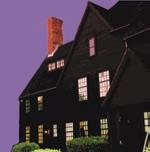










ometimes beauty is in the eye of the beholder. Other times, it’s simply there.
In Manchester, Vermont—wedged between mountains and divvied up into two distinct communities—it takes a visitor only minutes to see how stunning the landscape can be.

Oozing charm and low-key elegance, pristine Manchester Village is crisscrossed with white marble sidewalks—a seeming extravagance, except that the materials were handy (local quarry) and abundant. Mount Equinox, at 3,848 feet, dominates one side of Route 7A, which bisects the town; opposite, the Green Mountains shimmer with a mistiness that’s practically Arthurian. A short distance away, Manchester Center kicks in: It’s a hub of commerce, with a fine independent bookstore and a number of appealingly disguised designer outlets, from Ann Taylor and Armani to J. Crew (though just up the road there’s a major nod to homegrown retailing in the form of the Vermont Country Store’s corporate headquarters).
For pure beauty, there’s the legendary Battenkill River. It has challenged trout fishermen for decades, and its location marks the epicenter of American flyfishing (Orvis lives here, since its founding in 1856). Meanwhile, the mountains so entranced Abe
The hills are alive with hiking, fishing, and a bounty of farm-to-table eateries. And, of course, some of the best outlet shopping in New England.PHOTOGRAPHS BY MARK CLOCKWISE FROM FAR LEFT : Sited on a “gentleman’s farm” built for a wealthy Chicago industrialist in 1902, the Wilburton Inn today provides a historic home base for visitors to Manchester; a nuts and berries salad at Ponce Bistro, a downtown eatery that mixes international influences with farm-fresh ingredients; a view from the Wilburton Inn’s terrace; master craftsman Charlie Hisey, who has been handmaking Orvis fishing rods for over a decade.
Lincoln’s son, Robert, who vacationed here as a boy, that he built his summer mansion, Hildene, high on a Manchester hilltop, surrounded by views and breezes, there for all to visit today.


I almost felt I’d replicated Hildene life when I checked into the 1902 Wilburton Inn, run by the Levis family—except that this union of artistic invention and gourmet breakfasts was also one of the most mindfully stimulating stays I’ve ever experienced, on an estate dotted with sculptures, ringed with mountains, and vaguely reminiscent of The Sound of Music These hills really are alive.
And while the Battenkill’s catchand-release policy means you won’t be fishing for your dinner, there are more than two dozen eateries here, ranging from New American cuisine to Mexican street food. You can even stave off hunger with wood-fired
pizza while debating which Persian rug to buy at Depot 62.
A roundabout in the heart of Manchester Center sends drivers spinning off to the four compass points, with a different experience down each road. Take 7A south for an upscale ramble to Manchester Village, settled in 1761. It bristles with massive “cottages” of every era and description, set back on deep lawns and anchored by the famous Equinox Resort. Just beyond the village, the Mount Equinox Skyline Drive delivers hairpin turns and vertiginous views—well worth the $15 toll—courtesy of the silent Carthusian monks who own it. Back in town, turn north to delve deeper into Manchester Center, or east, on Route 11, into a swarm of shops. To the west, it’s pretty Dorset and the cool, sparkling swimming waters of its marble quarry.
The approach is majestic: At the end of a mile-long dirt road, the 1905 Georgian Revival mansion sits pressed against the sky. By the time Robert Lincoln built Hildene, he was the wellheeled president of the Pullman Car Company. “He saw this as his ancestral home,” a docent at the threshold explains, then points to a small brick outline laid into the front lawn. “That’s how big Abraham Lincoln’s log cabin was.” No question, this is the place to be a volunteer—in summer, the garden is a riot of peonies waiting to be weeded, with goats to groom at the farm.

Where else would I want to hang out? Well, there’s the Southern Vermont Arts Center, set on more than 100 acres, where sculptures dance over broad fields and paintings enliven a 28-room mansion. All in one place, you can sample art classes, performances at the 400-seat Arkell Pavilion, and exquisite home-style Japanese cuisine at the seasonal Café Sora, which cooks up its own kind of art.
Manchester’s farm-to-fork activity comes in all shapes and sizes. At the tiny Silver Fork—six tables, five bar seats—I snagged the last barstool and ordered a vibrant little silo of salmon wrapped in spinach and phyllo. “Wednesday Farm Night” at the Wilburton Inn enlists fresh veggies and bread from the Levis family’s Earth Sky Time farm. Ponce Bistro chef-owner Ron Rodriguez has fea-
tured his mom’s Puerto Rican rice and beans since he opened (“She taught me to cook at the age of 4,” he told me). At the Perfect Wife, Manchester native Amy Chamberlain relies on goodies such as Hildene Farm Havarti to create her “freestyle” cuisine; I tucked into meltingly good sesame-crusted yellowfin tuna (“the house favorite since we opened in 1996”). Then there’s Cilantro, which plates up Mexican street food that’s local and abundant.
Designer outlets line up on Route 11— Eileen Fisher rubs elbows with Ralph Lauren, Le Creuset nudges Bass. At Orvis, over on Route 7A, master craftsman Charlie Hisey, 62, carries on the store’s tradition of hand-making bamboo fly rods. (You can learn how to use one across the street, at Orvis’s famous fly-fishing school.) Next door to Orvis, the American Museum of Fly Fish-
ing gave me a feel for why so many are devotees of the sport. The flies are tiny works of art, and it’s fascinating to see Ernest Hemingway’s Hardy Fairy rod, alongside other celebrity fly-fishing paraphernalia such as Bing Crosby’s hat and pipe. Northshire Bookstore, an independent force majeure since 1976, touts “the joy of serendipity.” That translates into 10,000 square feet of books, gifts, a café, and an entire floor devoted to kids. Also, I caught a glimpse of John Grisham, about to do a reading. Serendipity indeed.

A world away from time, I raise my left forearm. From deep inside the forest, a






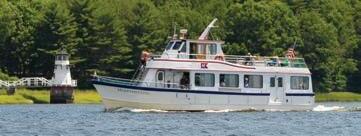

 Green Mountain Falconry School owner Rob Waite, shown with Elmer the Harris hawk, got started in falconry when he was just 14.
Green Mountain Falconry School owner Rob Waite, shown with Elmer the Harris hawk, got started in falconry when he was just 14.
hawk swoops, landing on the leather gauntlet encasing my arm. I feel like a knight in Ladyhawke . You haven’t gone medieval until you’ve stared a hawk in the eye. Side-stared, anyway. “Don’t worry, they can’t sense fear,” says a grinning Rob Waite, owner of Green Mountain Falconry School. We are strolling through the woods behind his school at Boorn Brook Farm, once the home of famed Vermont painter Ogden Pleissner—only I’d bet that Pleissner never imagined what it would be like to have a captivebred hawk like the glorious Monty follow him through the woods. “Hold your arm like this,” Waite demonstrates. And Monty lands.


Dr. Albert Levis bought the Wilburton Inn 30 years ago, when he turned 50, envisioning a place to integrate his theories of art and science. “It was like having another sibling,” said son Max, who was 2 at the time. Today, with 27 rooms and five houses dotting 30 acres, this big-hearted family-run estate is widely considered one of the top mansion hotels in the country. Nearby, in the heart of Manchester Village, the historic Equinox tempts guests with fly-fishing and a par-71 golf course. In fact, this small town offers one of the highest concentrations of fine country inns around.


At the time of our visit, a threebed Victorian on Main Street in Manchester Center, with open kitchen and deck, listed at $399,000. An airy four-bed contemporary Cape in Manchester Village, with slate patio and views of Mount Equinox, was selling for $498,000. Anglers could scoop up a Manchester Center three-bedroom house, built in 1914 on the West Branch of the Battenkill, for $275,000.
To see more photos from our visit, go to newengland.com/manchester-2018.
ON PUBLIC TELEVISION STATIONS NATIONWIDE (check local listings)
MASSACHUSETTS: Sundays at 12:30pm on WGBH 2 & WGBY
NEW HAMPSHIRE: Sundays at 12:30pm on NHPBS (Channel 11.1)
CONNECTICUT: Sundays at 6pm on Connecticut Public Television (repeats on Saturdays at 11am)
RHODE ISLAND: Mondays at 7:30pm on Rhode Island PBS
MAINE: Thursdays at 8:30pm on Maine Public Television (repeats on Saturdays at 10:30pm)


VERMONT: Wednesdays at 7:30pm on Vermont PBS


CATCH UP ON SEASON 1 AT WEEKENDSWITHYANKEE.COM
BROUGHT TO YOU BY THE GOOD PEOPLE AT:
FUNDED BY:
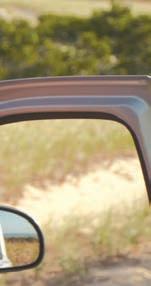
LOOK FOR ERIN ON THE NEW SEASON OF WEEKENDS WITH YANKEE
In the American culinary world, it could rightfully be argued that 2017 was the year of Erin French, as the chef and her restaurant, the Lost Kitchen, earned a celebrity buzz usually associated with names like Chang, Shire, and Pepin. When French opened her reservation line that spring, more than 10,000 requests came in. e New York Times came calling; Martha Stewart did, too. It’s not di cult to see why. With the Lost Kitchen, which rst opened in 2014, French has created something uniquely her own. Local avors and DIY pride are its building blocks. Her cuisine draws on food grown by area farmers; she sta s the place with her friends.



e attention and adoration has continued. French’s 2018 reservation inquiries exceeded last year’s, and in March her cookbook, e Lost Kitchen: Recipes and a Good Life Found in Freedom, Maine, was named a James Beard Award nalist. We recently caught up with the award-winning chef, who is featured in season 2 of Weekends with Yankee.
WWY: Now that you have some distance from the 2017 season, what do you make of everything that happened?
EF: I’m continuing to process it, and it continues to astound me. I never would have imagined it would turn into what it did. It’s far beyond anything I ever dreamed of, or planned. But I don’t even have the time to look back on it, because it’s continuing, it’s not over, it keeps going. It’s making me a stronger person, that’s for sure.
WWY: For this year’s reservation process, you required people to mail in a card, rather than call. What was your thinking behind the change?
EF: We had to make a change, but I never wanted it to be a computer system, because in two seconds the whole thing would have booked out. That’s not going to be satisfying for anyone. So by asking people to mail in a card we still keep it personal, and it takes the weight off us. I know this is not the way people typically do things. I’m not saying anyone has to do this. But this is what works for us.
WWY: Do you ever foresee a time when you’ll open another Lost Kitchen, or another place that features your food, so that more people can have access to your cooking?
EF: No, I don’t. One thing I realize is that I’ve created something that is completely unsustainable businesswise. Because if I get sick, the restaurant closes for the night. I have put so much of what has to happen in an evening on my plate and on my shoulders. I know that’s not a wise decision, and I know that nothing will last forever. But the last thing I want to do is have some offshoot that other people are running, trying to make it look like me when it’s not me.
I want to do this for a while. That’s why I take the big chunks of time off in the winter and why we do four days during the summer. Right now I’m having the time of my life. On those evenings when I get to cook with my best friends, that’s the best. As long as I can do this, I’m going to keep going.


here’s a tempo to life in the digital age that the wilderness defies. Join the resistance by bunking down in the midst of a pristine landscape, where unfettered waters and oldgrowth trees hold more wisdom than a flood of texts or a backlog of email. The following lodges make outdoor immersion accessible and unforgettable—no gear hauling or roughing it required.
Attean Lake Lodge
Board the shuttle boat, and you’re off on an allinclusive island escape that’s utterly wild in a Maine—not Caribbean—way. The blueberryfringed shores of 2,880-acre Attean Pond are undeveloped; the game fish–filled waters, untamed. And this fourth-generation-run retreat is a pinch-yourself place where vacations haven’t changed much since 1905. Unscheduled days dissolve into intensely starry nights, and forever memories and friendships are sparked over cookouts and beach bonfires,
lobster feasts and puzzle-building marathons. You’ll get the hang of igniting your cottage’s gas lamps … of motorboating to hiking trails such as the vigorous climb up Sally Mountain … of drifting to sleep as gentle waves murmur and loons trill. Jackman, ME. 207-668-3792; atteanlodge.com






Atop Massachusetts’s Mount Greylock, with 12,500 acres of leafy wilderness spilling out below, there’s a wizardry school called Ilvermorny, aka North America’s own Hogwarts (if you believe J.K. Rowling’s short story, that is). But the culinary sorcery that happens nightly atop Greylock, in chef John Dudek’s kitchen at Bascom Lodge, is conjured by a whisk, not a wand. Even if you haven’t booked a bunk or private room in this 1930s summit house, built by the Civilian Conservation Corps from fieldstone and red spruce plucked from the mountain’s slopes, make reservations for sunset drinks and a globally inspired, locally sourced three-course dinner. In this land of rare birds and black bears, of quietude and starry nights, you’ll keep company with Appalachian Trail hikers and escapees from every sort of Muggle grind. Adams, MA. 413-7431591; bascomlodge.net










Comforting aromas, local antiques, the great room’s stone fireplace— you’ll feel so at home here, you just might roll out of your custom-built log bed and head to breakfast in your jammies. Khristine and Jameson Boucher have taken a 1920s-built sporting lodge from foreclosed to fashionable, and their dreams for expansion are as vast as the 1,000-mile-plus network of off-road trails directly outside the door. Local outfitters will deliver your rental ATV or snowmobile to the lodge. You’re steps away from fishing the Androscoggin, and an expert tip from Jameson away from spying a
moose. And even if you opt for a campsite at this 31-acre outpost, the resort’s rustic tavern is your place to swap North Country stories. Dummer, NH. 603-449-2319; deermountainlodge.com
Medawisla Lodge and Cabins
When you reach the village of Kokadjo (population: “not many”), the pavement ends, and your detachment from the world begins. You’re 17 dirtroad miles from the Appalachian Mountain Club’s pinnacle property in Maine’s 100-Mile Wilderness: a solarpowered, pondside complex of cabins, bunkhouses, and a central lodge. Rebuilt and reopened in 2017 with features that make a remote getaway handicapped-accessible, Medawisla— which means “loon” in Abenaki— carries on Maine sporting camp traditions such as all-you-can-eat, familystyle dining. Wake before dawn to paddle out to where the moose graze. Cast for rare native brook trout. Hike, mountain bike, cross-country ski. Play board games with the kids. The only waste-of-time activity here is hunting for Wi-Fi or a cellphone signal. Greenville, ME. 207-349-0437; outdoors.org
Where would a teddy bear sleep in the wild? This luxe log home on 86 forested acres is a posh and playful den for lowkey adventurers. Antiques, art, and handcrafted wood furnishings bring the lodge rooms’ themes to life; spalike bathrooms redefine “creature comfort.”
A private, two-story, eco-sensitive treehouse is the dreamiest escape. Pluck a rainbow trout from the pond stocked with keepers; cook it in the woodsy custom kitchen. Hike up to the windowfilled, mountain-view Sky Loft gazebo; an indoor hot tub awaits upon your return. You’re in a region known for outdoor sports, farm-to-table dining, and beer, but there isn’t much else your soul needs that you won’t find right here. Waterbury, VT. 802-244-5378; moosemeadowlodge.com
ven with just a couple of looms operating, the noise is already overpowering. Standing in the weave room of the Boott Cotton Mills Museum in downtown Lowell, Massachusetts, surrounded by dozens more looms that aren’t yet running, I can only imagine the din of days gone by.

As pulleys and poles spin overhead, the looms—once hydro-powered, now motorized—get up to speed. What started as a wall of sound morphs into a steady throb that can be felt as much as heard, the way the drums of a passing marching band can seem to momentarily co-opt one’s heartbeat.
In the Boott mills’ mid-19th-century heyday, hundreds of workers walked these floors. Today, two lone staffers are at the controls, demonstrating the looms for visitors and weaving fabric to be sold in the museum gift shop. Mike Auger is a relative newcomer at Boott, but he has a veteran’s familiarity with the machines, having operated similar ones at a fiberglass mill in nearby Haverhill in the 1980s. With him is John O’Keefe, who has worked here for more than two decades. They move steadily from machine to machine, making adjustments and answering questions.
Though New England’s textile boom is long past, its echoes still rumble through Lowell
These looms are not original to the Boott mills, which were cleared out long ago. Salvaged from a Midwestern mill, they were made by the Draper Corporation of Hopedale, Massachusetts, once the largest manufacturer of power looms in the nation.


With its location on the Merrimack River, Lowell was a planned industrial city, inspired by the factory towns of Europe. The steady employment—as hard as it was—offered by its water-powered textile mills had tremendous appeal to a workforce made up primarily of recent immigrants and young men and women from nearby farms.

A staircase at the far end of the weave room leads to upstairs displays that chronicle the rise and decline of the Boott mills as well as the industrial economy of Lowell in general. There is no sugarcoating of history here, a fact accentuated by video clips in which workers talk about the harsh realities of mill life.
One story that stuck with me was that of a young boy whose family worked in the Lowell mills in the 1940s. Each day he left school at lunchtime, walked home, and made lunches for his mother, father, and godfather. He brought one lunch to the mill where his mother worked, then walked to the mill where his father and godfather worked. After delivering their lunches, he collected money from other workers to buy food for them. By the time he came back from that errand, his father and godfather were done eating. He collected their leftovers, went back to the other mill to collect his mother’s leftovers, then walked home, ate his own lunch, and finally returned to school. All this, because the mills were so badly infested with cockroaches that the










Now that the snowflakes have melted at the legendary ski resorts of Sugarbush and Mad River Glen, the allure of the Valley shifts to scenic hikes and golf outings, mountain biking, a vibrant arts scene, and exceptional locally sourced dining. From the small town of Warren, with its landmark general store, and its mile-long-plus stretch of scenic Route 100 dotted with art and craft galleries, to the heart of Waitsfield and its many enticing restaurants, the Valley offers a relaxed vibe that will draw you back time and again.
DO Saddle up in the village of Fayston and discover a unique way to roam the countryside. Leisurely trail rides or multi-day treks begin at the picturesque Vermont Icelandic Horse Farm. One of the oldest horse breeds in the world, the Icelandics make ideal saddle horses. Though rides and treks require advance reservations, the farm welcomes fans of the breed to come by and admire these beautiful horses at play.

802-496-7141 • icelandichorses.com

SHOP Stop in and pay homage to the many food entrepreneurs of the Valley at Mad River Taste Place in Waitsfield—a retail store and gathering place for enjoying the artisan food and drink products produced nearby. With much of the region’s land conserved for farming, locally sourced products are abundant and celebrated. Cheeses, butters, breads, chocolates, charcuterie, spirits, and more are here to sample and purchase.

802-496-3165 • madrivertaste.com
DO What to do amid so much natural beauty? Get outdoors and take a hike! The Long Trail crosses Vermont’s highest peaks with a slew of side trails for those with just a short amount of time. Make your way along the Sunset Ridge Trail to stand atop Sunset Ledge. Just a 2.2-mile round trip (though with some steep ascents) rewards you with dramatic views toward Lake Champlain and the Adirondacks. madrivervalley.com/listing/ sunset-ledge

Mad River Taste Place

89 Mad River Green, Waitsfield madrivertaste.com
802-496-3165
American Flatbread
46 Lareau Rd., Waitsfield americanflatbread.com

802-496-8856
Eagles Resort
169 Eagles Rd., Waitsfield eaglesresortvt.com
802-496-5700

WHEN YOU GO: For colorful creations both functional and beautiful, peek into Mad River Glass Gallery in Waitsfield. Stand atop the viewing platform to see artisans Melanie and David Leppla at work, blowing and shaping hot glass into exquisite wares. madriverglassgallery.com; 802-496-9388
WHEN YOU GO: For colorful creations both functional and beautiful, peek into Mad River Glass Gallery in Waitsfield. Stand atop the viewing platform to see artisans Melanie and David Leppla at work, blowing and shaping hot glass into exquisite wares. madriverglassgallery.com; 802-496-9388
workers could not bring a lunch and protect it while at their machines.
At the heart of the Boott mill complex is a courtyard, with a clock tower whose steel bell would chime six times a day, serving as the mill’s time clock. Workers arriving after the morning bell would find the gates locked and be forced to enter through the adjacent counting house, where the mill agent held the power to dock their pay or dismiss them outright.
White Horse Inn

999 German Flats Rd., Waitsfield whitehorseinn-vermont.com
802-496-9448
802-496-9448
Hyde
Hyde Away Inn
1428 Mill Brook Rd., Waitsfield hydeawayinn.com
802-496-2322
802-496-2322
Though Lowell’s textile boom lasted for more than a century, the industry here and throughout New England experienced a sharp decline after World War II. Boott Cotton Mills closed its doors in 1955; by the 1960s, many of Lowell’s mill buildings were abandoned.
Warren Store 284 Main St., Warren warrenstore.com

802-496-3864
802-496-3864
The Inn at Round Barn Farm 1661 E. Warren Rd., Waitsfield theroundbarn.com


802-496-2276
802-496-2276
But in 1978, thanks in part to the support of Lowell native Paul Tsongas, then a U.S. representative, the Lowell National Historical Park was created, preserving a large swath of industrial infrastructure downtown. The park encompasses not only the Boott mills but also the Pawtucket Dam and Gatehouse, the Suffolk Mill Turbine and Powerhouse, the Kirk Street Agents House, the Mill Girls and Immigrants Boardinghouse, and the Lowell Canal System. There’s the Patrick J. Mogan Cultural Center, which focuses on the lives of Lowell’s many generations of immigrants, and tours on working streetcars and, in warmer months, canal tours conducted by boat.
Sugarbush Soaring
Sugarbush Soaring 2355 Airport Rd., Warren sugarbushsoaring.com

802-496-2290
802-496-2290
Vermont Icelandic Horse Farm
3061 N. Fayston Rd., Waitsfield icelandichorses.com

Vermont Icelandic Horse Farm 3061 N. Fayston Rd., Waitsfield icelandichorses.com
802-496-7141
802-496-7141
Before leaving, I make another pass through the weave room, where Auger and O’Keefe are running the machines for a group of school kids. Still feeling the throb of the looms as I exit, I think of a memory O’Keefe shared from his youth, one of walking the streets of Lowell just after World War II and hearing the thrum of the mills. It was everywhere back then—the sound of the city, the literal pulse of Lowell.
115 John St., Lowell, MA. 978-970-5000; nps.gov/lowe
 Cheese aficionados can meet the faces behind the fromage—like Woodcock Farm’s Samantha Fischer and Frank Hanes—at the Vermont Cheesemakers Festival.
Cheese aficionados can meet the faces behind the fromage—like Woodcock Farm’s Samantha Fischer and Frank Hanes—at the Vermont Cheesemakers Festival.
JULY 14
View one of the few surviving original-printing copies of the Declaration of Independence at the American Independence Museum, then settle in for a dramatic reading of our nation-defining document and historical reenactments. A fifeand-drum performance will set the tone for a lively afternoon of craft sales, kids’ activities, fireworks, and fine food. Exeter, NH. 603-7722622; independencemuseum.org
RHODE ISLAND
JULY 14–15
Bring your own kite and join in the fun, or just kick back and watch a flock of colorful wind riders dance over the coastal landscape of Brenton Point State Park. Some concessions are available, but picnicking is welcome, too. Admission and parking are free. Newport, RI. 401-324-9335; newportkitefestival.com
JULY 20–22
Since its launch in 1992, this free festival has played host to many of the biggest names in jazz (Brubeck, Mann, Tyner), along with up-andcomers from the New England scene, regularly drawing crowds of 50,000plus to historic Bushnell Park. Check the website for this year’s lineup. Hartford, CT. hartfordjazz.com
AUG. 31–SEP. 2
Set sail for picturesque Camden Harbor, where a fleet of eight traditional tall ships are the focal point of a three-day celebration featuring fireworks, music, contests, and a grand “parade of sail” past the mile-long Rockland breakwater. Camden, ME. 207-236-4404; sailmainecoast.com
AUG. 25–26
You don’t get to see rare vintage motor yachts and sailboats like these every day! Set aside plenty of time for gawking in between chatting with captains and crew members, shopping for crafts, and bopping to the music. Among the highlights is a boat parade on Sunday. Salem, MA. 978-448-6757; boatfestival.org

AUG. 12
Follow the curds and whey to this summer highlight, which lets you sample local cheeses and meet the folks who make them. There’s also a generous helping of local beer, wine, cider, and food, along with workshops and cooking demos. Best of all, it takes place at lovely Shelburne Farms, on the shores of Lake Champlain. Shelburne, VT. 866-261-8595; vtcheesefest.com
—Compiled by Joe Bills
For more best bets around New England, see p. 82
B H b
JULY 14: MIDDLEFIELD, Blueberry Fest. Summer at Lyman Orchards brings this celebration of berry picking, complete with pie eating contests, games, live music, wagon rides, and, of course, an array of delectable treats. 860-266-5472 ; lymanorchards.com
JULY 14–15: WESTPORT, Fine Arts Festival. In Westport’s inviting downtown you’ll find works from 140-plus juried artisans: paintings, photography, sculpture, jewelry, and more. Live music and street performers provide a backdrop to the browsing. 203-5058716; westportfineartsfestival.com
JULY 28–29: GOSHEN, Litchfield Jazz Festival. Sway to the music all weekend at the town fairgrounds. Besides talented performers, there will be arts and crafts, kids’ activities, and good food, all benefiting the educational mission of Litchfield Performing Arts. 860-361-6289; litchfieldjazzfest.com
AUG. 9–12: NORWICH, Podunk Music Festival Dodd Stadium will be grooving to some of the finest bluegrass music anywhere. The lineup has local, regional, and national groups, plus free workshops, traditional crafts, storytelling, and jam sessions. 860283-0443; podunkbluegrass.net
AUG. 18: HARTFORD, Riverfront Dragon Boat and Asian Festival. With more than 70 teams racing this year, it’s easy to see that Hartford has become one of the premier dragon boat venues in the country. Between races, there’s a full slate of authentic Asian music, dance, and more. 860-713-3131; riverfront.org
AUG. 18: MILFORD, Milford Oyster Festival

There’s a music bill that showcases nationally known headliners, and rounding out the fun are an artisans fair, kids’ rides and games, and a shucking contest—but the true stars of this show are the oysters. milfordoysterfestival.com
AUG. 23–26: BROOKLYN, Brooklyn Fair. The food, the animals, the midway, the entertainment, the arts and crafts, the contests—everything you want at a county fair, you’ll find right here, at the region’s oldest agricultural festival. 860-779-0012; brooklynfair.org


JULY 13–15: LISBON FALLS, Moxie Festival
From talent competitions to chugging contests, this weekend celebration of Maine’s quirky soft drink is chock-full of “wicked cool” Moxie fun. Enticements include a fireworks show, a concert in the park, a car show, a petting zoo, and a block party. 207-3533000; moxiefestival.com
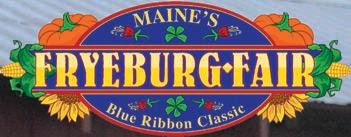
JULY 13–22: WATERVILLE, Maine International Film Festival . Representing the best of both American independent and international cinema, this 10-day festival showcases nearly 100 films and spotlights some of New England’s most innovative filmmakers. 207-861-8138; miff.org
JULY 26–28: AUGUSTA, Maine Quilts . The Pine Tree Quilters Guild presents a quilting bonanza at the Civic Center, with more


than 500 quilts on display that range from antique to contemporary. 207-216-7358; mainequilts.org
JULY 28: SKOWHEGAN, Artisan Bread Fair


Visit the Skowhegan State Fairgrounds to sample breads, pastries, and Maine-made foods, including pizza from a wood-fired oven, during this most popular day of the Maine Grain Alliance’s annual Kneading Conference. kneadingconference.com
AUG. 1–5: ROCKLAND, Maine Lobster Festival.

Come ready to eat your fill as Harbor Park hosts five days of fun, during which more than 20,000 pounds of lobster will be eaten. In between feasts, check out the “sea goddess” coronation, live entertainment, Navy ship tours, cooking contests, and more. 800-576-7512; mainelobsterfestival.com
AUG. 3–5: UNION, Maine Antiques Festival
Vintage items abound at the state’s largest antiques festival, which draws more than 200 dealers to Union Fairgrounds. Discover jewelry, maps, prints, folk art, furnishings, ceramics, paintings, and more. 207-2213108; maineantiquesfestival.com
AUG. 17–19: MACHIAS, Wild Blueberry Festival . Celebrate the Down East blueberry harvest on the grounds of the Centre Street Congregational Church, where you’ll find cooking contests, blueberry-themed performances, and the blueberry-pie eating contest that was once featured on ESPN. 207-2556665; machiasblueberry.com
JULY 23–29: BARNSTABLE, County Fair. A Cape Cod tradition since 1844, this classic New England fair has animal shows, a petting zoo, 4-H demonstrations, horticulture displays, live music, arts and crafts, and amusement rides. barnstablecountyfair.org
JULY 27–29: LOWELL, Folk Festival . Enjoy authentic world cuisine, crafts, and music as folk artists from across the country and around the world take the stage at Dutton Street Dance Pavilion and Boarding House Park. 978-275-1764; lowellfolkfestival.org

JULY 28–AUG. 4: WOODS HOLE, Woods Hole Film Festival . This eight-day showcase of independent film is packed with daily screenings, workshops, panel discussions, readings, parties, and awards ceremonies. 508-495-3456; woodsholefilmfestival.org
AUG. 3–4: IPSWICH , Roaring Twenties Lawn Party. Held at the historic Crane Estate, this festive get-together invites you to don your finest Gatsby-esque apparel and come enjoy live music and dancing, performances, lawn games, a vintage fair, and more. 978-8847690; roaringtwentieslawnparty.org

AUG. 4–5: STURBRIDGE, Redcoats to Rebels
Old Sturbridge Village presents the region’s largest military reenactment, with nearly 1,000 participants. See the village transformed into a military camp from the time of the War for Independence, and learn what it was really like for those who fought to win America’s freedom. 508-347-3362; osv.org
AUG. 17–26: MARSHFIELD, Marshfield Fair
Come to the Marshfield Fairgrounds to

experience an agricultural fair that has been a community tradition for a century and a half, with midway rides and games, livestock contests, a vintage car show, and more. 781834-6629; marshfieldfair.org
AUG. 23–26: BOSTON, Saint Anthony’s Feast Now in its 99th year, this Italian street festival will keep you entertained with parades, singers, and other diversions as you stroll through the historic North End and sample the offerings of nearly 100 push-cart vendors. 617-723-8669; stanthonysfeast.com


JULY 19–22: STRATHAM, Stratham Fair Stratham Hill Park provides the setting for this old-fashioned fair and its lineup of live entertainment, 4-H exhibits, rides and games, and the crowning of Miss Stratham Fair. 603-772-4977; strathamfair.com


JULY 28: WOLFEBORO, New England Antique and Classic Boat Show . Continuing a Lake Winnipesaukee tradition that dates back to the 1920s, the town docks welcome a gathering of more than 80 vintage wooden boats. necacbs.org


AUG. 1–4: THORNTON, Pemi Valley Bluegrass Festival . Enjoy music in the mountains at the Sugar Shack Campground with a bevy of performers, including the awardwinning Gibson Brothers. 603-239-2238; pemivalleybluegrass.com

AUG. 4–5: ORFORD, Flea Market. Nearly 200 vendors from at least 10 states converge on the town common for two days of bargain shopping and treasure hunting to benefit the Orford Fire Department. 603-353-4855
AUG. 4–12: NEWBURY, League of NH Craftsmen’s Fair. This Mount Sunapee Resort event offers up arts and crafts at more than 200 exhibit booths, as well as demonstrations, interactive activities, music, and food vendors. 603-224-3375; nhcrafts.org

AUG. 9–11: MANCHESTER, New Hampshire Antiques Show . Explore the finds of more than 60 dealers—including furniture, clocks, folk art, prints, textiles, woodenware, glassware, pottery, and ceramics—all arranged in display “rooms” at the Radisson Hotel. nhada.org

AUG. 19: HENNIKER, Fire on the Mountain Chili Fest. Restaurants and amateur chili makers compete for top prizes at this Rotary fundraiser held at Pat’s Peak Ski Area. Sample chili while enjoying a car show, live entertainment, and more. chilinewhampshire.org

JULY 12–15: NEWPORT, Black Ships Festival Commemorating the 1854 treaty that made Japan and the U.S. trading partners, this festival embraces many aspects of Japanese art and culture, from music and tea ceremonies to origami and martial arts. 401-847-7666; blackshipsfestival.com


JULY 20–22: KINGSTON, South County Hot Air Balloon Fest. Take to the skies as the University of Rhode Island athletic fields host this celebration of community, music, and hot air

Lakeside cottages in Vermont’s scenic Northeast Kingdom. Relax on your porch and enjoy the view of beautiful Lake Willoughby or take advantage of the many outdoor activities. Cottages sleep five, with two bedrooms, full kitchen, fireplace, and porch facing the lake. 800-757-3072

www.vermontmountainlake cottages.com

undeveloped mountain lake, offering boating, sailing, kayaking, canoeing, hiking, wildlife and bird watching, and a full American plan. The ultimate vacation spot.
207-668-3792
www.atteanlodge.com
DownEast Acadia is a place of bold, rocky coastlines and hidden pebble beaches. The highest tides in the world begin here, and wildlife abounds. This is a place for artists, adventurers, families, and solitude seekers. 888-665-3278

www.downeastacadia.com
Open year-round. Gateway to the White Mountains. Features 140-foot sandy beach on Squam Lake. Seven cottages, our Lodge, or family apartments. Kitchens and fireplaces and outside campfires. Great attractions and restaurants close by. Email us at: cottageplace@gmail.com

603-968-7116
www.cottageplaceonsquam.com
With 6,000 lakes and ponds strung like gleaming gems across the region, there is no end to watery bliss. Take a swim or explore by canoe or kayak. Enjoy the breeze in a sailboat or fishing along shore.


888-688-0099
www.mainelakesandmountains.com
Russell Orchards Farm & Winery
Ipswich, MA
New London, CT
Want a brilliant way to spend a couple of hours? Cross Sound Ferry’s lighthouse cruises from New London aboard one of our highspeed vessels bring you up close to iconic lighthouses, historic forts, and ritzy mansions! The 2018 season runs through October. 860-444-4620

www. lighthouse.cruises
Family-owned farm and unique store featuring their own produce, local goodies, and ice cream. Animal barnyard, u-pick fruits in season. Specializing in award-winning fruit wines, with wine tastings FridaySunday. From-scratch bakery serving cider donuts and fruit pies. A beloved tradition for families and a must-see destination.
978-356-5366
www.russellorchards.com
LEAGUE OF NH CRAFTSMEN
AUGUST 4-12, 2018

MT SUNAPEE RESORT, NEWBURY, NH
$2 off full price admission.
Use promo code “YANKEE” online, or present this ad at the gate. Limit
Cannot be combined with other offers.
SHOP OUR EIGHT NH FINE CRAFT GALLERIES:

Center Sandwich, Concord, Hanover, Hooksett, Littleton, Meredith, Nashua, North Conway
VISIT OUR CURRENT EXHIBITION AND OUR PERMANENT COLLECTION MUSEUM
49 S. Main St, Suite 100 | Concord, NH

LEARN MORE AT NHCRAFTS.ORG
GREAT OPPORTUNITY to own pro table, TURN-KEY, Antique Co-op Business and Quaint 1860 farmhouse nestled in beautiful historic Old Wilton Center Business.

A Visit to Wolfeboro Can Be… …Whatever You Want It To Be

balloons, with games, rides, barbecue, and more. southcountyballoonfest.com
JULY 28–29: MIDDLETOWN, The Newport Show. More than 40 top dealers converge on St. George’s School, with plenty of paintings, furniture, folk art, and jewelry. 401846-2669; thenewportshow.com
AUG. 3–5: CHARLESTOWN, Seafood Festival
This gastronomic extravaganza at Ninigret Park highlights the state’s best seafood and includes amusement rides, a car show, a petting zoo, raffles, and music. 401-364-3878; charlestownrichamber.com
AUG. 7–12: STATEWIDE, Rhode Island International Film Festival . Expect gala celebrations, premiere screenings, educational programs, and award ceremonies in addition to a lineup of the year’s most creative films. 401-861-4445; film-festival.org
AUG. 15–19: RICHMOND, Washington County Fair. The state’s largest agricultural fair presents concerts, a giant midway, horse and tractor pulls, a farm museum, delicious foods, and more at the county fairgrounds. 401-539-7042; washingtoncountyfair-ri.com
AUG. 18: JAMESTOWN, Fools’ Rules Regatta
After the cannon fires, participants have two hours to convert “non-marine items” into a sailing vessel capable of transporting them across the finish line. jyc.org
JULY 12–15: BRANDON, Basin Bluegrass Festival . Bluegrass pickin’ and the rolling green hills of Vermont combine for a weekend of family fun at the end of Basin Road, featuring such bands as Remington Ryde, Larry Efaw and the Bluegrass Mountaineers, and Moonshine Falls. basinbluegrassfestival.com
JULY 14: CRAFTSBURY, Antiques and Uniques Festival. More than 100 vendors take to the town common, as live folk music and roaming buskers add to the ambience. 802-5862823; townofcraftsbury.com
JULY 26–29: BURLINGTON, Lake Champlain Maritime Festival. Take part in a final salute to summer at this waterfront celebration featuring live music, paddleboard rides, an antique boat show, and plenty of long boat, canoe, kayak, and dragon boat demonstrations. 802-482-3313; lcmfestival.com
Period 1860 House with 4,380 sq. . of dealer rented space ~ $323,000 Turnkey pro table business with great brand value ~ $175,000
Yankee Magazine Editor’s Choice Award: 2016 Best Vintage Decor
Waterfront Shopping, Dining and Lodging. Free Public Beaches. Boat Rentals. Golf. Art Galleries. Paddleboarding. Concerts. Fishing. Cruises. Trolley Tours. Theatre. Scuba Diving. Four Museums. Kayaking. Jet Skis. Farmers’ Market. Fairs. Sunsets. You can do everything…
...or nothing at all.
See “101 Things To Do in Wolfeboro” at wolfeborochamber.com 603-569-2200




Sponsored by wolfeboronh.us
Wolfeboro Economic Development Committee “Work and Live Where You Love to Play”
JULY 27–29: WOODSTOCK, Bookstock . Meet an array of writers as they present their work, then stock your shelves at the used and vintage book sale and take in performances on the beautiful town green. bookstockvt.org
AUG. 3–5: BENNINGTON, Southern Vermont Art and Craft Festival . Bennington’s Art Week kicks off with a feast of handmade crafts, original art, live music, and gourmet food offerings, plus a wine and craft beer tent, all at Camelot Village. 802-316-5019; craftproducers.com
AUG. 24–SEP. 2: ESSEX JUNCTION, Champlain Valley Fair. Get in on the fun at the Champlain Valley Exposition fairgrounds with garden exhibits, food competitions, horse shows, and concerts. Performers include the band Old Dominion and comedian Gabriel Iglesias. 802-878-5545; cvexpo.org
BEST LUXURY INN
THE STEAMBOAT INN
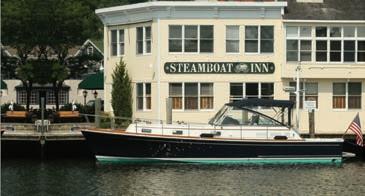
MYSTIC, CT
Stay in historic downtown Mystic in luxurious accommodations directly on the river. Many fine restaurants and shops are just steps away. Ideal for a romantic getaway! Enjoy a sunset cruise on the schooner Argia, sailing daily from our wharf.
860-536-8300
steamboatinnmystic.com
RHODE ISLAND RED FOOD TOURS
PROVIDENCE/NEWPORT, RI
Discover big eats in the smallest state while walking, sipping, and eating your way through historic neighborhoods in Providence and Newport. If you like seeing architectural gems and listening to historic tales, this fun food experience is for you or your private group. April–November.



866-736-6343
rhodeislandredfoodtours.com
BEST WATERFRONT DINING
COAST GUARD HOUSE RESTAURANT
NARRAGANSETT, RI
Sea Food Sea Friends Sea View
The Coast Guard House gives a whole new meaning to waterfront dining. Perched directly over the Atlantic, it offers an unparalleled view with many dining options. While the view is spectacular, the service, food, and beverage are what will keep you coming back. Open year-round seven days a week.
401-789-0700
thecoastguardhouse.com


BEST PORCH
RED LION INN
STOCKBRIDGE, MA
This historic inn where a Norman Rockwell painting comes to life offers 125 unique guest rooms, elegant and casual dining, live entertainment nightly, and an outdoor heated pool. Just down the road from Tanglewood, The Mount, and numerous other Berkshire cultural attractions.
413-298-5545 redlioninn.com

Reconnect with past Editors’ Choice winners and learn for yourself why they received Yankee Magazine’s highest accolade.
BEST CAMPGROUND
HIDDEN ACRES FAMILY CAMPGROUND PRESTON, CT
Hidden Acres Family Campground on the Quinebaug River in Preston, CT, is where you’ll find so much to do!

Whether in our pool or Craft Shop, on a hayride, with the activity staff, or relaxing with your family, the choices are endless
860-887-9633
hiddenacrescamp.com
BEST ISLAND INN HOTEL MANISSES
BLOCK ISLAND, RI
Escape to the calming aura and posh appeal of this favorite Block Island boutique hotel and restaurant. Enjoy this Victorian landmark, hosting 17 beautifully designed rooms, contemporary craft cocktails, fresh seasonal cuisine, and unparalleled service. Located at 251 Spring Street.
401-466-9898
hotelmanisses.com
EAST GREENWICH, RI
Classic 1950s Worcester diner car. Karie Myers, owner and chef, serves up fresh-ingredient dishes daily. Jigger’s is known for large-portion plates. Specialties include stoneground cornmeal johnnycakes, corned beef hash, and unique variations on eggs Benedict such as lobster and flat-iron steak.
401-884-6060
jiggersdiner.com
BEST ROOMS WITH A VIEW BEAUPORT HOTEL GLOUCESTER, MA

Situated on the Gloucester waterfront, the awardwinning Beauport Hotel is the quintessential New England seaside getaway. With five-star service and amenities, including an onsite restaurant and roof-deck pool, guests are immersed in coastal elegance just north of Boston.
844-282-0008 beauporthotel.com
One admission, five worldclass museums, including the first and only Amazing World of Dr. Seuss Museum and the Dr. Seuss Sculpture Garden. Exhibits include Ted, Dr. Seuss, featuring never-before-seen original art by Theodor Geisel, aka Dr. Seuss.

800-625-7738 springfieldmuseums.org
BEST
ADVENTURE ZOAR OUTDOOR CHARLEMONT, MA
Whitewater rafting for families, friends, and groups. Conveniently located in the northern Berkshires only two hours from Boston, our trips accommodate beginner to advanced rafters, and our zipline canopy tour and on-site lodging make us a great choice for an adventure getaway.

800-532-7483
zoaroutdoor.com
BEST LIVING HISTORY EXPERIENCE PLIMOTH PLANTATION PLYMOUTH, MA
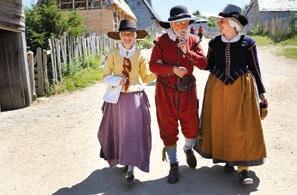
A must-see New England destination that tells the story of Plymouth Colony in the early 1600s and its shared history with the Pilgrims and native people. Visit the 17th-Century English Village, Wampanoag Homesite, Plimoth Grist Mill, Craft Center, and Plimoth Bread Co.
508-746-1622
plimoth.org
ART MUSEUM COLBY COLLEGE MUSEUM OF ART WATERVILLE, ME
Considered one of the best academic museums in the country, the Colby Museum of Art offers a vibrant exhibition program. It serves as a cultural resource to the Waterville community and visitors to the state. Always free and open to the public!

207-859-5600 colby.edu/museum
BEST FAMILY INN THE NONANTUM RESORT KENNEBUNKPORT, ME


Traditions begin here. Enjoy the seasonal family activities program, kayak and bike rentals, outdoor heated pool, magical fairy garden, scenic lobster boat cruises, and trolley tours! Close to the beaches and Dock Square shops. TripAdvisor Certificate of Excellence winner. 888-205-1555 nonantumresort.com
BEST GIFT STORE GALLERY GIFTS AT 136 DAMARISCOTTA, ME
A family-owned, AAA Four Diamond hotel featuring two restaurants, fireplaces, indoor pool, select petfriendly rooms. Book direct and get free breakfast and tea. Complimentary transportation from Amtrak Downeaster station. Two blocks to L.L. Bean. Best shopping in New England. 800-342-6423 harraseeketinn.com
Gifts at 136 offers a large selection of fine crafts and art from Maine, including furniture, paintings, sculpture, jewelry, pottery, glassware, lighting, and more. Gifts at 136 has won multiple awards for its well-curated collection of accessible art. Open all year. 207-563-1011 giftsat136.com
BEST FARM STAY LIBERTY HILL FARM INN ROCHESTER, VT
Experience life on a Vermont dairy farm. Country lodging and farm-fresh meals served family style. Swimming, hiking, then home to feed the calves and milk the cows. Reunions, family, and friends welcome. Explore the heart of Vermont!
802-767-3926 libertyhillfarm.com

Spruce Point Inn has built a distinctive reputation for its glorious location and warm hospitality. Condé Nast Traveler’s Readers’ Choice and Down East magazine’s “Best Hotel in Maine,” the 57-acre waterfront resort helps guests create “oceanside memories made in Maine.”

800-553-0289 sprucepointinn.com
The Grand at the Bedford Village Inn embraces what’s new and next for boutique hotels. Four restaurants, year-round outdoor heated saltwater pool and spa, fitness facility, lobby bar, and event space. Relax at our brand-new Luxe Spa. Lovely gardens on 10 acres. Sixty-four elegant rooms with marble baths and separate rain shower heads. Most with soaking tubs; some with fireplaces.
800-852-1166
bedfordvillageinn.com

PORTSMOUTH, NH
“Forgotten. Buried. Denied. No More.” Experience Portsmouth’s rich Black history. Hear stories of Ona Marie Judge’s escape from George Washington. Visit the wharf where Africans were unloaded as cargo. See the memorialized site of a Colonial African burying ground, and more.

603-570-8469 blackheritagetrailnh.org
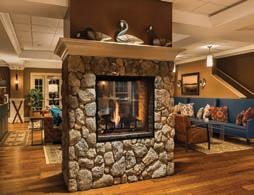
Enjoy a quarter mile of sandy beach and docks on the shores of Lake Winnipesaukee. Lakeside cottages, apartments, and rooms available. Great location for fishing, hiking, kayaking, boating, and more. Family owned and operated since 1890.
603-293-4321
amesfarminn.com
Rediscover Hampton Beach, rated #1 in the United States for water quality. Free activities include fireworks, nightly entertainment, Country Music Week on the Coast, volleyball and talent competitions, and Children’s Week.
603-926-8717
hamptonbeach.org

RED JACKET MOUNTAIN VIEW RESORT
NORTH CONWAY, NH
Relax in the White Mountains at the majestic Red Jacket Mountain

View Resort with spacious accommodations, excellent on-site dining, an indoor water park, and friendly, attentive service. Prefer an oceanfront getaway? Visit Red Jacket Resort’s five properties on Cape Cod.
800-752-2538
redjacketmountainview.com
Experience the enchanting cottage that inspired Elizabeth Orton Jones’s Little Golden Books version of “Little Red Riding Hood.” Untouched by time, this is a mecca for gardeners, epicureans, and anyone looking for inspiration and relaxation. Have a Pickity day!

603-878-1151 pickityplace.com
Discover NH’s favorite antiques and fine-art destination. With 200 dealers and 2,000 consignors featuring period furniture, art, jewelry, quality smalls, clocks, vintage wares, and distinctive decor, there’s something for everyone. Expert appraisal, consignment, and restoration services. Great dealer and decorator resource.

603-673-8499
nhantiquecoop.com
Reconnect with past Editors’ Choice winners and learn for yourself why they received Yankee Magazine’s highest accolade.
Reconnect with past Editors’ Choice winners and learn for yourself why they received Yankee Magazine ’s highest accolade.

ARTISTS GATHER IN A LAND CALLED THE FARM COAST.
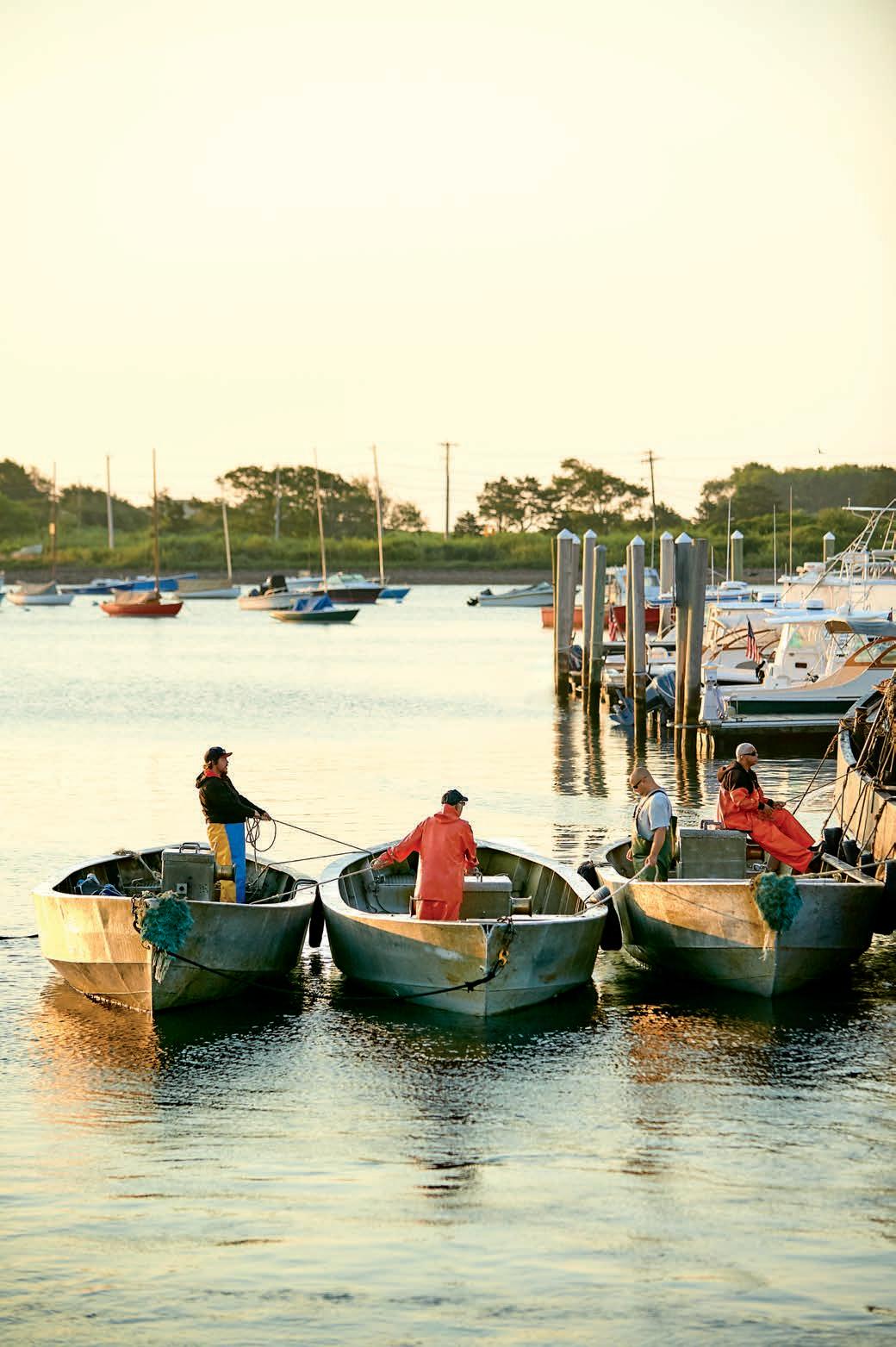 BY ANNIE GRAVES
PHOTOGRAPHS BY MARK FLEMING
BY ANNIE GRAVES
PHOTOGRAPHS BY MARK FLEMING

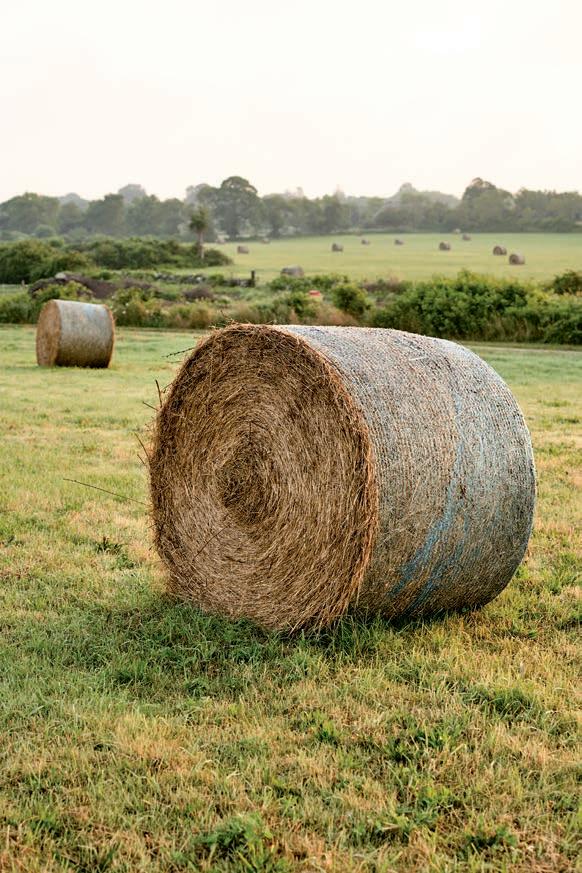
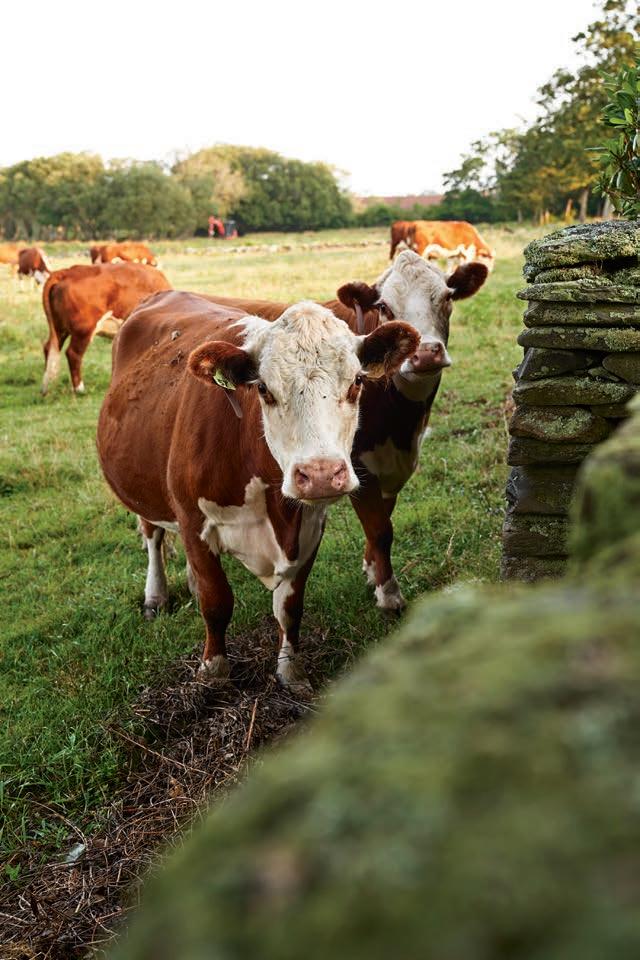
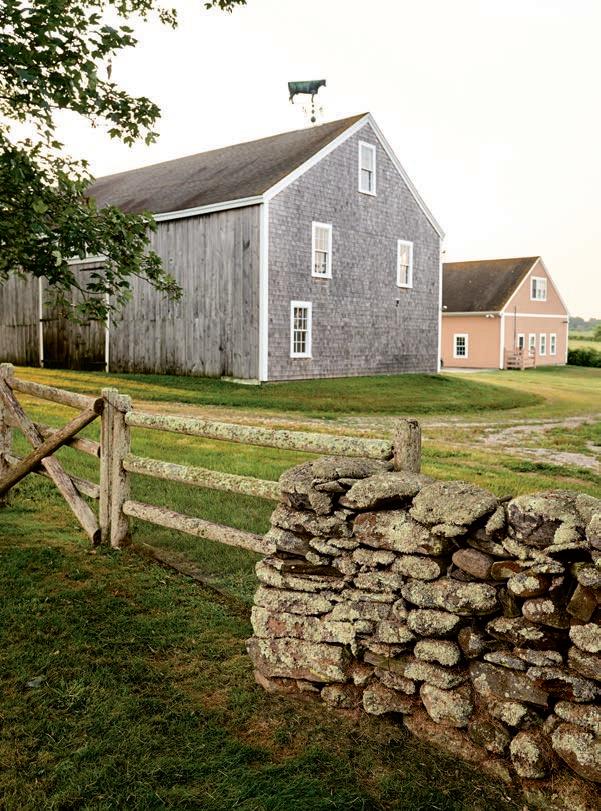
It brushes the tops of hay bales, rolled into tight spirals. It spreads out like butter across fields of fresh-cut grass baking in the sun, scenting the air in these deep southern reaches of Rhode Island. The drifting odor of a well-kept barn.
Sweet, dry, drying on this hot summer day in Tiverton.
Off to the west, light flicks across the water, sparkles in the deep dimples of salty Narragansett Bay. More fields unfurl down to the brine—an unexpected pairing that works, like salt and pepper. And now, driving deeper into a world of boats and barns, I am caught, suddenly, in a tangle of narrow roads channeled between stone walls of such height and artistry that by rights they could seek their own representation.
This is the Farm Coast. On a map, it is a blip, no bigger than a thumbnail, stretching from Tiverton down to Little Compton, then east into Massachusetts, to include Westport and Dartmouth. Up close, however, it is stamped with its own particular beauty: sudden bursts of meadow, shingled barns, blue water, and tidy rows of things green and growing.
Possibly potatoes. I spot a sign with a brown squiggle … I think it’s meant to be a spud. But the biggest, most exuberant crop seems to be farm stands. They are everywhere—such as Walker’s Roadside Stand, in Little Compton, where Coll Walker has been ensconced for 40 years, spilling out fresh-picked summer squash, round-faced sunflowers, fuzzy peaches.
I’ve heard about this stretch of farmland mingling with the coast for years. And now that I’m finally here, I discover something unexpected.
There’s no fanfare.
The farmers are farming. The fishermen are off gathering their fruits of the sea. Artists—a heap of them—are taking it all in and giving it back. There’s a lot of space. A quiet, wide-spreading feeling that makes it easy to take a deep breath.
It’s also gorgeous.
previous spread : The dual personality of the Farm Coast shines through in a sweeping view of Little Compton’s pastures and woodlands, left, and a shot of fishermen beginning their workday in Sakonnet Harbor.
opposite : A meander through Little Compton and Tiverton yields scenes largely unchanged by time: rolling fields scattered with hay bales, friendly cows, nodding wheat stalks, and weathered barns and stone walls.
When I pull into Pardon Gray Preserve to meet Wayne Browning of the Tiverton Land Trust, there’s a painterly cast to the early-morning light sifting over the land, misty at the edges of the old Gray Family Historical Cemetery nestled into the fields.
Swaths of this 230-acre preserve, open to the public and owned by the trust, are freshly mown thanks to Bill Hathaway, a farmer who lives across the street. Besides mowing the fields, Bill collects antique farm equipment and displays it here. Lots of it. Even teenagers revel in the visuals, Wayne says. “They come to take their pre-prom photos. It’s their way of being proud of where they come from, of saying, This is what my town is like.”
The fields stretch on like summer, golden and green, but they’re also a measure of how locals feel about their farm legacy. “In the late 1990s, a developer had high hopes of putting in 120 homes,” recalls Bill, who then gestures at an inscribed stone slab. “The people named on that rock got together and raised $1.2 million to buy it.” Today, “we’re restoring it to good agricultural land,” he says proudly.
But right now, it’s a farmer’s waiting game, with a good stretch of sun needed to dry out the hay. In a few weeks, giant rolls of hay will dot the landscape. “Late afternoon, around 4 o’clock, when the sun’s at the right angle, people start slamming on their brakes. It really is a pretty sight.”
Which brings us to…
 Bill Hathaway, right, takes a break from haying on his Tiverton farm with Drew Watts. (Hathaway, incidentally, has Yankee ties: His daughter, Kate, is the magazine’s marketing director.)
Bill Hathaway, right, takes a break from haying on his Tiverton farm with Drew Watts. (Hathaway, incidentally, has Yankee ties: His daughter, Kate, is the magazine’s marketing director.)
THIS LANDSCAPE IS ITS OWN KIND OF ARTWORK. WATER VIEWS SLIDE IN WHERE YOU LEAST EXPECT THEM. ALSO WHERE YOU FULLY EXPECT THEM. AND WHO COULD HAVE IMAGINED SO MANY GAMBREL-ROOFED BARNS, RISING EVERYWHERE?

Tiverton Four Corners, a short drive away, is hopping. An unlikely hotbed of activity, this speck on the landscape—more than 300 years in the making—is perfectly sized for New England’s tiniest state. Imagine a compact collection of 18th- and 19th-century buildings (roughly two dozen shops) clustered around a crossroads: the literal “four corners.” It’s been restored to captivating prettiness thanks to James and Rosalind Weir, who discovered the village in 1984 and renovated it for the next 30 years.
Food anchors two of the corners. Provender, housed in an 1876 Victorian dowager, is a bustling gourmet food shop with the feel of a beautifully styled country store:

hydrangea blooms offsetting Chocolove artisanal chocolate. The famous Gray’s Ice Cream has a non-diminishing line every time I pass it. But this weekend in July also happens to be the annual South Coast Artists Open Studio Tour, with more than 50 artists and galleries to visit. “I come every year from Weston, Massachusetts, for this,” says a woman who’s puzzling over the tour map. “The artists are so friendly and eager to talk about their artwork.”
I duck into Arch Contemporary Ceramics for a quick chat with potter Charlie Barmonde, and I discover that my anonymous tipster was right. Antiques shops lure me down Puncatest Neck Road—the midcentury doodads, ’60s patio furniture, and salvaged shutters are a photographer’s dream.

But this landscape is its own kind of artwork. Water views slide in where you least expect them. Also where you fully expect them. And who could have imagined so many gambrel-roofed barns, rising everywhere?
Driving down Fogland Road, a long, cool tunnel of trees, I stop at Fogland Farm Studio, also on the art tour. The setting is an exceptionally beautiful farm, where Martha Mullen Taradesh’s seascapes hang in her shingled studio. A handsome barn sits beyond, three donkeys posing in a corral. Fields drift toward a distant tree line. The 1726 house stands sentinel. And a Guerrilla Girls manifesto—a welcome throwback to the ’80s—flutters on the studio door. Martha looks delighted when I mention it. Tenet no. 4 of The Advantages of Being a Woman Artist : “Knowing your career might pick up after you’re 80.”
I am on the artists’ Farm Coast, for sure—a fact punctuated with an exclamation point when I trip over the Art Café, in Little Compton.

Well-preserved 18th- and 19th-century buildings like this one set the tone for Tiverton Four Corners’ shopping scene.
 OPPOSITE , FROM TOP : Walker’s Roadside Stand has been a fixture in Little Compton for more than 40 years; Art Café partners Josie Arkins, left, and Judith Worthen.
OPPOSITE , FROM TOP : Walker’s Roadside Stand has been a fixture in Little Compton for more than 40 years; Art Café partners Josie Arkins, left, and Judith Worthen.
Little Compton is roughly the size of a peanut. Its downtown consists of Wilbur’s General Store, a friendly place that’s been around for 100 years and magically expands when you step inside, traveling back for eight rooms and selling everything you can imagine. Next door, the Commons Lunch has, by all accounts, great chowder, but I’m intrigued by the slice of Jamaica attached to its hip: the Laughin’ Lobstah, a turquoise-trimmed shack showcasing jewelry, shells, and plastic pails.
There’s a library, a white-steepled church, and a green that’s half cemetery. It’s lovely and sleepy, and I heard a rumor that when The Witches of Eastwick was looking for a film location, Little Compton turned it down.
Also, a few paces from the center, there’s a stained glass sign: “The Art Café.” It turns out my fantasy café exists in the middle of nowhere, next door to a perfect 1700s Cape hung with Josie Arkins’s colorful encaustic paintings. The café is magical, accidental, strung with fairy lights, carpeted with worn Oriental rugs. “Arabian Nights” meets “Bohemian Rhapsody.” Except there’s also a freezer where Josie and her husband sell their own farm-raised Treaty Rock beef. A wild bunny hangs out under the apple tree. “And lately,” Josie says, “there’s been a chicken wandering through….”


Did I mention how close everything is? (You can drive the entire Farm Coast in about an hour and a half—but why would you want to?) Or that it’s not a cliché to say there’s water everywhere?
In other words, if you want to sail—like the two guys launching a boat at Fogland Beach on the Sakonnet River, part of Narragansett Bay—it’s right here.
As for fishing—along a breakwater, say—there is riprap (new word for us landlubbers) beyond the Sakonnet Point Club, with views of Sakonnet Light and dizzying drops. I spot clusters of sturdy anglers lining the rocks, armed with poles. (Stop by one of the bait and tackle shops, like Riverside Marine, and you’ll get expert tips on where to go.)
But it’s hot today, so on to the cool stuff—starting with Horseneck Beach State Reservation, in Westport, Massachusetts, near the mouth of Buzzards Bay. First off, there are the Dunes; the uppercase is intentional, as these are serious dunes, like the ones you’d find in the Provincelands of Cape Cod. Traverse this sandscape, and you’ll find yourself on a beach that’s the tip of an 800-acre park on
FROM FAR LEFT : Visitors to Carolyn’s Sakonnet Vineyard in Little Compton sample vintages at the outdoor tasting bar; the welcoming interior of the Red Dory in Tiverton; the juicy raw ingredients for the vineyard’s wares; a sampling from the Red Dory menu, spotlighting local seafood ranging from squid to sea scallops to littleneck clams.
With its bounty of fresh-picked produce and just-caught seafood, the Farm Coast is a haven for food lovers, who can sample the region’s flavors at farm stands, markets, and restaurants. Here, Yankee senior food editor Amy Traverso shares some of her favorite refueling stops.

THE BACK EDDY
Westport, MA
With harbor views all around, this seafood mainstay could get by on location alone, but the cornand-clam chowder and chouriçostu ed clams point to a kitchen with real ambition. 508-636-6500; thebackeddy.com
COMMONS LUNCH
Little Compton, RI
Old-school classics such as meatloaf, western omelets, fried clams, and grapenut pudding draw a multigenerational crowd of happy diners. 401-635-4388
EVELYN’S DRIVE-IN
Tiverton, RI
Overlooking lovely Nanaquaket Pond, this waterside eatery (complete with boat parking out
back) is the place to go for flu y fried clam cakes with a cup of Rhode Island–style clear-broth chowder. 401-624-3100; evelynsdrivein.com
FARM & COAST MARKET
South Dartmouth, MA
Serving next-level pastries, salads, and sandwiches, this stylish market and café is the kind of local hangout every town should have. For breakfast, don’t miss the smoked salmon sandwich. 774-992-7093; farmandcoastmarket.com
GRAY’S ICE CREAM
Tiverton, RI
Of all the ice creameries on the Farm Coast, Gray’s wins for its rich, custardy base and giant scoops. The go-to flavor is co ee—a natural choice in the state that invented co ee milk. 401-624-4500; graysicecream.com
LITTLE MOSS
South Dartmouth, MA
This chic boîte spins local produce and seafood into gorgeous small plates, pastas, and charcuterie boards. Come for a cocktail; stay for dinner. 508-994-1162; littlemoss.com
PROVENDER
Tiverton, RI
Here’s the spot to pick up picnic supplies for the beach. We recommend the Scarlet Letter— turkey, greens, tarragon mayo, and cranberry sauce—and the buttermilk cake, which is as moist as English pudding. 401-624-8084; provenderfinefoods.com
THE RED DORY
Tiverton, RI
Steve Johnson is the Farm Coast’s top chef, and his Mediterraneaninspired eatery boasts the best local produce, excellent pastas and ceviches, and sunset views of the Sakonnet River. 401-816-5001; reddoryrestaurant.com

REVOLUTION LOBSTER
Westport, MA
Right at the tip of Westport Point, this fish market and eatery does “sea-to-table” takeout (there are picnic tables outside). That means buttermilk clam biscuits, lobster rolls with brown butter and ginger-scallion oil, and blueberry pie for dessert. 508-675-0131; revolutionlobster.com
OPPOSITE : Westport’s Horseneck Beach, part of an 800-acre state reservation, boasts a twomile stretch of sand on Rhode Island Sound that’s ideal for sunning and swimming.
 Linked to Westport by a narrow causeway, Gooseberry Island offers a wild and secluded spot for strolling in the ocean air.
Linked to Westport by a narrow causeway, Gooseberry Island offers a wild and secluded spot for strolling in the ocean air.
the Atlantic, with a 1½-mile paved walking path along the water and views of the Elizabeth Islands.
The fog descends, but I’ve gotten good tips from a park ranger, who points me to tiny Gooseberry Island, where parking is free but limited (as are crowds). Beaches, both sandy and stony, ring the island—dogs are OK!
Perhaps the best tip is Demarest Lloyd State Park, in Dartmouth, Massachusetts—I feel like an insider when I pull into the parking lot on a sweltering day to see just 11 other cars. By now, I’ve driven past countless silos, farm stands, white farm fences, stone walls, and fields. There’s a loooong entrance to the state park, with an admonition to go slow (I don’t pass another car). A slender sandy path to the beach winds by beach roses, it’s high tide, and I swear there are fewer people on the beach than there are cars. How is that even possible?
It doesn’t matter. The water is perfect.
There’s so much more to say. About Gray’s Grist Mill, right on the Massachusetts line, one of the oldest in the country (before 1700), where I watch George Whitley stone-grind local white flint corn into mealy fairy dust that transforms into crispy johnnycakes just across the bridge at a restaurant called the Barn. “How do I get jobs like this?” the miller says, grinning. “Just lucky, I guess.”
Or the beauty of Westport Point Historic District, a fishing village that calls to mind Nantucket’s ’Sconset: little and big houses from the 1700s, slathered in silver shingles, marching down to the water. It’s a true work-

ing harbor, with boats like Constant Cravin bobbing in the water beyond Revolution Lobster, where the line of customers is better than all the advertising in the world. Lobster rolls, chowder, stuffies, and the day’s special, a yellowfin tuna salad sandwich. Our yellowfin tuna was caught by Alex on the F/V Perseverance (the boat docked right behind you!) reads a sign at the takeout counter. Boat to mouth—it doesn’t get more personal.
Then there’s Padanaram, a village in the town of Dartmouth, at the end of the Farm Coast in Massachusetts. At the convivial Farm & Coast Market, I taste the region in Eva’s wild greens salad: a bit of farm (greens), a bit of coast (salmon). In a tucked-away spot by the water, homes are draped with fishing nets, a roof strewn with lobster traps, and buoys dangle like oversize earrings against red-painted wood. The harbor is chockablock with boats and masts….
Sun, sea, scenery … sleep. It’s hard to imagine a prettier place to spend the night than Schoolhouse No. 1, after hobnobbing with artists, taking a salty dip, and huddling over tapas at the Red Dory, downing curls of grilled octopus. Kristin and Adam Silveira have restored the
exterior of their Tiverton one-room schoolhouse, built in 1800, with textbook rigor, topped off with a belfry and a 100-year-old school bell. Guests can even ring it, within reason (the sound travels up to three miles). But there’s nothing academic about the interior of this two-bedroom vacation rental—gourmet kitchen, luscious colors— unless you count the antiques. Vintage books for boning up on ancient geography, an eight-day schoolhouse clock. School nostalgia , in other words—possibly the best kind of learnin’ for the vacation-minded.


The next day, I’m searching for a farmer. More than one person has told me to track down Lucien Lebreux, a local legend. When I finally stumble across Middle Acres Farm, somewhere in Middle-earth (OK, it feels mythical, but it’s actually in Tiverton), it’s the real deal: a worn sign with a cow disappearing into a weather-beaten background, set against red barn shingles that have seen younger days. But the fresh green fields behind, sparkling white fences, and twin silos aiming for the sky are all signs of a flourishing farm, one held to high standards. The resident border collie, Molly, is desperately trying to herd a golf cart that’s zipping between outbuildings, driven by Lucien’s nephew.
John “Rebel” Brown, from Georgia, is a volunteer here; his trailer sits near a greenhouse bulging with
tomato plants. “Anything I can do to help out Lucien, I’m a happy camper,” he says. In true Yankee fashion, Lucien, now 88, reinvented himself in 1997, when the dairy business soured. Lucien built cranberry bogs in his fields and became a cranberry farmer.
Since then, Lucien has guaranteed that his land— several hundred acres—will only ever be sold in one piece, as a farm. Why? The slender old farmer twinkles, but there’s steel in his words, too. “To see it not be a farm?” he asks, a trace of French-Canadian accent flavoring his words. “I worked too damn hard. I worked my whole life….”
It is a different world from the one conjured up by the news I heard of a casino being built on the outskirts of Tiverton. (The casino and hotel are slated to open October 1 of this year.) But the farmland goes on, pressing up against the sea. It is a breathtaking synthesis of agriculture, seascape, and artistry. Broad fields, basking in sunlight, bounded by water.
This Farm Coast is real.
To see more photographs from our visit to the Farm Coast, go to newengland.com/farm-coast-2018.
 A view of Little Compton farmland, looking north along the Sakonnet River toward Portsmouth and Tiverton.
OPPOSITE , TOP AND BOTTOM : Built c. 1800 by one of the founding families of Tiverton, Schoolhouse No. 1 is today a one-of-a-kind rental property with all the modern comforts.
A view of Little Compton farmland, looking north along the Sakonnet River toward Portsmouth and Tiverton.
OPPOSITE , TOP AND BOTTOM : Built c. 1800 by one of the founding families of Tiverton, Schoolhouse No. 1 is today a one-of-a-kind rental property with all the modern comforts.




 PREVIOUS SPREAD : Luke
Persons has worked as everything from an auto mechanic to a dump truck driver, but cleaning up Lake Champlain may be his biggest job yet.
THIS PAGE : Areas near large tracts of farmland, like St. Albans Bay, are among those hit hardest by bluegreen algae blooms.
PREVIOUS SPREAD : Luke
Persons has worked as everything from an auto mechanic to a dump truck driver, but cleaning up Lake Champlain may be his biggest job yet.
THIS PAGE : Areas near large tracts of farmland, like St. Albans Bay, are among those hit hardest by bluegreen algae blooms.
When I was a young boy, my family would spend one or two days each summer at a camp on the shores of Vermont’s Lake Champlain. What I remember most is a jut of rock protruding into the water; I’d stand on its jagged edge and cast into the lake. it was deep and black, and I didn’t catch much of anything beyond the occasional perch. Still, I’d stand there for hours, casting and reeling, casting and reeling, captive to the rhythm of the pole, the whir of the outgoing line, the water lapping at the rock. Unaware that even then—this would have been nearly 35 years ago—Lake Champlain was headed for trouble.
Like many contemporary environmental woes, the troubles with Lake Champlain were long in the making but seemingly sudden in appearance. There are a lot of reasons for Champlain’s challenges, but most revolve around one central fact: The lake is besieged by phosphorus, which creates blooms of cyanobacteria (aka blue-green algae), which in turn contain substances known as cyanotoxins. These toxins have been known to kill fish and dogs and can be extremely harmful to humans if ingested. Additionally, the algae blooms block sunlight from reaching plants at the lake’s bottom, and when the cyanobacteria die off, the process consumes tremendous quantities of oxygen, resulting in the death of aquatic wildlife. The presence of blue-green algae has an economic impact, too: Popular beaches in and around Burlington are frequently closed, and real estate values have been hurt in the areas where outbreaks are most common—because as it turns out, a water view isn’t quite so appealing when the water is covered by a mat of toxic algae.
While the problem of blue-green algae has been understood and documented for decades, only in the past handful of years has it become widespread and acute enough to get public and political attention. This has led to an environment rife with fingerpointing, since the phosphorus at the center of the problem has many sources—fertilizer from lawns, golf courses, and other maintained green spaces; dysfunctional septic systems; wastewater treatment facilities; dairy farms—and not everyone agrees how to distribute the burden of cleaning up the lake and mitigating future runoff. The debate has become so fraught with tension that armed game wardens were dispatched to help maintain order at an October 2017 meeting about water quality issues at Lake Carmi, another Vermont lake that’s experienced high levels of blue-green algae. Because Carmi is close to Lake Champlain and is subject to phosphorus runoff from many of the same sources, it’s considered to be a canary in the coal mine.
To better understand the issues facing Lake Champlain and, I hoped, glean some historical context, I drove to Malletts Bay in Colchester last fall to meet James Ehlers, executive director of Lake Champlain International, a nonprofit organization dedicated to the health of the lake that provides drinking water to some 200,000 people.
It was late September, but the region was in the middle of a stretch of summerlike weather; the heat had provoked an outbreak of cyanobacteria, closing numerous beaches in the Burlington area. Ehlers, a fit-looking 49-year-old Navy veteran who answers his phone by barking his surname, had recently announced his candidacy for the 2018 Vermont governor’s race; he was running as a Democrat with a focus on water quality. We met at a small diner near the Malletts Bay boat access and ate omelets while Ehlers delivered an impressive oratory on the past, present, and potential future of the lake he loves.
The first thing to understand, according to Ehlers, is that Lake Cham-
plain’s current condition is rooted in centuries of human activity. This began with the arrival of European settlers, who, taking note of the towering forests lining the lake, began sharpening their axes. These were impressive trees— white pine and oak, mostly—and the profusion of logs being floated across the lake turned Burlington into the third-largest lumber port in the country.
By the mid-1830s all the prime trees surrounding the lake had been harvested, which accomplished two things: First, it exposed thousands of acres of land, from which soil eroded into the lake and its tributaries, covering the rocky river bottoms that provided habitat for spawning salmon (it’s rumored that in the late 1700s and early 1800s, local officials would issue warnings about salmon runs, because the jumping fish would spook horses). Second, it allowed the expansion of Vermont’s wool industry, which had been growing steadily over the previous few decades. And while sheep offered a way out of the now-broken
forest economy, their incessant grazing exacerbated erosion.
Eventually, competition from other states and countries heralded the demise of the wool industry, and Vermont farmers refocused their affection on the humble bovine, aided by the advent of refrigerated railcars that opened milk markets in Boston and beyond. And this, according to some, was the nail in Lake Champlain’s coffin.
The problem, said Ehlers, lies in the simple fact that the average dairy cow produces approximately 115 pounds of manure a day—which means that the 36,000 cows in Franklin County alone (Franklin serves as a watershed for the lake) are creating over 4 million pounds of phosphorus-rich waste daily. Couple this with the regular application of phosphorus-based fertilizers to feed the crops grown for these cows,
and you begin to sense the magnitude of the issue.
“The truth is that nature can deal with the pollution; it’s building a system to deal with it as we speak,” Ehlers said, as he sipped coffee. “It’ll be a swamp, and it’ll trap everything. The mosquitoes will like it, the snowshoe hare will like it, the moose will like it.” He paused. “I just don’t think the humans will like it very much.”
I left my visit with Ehlers feeling a little overwhelmed. The challenges facing Lake Champlain seemed too big and intractable, too entrenched in well-established institutions. It didn’t help that I’d recently learned that the cost to clean up the lake—something mandated by the EPA under the Clean Water Act—was expected to exceed $2 billion over 20 years, and while some of the money would come from the feds,
Vermonters would be on the hook for an estimated $25 million annually. Unsurprisingly, the debate over where this money would come from quickly became contentious. Should all Vermonters be compelled to pay, or only those directly responsible for the pollution? And what of the dairy farmers, already under severe economic stress due to low milk prices? These farms were responsible for an estimated 40 percent of the phosphorus entering the lake; did that mean farmers should shoulder 40 percent of the cleanup? Satisfactory answers to these kinds of questions seemed in short supply.
So I was more than a little intrigued when my friend Luke Persons turned to me one day and said, “I’m going to save Lake Champlain.” We were riding in his truck, an old Dodge diesel that rumbled impressively, so at first

I thought I’d misunderstood. “You’re going to what ?” I asked, lifting my voice above the clamor.
“I’m going to save Lake Champlain!” Luke repeated, louder this time. I turned to look at him. Then he added, “God willin’ the creek don’t rise.”
He was grinning, and I grinned back, and then the truck shifted down a gear to climb a hill, and the cab filled with noise.
he home of Luke and Terri Persons is a log house situated just off the crest of a small knoll at the edge of Deadman’s Swamp, in the northern Vermont town of Walden. It is not a particularly swampy swamp, and I find it quite beautiful and peaceful—especially as seen from the glassed-in porch off the
rear of the house, which is where Luke likes to relax in his recliner, an insulated coffee mug filled with Jim Beam and Coke close at hand.
Luke is 58. He has a wily mop of gray hair that is slowly receding from his forehead. He also has a gray beard that descends from his face in a frayed “V” shape. He has thick eyebrows and a long nose, and he smiles a lot, by which I mean the man is always smiling. And when he smiles, his eyes squint, but not quite so much that you can’t see the twinkle. In this way—with the beard, the smile, the twinkle, and, let’s be frank, the ample stomach region—he cuts a vaguely Santa Claus–ian figure.

Luke Persons did not graduate from high school. He did not attend college. He was raised on a dairy farm a half dozen miles from here, and when young Luke complained to his mother
about the oatmeal she’d serve for dinner when things were tight, she’d just look at him sternly and say that nothing would be tougher. He reads incessantly, favoring long works of historical nonfiction, and particularly those in which the focus is battle. He has been with Terri since he was 21 and she was 16 and pregnant with the first of their two daughters.
To make a living, he drives a dump truck, hauls equipment, does some
(continued on p. 132)

Iwas 23 years old before I first tasted corn that was not grown by my father. I was visiting friends and wanted to be polite, but what was on my plate bore little resemblance to the corn on the cob I was used to: just-picked, steamed until barely done, and rolled lengthwise on a dedicated stick of butter. Corn that snapped when you bit into it to release the milky juice inside each kernel. The corn I ate that night at my friends’ house was store-bought and tough, even though it had been boiled hard for what seemed to me a terrible length of time. And the people at the table spread butter on it with their knives! I had never seen such a thing.

My father, and his father before him, and all of the fathers and sons in my family back to 1636, plowed and planted a patch of fertile soil that lay between two tidal rivers in seacoast New Hampshire. The original 20 acres had been an English land grant from King Charles to John Tuttle, a barrel maker who sailed from Bristol with his wife, Dorothy, to start a new life on a new continent, carving out a subsistence farm from a pine forest.
Almost three centuries later, it was my grandfather, Penn Tuttle, who first grew sweet corn to sell. The ninth generation of Tuttles to farm that piece of land, he was the one who first wondered if our farm might be the oldest in the country still owned by the same family. It was.
My grandfather graduated from high school in 1908, and within a few years he had made a name for himself with the vegetables he grew on the farm and delivered to small grocery stores in nearby towns. All of his vegetables were popular, but it was his corn that people loved the most. Grocers found that customers would ask for “Tuttle’s corn” and that they would pay a premium for it.
After the war, the small grocery stores were gradually replaced by supermarkets stocked from central warehouses. Iceberg lettuce shipped from California and tomatoes from Florida picked green and wrapped in cellophane began to take the place of the hand-washed greens and juicy, vine-ripened beefsteaks my grandfather delivered. The successful wholesale vegetable business that Penn Tuttle had built was beginning to falter.
In 1956, when I was 4 years old and my grandfather had turned the farm over to my father, my parents decided to renovate an old red barn that was close to the road and turn it into a retail farm stand, a rarity in those days. My father grew—and my mother sold— more than 50 kinds of vegetables, from spring-dug parsnips in April to enormous, lumpy Blue Hubbard squash in October. In the 1960s, when the main ingredient in most people’s salads was California iceberg, Tuttle’s Red Barn offered 11 varieties of homegrown lettuce. Oak leaf. Ruby. Buttercrunch. Black-seeded Simpson.
But it was the corn that brought the crowds. On the first Saturday of corn season, always our busiest day of the summer, we hired a policeman to direct traffic. Nobody got a day off on a corn weekend. Sometimes it was nearly impossible for the boys bring-
and corn no longer needed to be picked fresh in order to taste sweet, my father resisted the trend. He believed that a depth of flavor was lost, flavor replaced by sweetness. “It just doesn’t have that corn taste,” he’d say. He felt the same way about Butter and Sugar and the other ultrasweet bicolor varieties that followed it. Although he finally gave in to customer demand and planted the new varieties, he was never convinced.
My father picked every ear of corn himself, as he didn’t trust any of the young local boys who worked for us in the summer to know if an ear was ready or if it was “slack” and needed another day or two to fill out. He would walk between the rows, picking with both hands, never slowing his long stride. There was always one boy behind him, carrying the basket. He was “the lugger.” It was an important job: The
progress of his crops, sampling the first of the corn, just-picked and raw, as we stood between the rows of tall green stalks.
My brother left the farm as soon as he could. He went to college, sold cars for a while, and then got a job as a sales rep for Campbell Soup, stocking suburban Boston supermarkets with cases of tomato bisque and cream of mushroom.
Thirty years before, when he was Will’s age, my father had sat studying at an open window in his Harvard dorm on a warm spring day. He saw crocuses beginning to bloom, closed his books, and hitchhiked the 70 miles north to the farm, just to see what was happening. Had his father spread the hen manure yet? Plowed and harrowed? Had he planted peas? My grandfather said that was the day that he knew my father, one of three brothers and a sister, would be the one to take over the farm.
ing in the baskets brimming with just-picked corn, green and moist and still warm from the sun, to make their way through the crowd to dump their bushels onto the big display table my father had built with pine lumber from our land. Thirteen years old and full of importance in my sneakers and cutoff jeans, I’d clear a path to the table, shouting, “Excuse me! Stand back! Make way for the fresh corn!”
My father picked the corn every few hours as needed throughout the day, 25 or so bushels at a time. We never held leftover corn overnight. Eating even hours-old corn was unheard of in our family; what was left at the farm stand when we slammed the overhead doors down every evening at closing time was taken out back and dumped over the barbed-wire fence for our small herd of Black Angus cattle.
When the sugar-enhanced varieties came on the market in the 1980s,
lugger had to keep pace with my father, carrying an increasingly heavy basket, in tune with when each handful of ears would be tossed back. When that boy’s basket was full, another boy had to be ready to take his place with an “empty.” The only time I could be the lugger, following my father down the long rows with the corn leaves brushing against my cheeks, was when he was picking corn for our family’s supper. Girls didn’t work in the fields, he told me. My job, and my older sister Lucy’s, was to work in the stand with our mother, selling the vegetables he grew. My only brother, Will, graduated from lugger to picker eventually, but working on the farm was never Will’s passion, as it had been for my father and grandfather. And for me. I followed my father whenever he’d let me, doing the morning barn chores, riding in the back of his pickup along the farm roads as he checked the
The summer I was 17, I went to summer school for six weeks, up to then the longest stretch of my life away from the farm. When I came home in August, I brought a group of new friends with me. I wondered what these suburban kids would think of my life: the muddy boots in the hallway, the ancient black slate sink in the kitchen, my father’s old truck. Were we poor? I had never thought of it before.
It was suppertime. Corn season. My father and I, as we did every evening in late July and August, headed out to pick the corn we would be eating not more than an hour later, steamed until just barely done in my mother’s huge dented aluminum kettle on the wood-burning kitchen range. As five other teenagers and I climbed into the back of my father’s dusty red Ford pickup and clattered down the farm road toward the cornfield, I saw in the faces of my friends that what I had
THIRTEEN YEARS OLD AND FULL OF IMPORTANCE IN MY SNEAKERS AND CUTOFF JEANS, I’D CLEAR A PATH TO THE TABLE, SHOUTING, “EXCUSE ME! STAND BACK! MAKE WAY FOR THE FRESH CORN!”
always taken for granted was, just possibly, something special.
Back at the house, we sat in the back of the pickup husking the bushel of corn, saving the husks for our two horses nickering at the fence. I showed my pals what my father had taught me: that every strand of corn silk is a hollow tube. I told them how the male part of the corn plant, the tassel, matures and drops its pollen onto the female part, the undeveloped ear waiting below, its green silks pointing upward, a little sticky, to receive the pollen. Then each grain of pollen travels down a hollow silk to where the silk is attached to the naked cob. And a kernel begins to form. When an ear of corn has a missing kernel, it’s because that silk never got pollinated, I told them. The ear slowly ripens, swelling like the pregnant female it is, and the silks outside the husk begin to shrivel and turn brown. If the ear isn’t picked and eaten while the kernels are still tender and full of sweet juice, the kernels continue to grow, then harden on the cob. And now they are mature seeds, ready to fall to the soil and begin the cycle again. A new generation.
The following summer I convinced my father to let me help him more on the farm. I had never been very good at being nice to the customers at the farm stand. If someone complained about the radishes being too small, or too big, or complained about the high price of our corn (75 cents a dozen), I took it personally and might snap, “Do you know how hard my father works to grow these vegetables?” I was sick of seeing people squeeze the tomatoes, then put them back. I was tired of the sound of the cash register and the endless questions about whether we had something fresher in the back room. I longed to be outside in the silent morning, in the fields with my father and his beautiful rows of crops.
He let me join him, but only for the early-morning hours. I still needed to be at the stand for the rest of the day. I worked twice as hard as I thought possible, six days a week from 7:30 in the morning until 6:30 every night, or later if we had irrigation pipe to move. Picking corn wasn’t the only thing my father reserved for himself. The boys in the crew picked the peas and strawberries and beans. The more senior ones might be trusted on beets and carrots and scallions and radishes, or cucumbers and squash. But he didn’t trust anybody else to prop -
erly harvest what he called the “fussy crops.” What I now realize is that those were his favorites. He wanted to save them for himself. He loved getting up at dawn, being all alone in the fields before the crew arrived and he had to start issuing orders.
First he had me cut and bunch parsley. When I didn’t mess that up, he let me take the red pickup and cut lettuce. At first he told me how many heads of each variety to cut each day, but soon he trusted me to take inventory from the previous days’ sales and (continued on p. 136)

IN 1973 IN ROCKPORT, MAINE, an entrepreneur named David H. Lyman founded what would become America’s first large-scale photo workshop. Offering summer seminars in this picturesque harbor village, Maine Photographic Workshops soon drew students from around the world, who came to learn from such luminaries as Ernst Haas and Mary Ellen Mark. Today the program is a nonprofit whose name, Maine Media Workshops, reflects its wide-ranging offerings: filmmaking, creative writing, graphic design, and more. But as shown by these images from a recent workshop— led by Eliot Dudik and attended by Yankee photo editor Heather Marcus—it’s still teaching people to see anew through the camera lens.
“I’ve struggled with landscapes, so photographing this Stonington shack—which drew my eye with its mix of colors and tones—meant I had to push out of my comfort zone. But it helped to remember the advice that our instructor, Eliot Dudik, gave us: Feel the space, let it speak to you, and you will find your shot.”
 Heather Marcus, Peterborough, NH
Heather Marcus, Peterborough, NH

ABOVE : “Our teacher challenged me to photograph people in my landscapes to create that ‘sense of place.’ These children, fully engaged in a Damariscotta tide pool, bring to mind the timelessness of summer play on the Maine shore.” — Leslie Hankey, Jasper, GA

OPPOSITE : “We stumbled on this scene in Lincolnville, close to sunset, after chasing down a stream of smoke in the distance. The family allowed us to watch and photograph the controlled burn of an old turkey barn on their property, which had also attracted one of their young sons as an onlooker.”
Julia Bennett, Los Angeles, CAABOVE : “On an outing along the coast, my fellow students walked the shoreline while I went back to the van to look for my lens cap. I heard a car coming, and I turned to take a few shots to experiment with motion. How could it be that I caught this rare Ford Edsel? Just one of Maine’s many surprises.” — Leslie Hankey

OPPOSITE : “This family from Connecticut was spread out on a quiet part of Popham Beach, and I took some photos of them fishing separately before asking if I could take their portrait. I love the idea of this father with his teenage children, each with their own unique expression and stance, poles askew, but connected to each other and to this vacation that’s become a tradition for them.” — Heather
Marcus

ABOVE : “I was struck by the isolation of this house— it was standing pretty much entirely on its own in a barren field, with forgotten items littered about. I find I’m often drawn to places of loneliness in my work, and this home fit perfectly.”

Walker Bankson, Wilmington, NC
OPPOSITE : “I was shooting with a 4x5 view camera, which let me capture images with a tremendous amount of detail. Using such a cumbersome and slow camera also forced me to slow down my process, fostering conversations with the people I was photographing—like this Stonington fisherman, Zachary—and allowing me to consider every part of the image I was creating.” — W.B.
To see more photographs from the “A Sense of Place” seminar, go to newengland.com/maine-media. For information on upcoming Maine Media Workshops classes, go to mainemedia.edu.

IN REMEMBERING HIS STEPSON, A YOUNG MAN WHO FOUND PEACE AND SOLACE IN NATURE, THE AUTHOR LEARNS ABOUT THE LIMITS OF LOVE, THE PAIN OF LOSS, AND FINDING HOPE AGAIN.
by GEOFFREY DOUGLAS illustration
by EIKO
OJALAear the peak of Mount Mansfield on a sunny July morning, Nate Launer cradles a small graybrown bird in his hand. He has just released it from a mist net, and will soon wrap its tiny pink leg with a wafer-thin band before letting it go.
It is a Bicknell’s thrush, the rarest and most secretive of North America’s breeding thrushes, and is now under threat as its natural habitat—the coniferous alpine forests of northern New England, the Adirondacks, and Canada—progressively dwindles in a changing climate.
“As the air warms, the deciduous trees move higher and begin to squeeze out the balsam and spruce where the Bicknell’s thrushes make their nests,” Nate explains to me later. The banding he was doing that morning, he says, will help track the birds’ movements as they attempt to adapt to the change.
Nate is 21 years old, a senior at the University of Vermont’s Rubenstein School of Environment and Natural Resources, where he majors in conservation biology. His morning on Mount Mansfield today is the result of a summer apprenticeship, the Alexander Dickey Conservation Internship, awarded by the Vermont Center for Ecostudies (VCE) in honor of another young man who once walked these woods in search of the Bicknell’s thrush: “a mostly solitary soul,” as the VCE announcement described him, “who found in nature refuge from a world that often seemed too much.”
Nate admits he knows little about the young man in whose name he is passing his summer. “I’ve been a little afraid to ask,” he says. “I can sense there’s a sensitivity there.”
i was working in the study of our New Hampshire home, around 4 in the afternoon, on Saturday, October 19, 2013, when the phone rang with a call from my wife, Landon. She had just read a text message from her 28-year-old son, Alexander, written an hour before: I’ve gone for a walk in the woods . She asked if I thought she should worry. It was clear to me that she knew the answer already.
It was a sunny fall day with the maples near their peak. It had been
much the same the morning before, when Landon had driven two hours south to visit Alex at the small therapeutic community in western Massachusetts, Gould Farm, where he had been living for most of the past 15 months. They had gone to a garden center, where they wandered the stalls of apple varieties and bought jars of maple syrup and apple jelly— “the sort of place he loved,” she says. Afterward, they had driven back to Gould Farm and sat in the car and talked for nearly
an hour, about his illness and his fears of the future. Alex cried, overwhelmed by regrets. Landon assured him that she would support him through whatever came next. On the drive home, she remembers, “I felt encouraged. Very daunted but still encouraged. We were in a new phase, and it was going to be all right.”
At 11:35 that night, Alex emailed his mother. He had been for a walk, he wrote, “with the full moon high in the sky,” and it had reminded him of

the work of an 11th-century Japanese poet, who had written of the moon’s power to unite loved ones separated by distance: “If looking at it, we just remem ber / our two hearts may meet.” of his love of the Maine coast and his yearning to live there, “to live alone for a time … to take walks every day, write and read poetry, cook healthy food for myself, play the guitar, absorb the beauty and vitality of the ocean, and hopefully find a way through my ill ness.” That illness, he wrote, was like a cancer “that I have to come to terms with, accept that I may die from it, but do everything I can to keep living.”
He closed by saying, “I love you so much, Mom. I can’t tell you how much you mean to me, and how essential your support and love have been.”
IT ’S IMPOSSIBLE TO KNOW how the pain took root. Growing up in a small town in western New Hamp shire, on the edge of a meadow with a view of Smart’s Mountain on one side and the Connecticut River on the other, Alex spent endless hours out doors—“planning lots of ‘missions’ in the woods,” says his mother. He skied and played soccer, basketball, golf, and lacrosse; he sang in the glee club; and for a while he dreamed of being a PGA golfer or a crack skateboarder in the mold of Tony Hawk. At his mid dle school graduation in the spring of 2000, he won the award for “Most Well-Rounded Student: Scholar, Athlete, Friend.”
He was the older brother to two siblings, Kelsey and Charley. Kelsey remembers, at the age of 6 or 7, following Alex’s tracks across a fro zen pond—“it was like we were Lewis and Clark”—and being rewarded with her first moose sighting. “He was something changing toward the end of Alex’s junior year.
wore that year with the word LOST in a big green circle on the front.
NEVER TIRED OF HIKING: IN THE WOODS, OVER MOUNTAINS, ON EMPTY BEACHES, LISTENING FOR BIRDCALLS, STUDYING THE COLORS AND CONTOURS OF THE LEAVES OR THE TREES OR THE SHELLS.CARL COOLEY
“It concerned me. But we stayed in close contact, visited often, and he seemed happy enough while we were with him. He had a wonderful sense of humor, could be very unselfconsciously silly with us—and that remained intact.”
He graduated from high school in 2004. An honor roll student with special distinction in natural science and orchestral music, he was asked to speak at graduation, but declined.
Who understands why this young man, healthy and so full of life, goes off alone to read a book of poems?
It’s uncertain when Alex wrote these lines, untitled and undated among the jumble of writings he left behind. With simple, undressed honesty, he seems to be asking: Who am I, and why am I so alone?
He wrote endlessly—poems, essays, short stories, meditations, sometimes-formless constructions I wonder if he understood himself. He played the guitar, often for hours. He listened to punk and folk, to Coltrane and Miles Davis, played “Rite of Spring” ritually every April, and lingered maddeningly long in art museums, scribbling intently in a small spiral notebook he was rarely without.
Most of all, he loved the outdoors. He never tired of hiking: in the woods, over mountains, on empty beaches, listening for birdcalls, studying the colors and contours of the leaves or the trees or the shells. I remember a weekend with him and Landon in the Adirondacks in the summer of 2012. Alex had brought a young woman named Tonya, a kindred disciple of nature. For two days, they hiked and boated, at one point paddling up the Moose River, oblivious to all of us,
floating under balsams, practicing birdcalls, examining the striations of lilies and shore plants. Later at dinner, detailing their day, they were twin geysers of excitement and delight. I never saw Alex more happy.
He seemed to me one of those people you could say had missed their time. It wasn’t hard to envision him in, say, Renaissance Italy or 18th-century England, a gentleman-poet awash in ideas and great feelings, haunting the village squares and coffeehouses of the day, arguing the merits of humanism or democracy or extolling the beauties of the natural world. But we live in less forgiving times.
College was a struggle. In the spring of his freshman year at Skidmore College, Alex confided to his adviser (who recalled him later as “one of those who catches at your heart”) that he was suffering from depression and feeling overwhelmed. He changed majors twice in two years—from English to Spanish, then to philosophy— before dropping out, never to return.
This set in motion a succession of ever-narrowing paths, each one seeded by hopes that never seemed to blossom. A semester in Spain marked the start of a love affair with Spanish guitar, but was overhung by a loneliness he couldn’t shake. A transfer to the University of British Columbia saw an immersion in the land and birds of the Pacific Northwest (“He hiked all over the province,” his mother says, “started memorizing the names of birds, trees, land masses, wherever his curiosity led him”), but then he dropped out overnight, midway through his third semester, with no warning or notice to anyone.
He was never without friends— there was a warmth to him, and a realness, you almost couldn’t resist. But as time went by, some of them began to drop away. “I think they appreciated
his sensitivity,” says Landon, “but in the end they couldn’t completely fathom the darkness he fought against.”
I also had no clue of its depths— such as the night in Vancouver, toward the end of his time there, when, drunk in a bar, he flew into a rage and went at a stranger with a broken beer bottle. I knew nothing of this then, and might not have believed it if I had. Even now, years later, it is almost unimaginable to me.
“A bouncer threw him out on the street,” Charley says. “He woke up later on a train with only one shoe. It sounded kind of funny at the time when he told it, but looking back now, it really shows how separate he was.”
alex returned home in the fall of 2008 and moved in with his father, an attorney and health policy analyst in West Lebanon, New Hampshire. The next four years were a succession of false starts and near-rescues: a brief part-time attendance at UNH; several semesters, also part-time, at Colby-Sawyer in New London; a three-month stint at McLean Hospital in Massachusetts; a close relationship with a Dartmouth-based psychotherapist, whom Alex seemed to believe had a window into his soul.
It was toward the start of this time, in the late summer of 2009, that Landon and I were married. Our wedding, by a lake in the Adirondacks where I had spent my boyhood summers, culminated in a ceremony overlooking the water. Alex, as the oldest of Landon’s three children, stood alongside me and my son at the makeshift altar; later, toward the end of dinner, again on behalf of the three of them, he rose to toast us. I don’t remember many of his words, only how awkward and heartfelt—and unfittingly honest—they felt to me at the time. It had been painful for him and his siblings,
ON THE MORNING OF OCTOBER 19, ALEX WROTE A FINAL PASSAGE IN HIS JOURNAL: “IN OTHER DAYS I HAVE WANTED THE WORLD—FAME, LOVE, SUCCESS, HAPPINESS. I HAVE WANTED WHAT EVERYONE WANTS,”
he said, to endure the coming-apart of their parents’ marriage; it was an “adjustment” to make space for their mother’s new partner. They didn’t know me well but would come to know me better. I was welcome in their family. They were very happy for her.
By the end of it all he was rambling, unsure of how to finish, and the room was far too quiet. Charley, standing next to him, waited for a pause, then raised his glass and his voice: “A toast to Mom and Geoffrey!” And Alex, suddenly shy and thankful, sat down.
It may have been around this time, from what I can tell from his writings, that Alex began thinking seriously about dying. In an email he wrote in the fall of 2010, to a professor he’d grown close to at Colby-Sawyer, he spoke despairingly of “a disconnect in my brain; [it] simply doesn’t know when to stop thinking, stop worrying, stop asking. [It] cannot feel certain, content, appeased by anything.” He was finding it increasingly difficult, he wrote, “to remain afloat in this world so often beset by these thoughts.”

The professor wrote back the next day, advising Alex to not isolate himself: “If you were a hockey player, and were really good at it, you would want to play hockey all the time, and want people to play hockey with. You’re a thinker; so you need to find other thinkers … and be with them, and talk about all these questions, [and] tell jokes and see beautiful things. And maybe at some point, find someone to not only think with but to love—and hang around with them a lot.”
For all these dark thoughts, though, there remained an embrace of life behind Alex’s daily activities that was palpable to anyone who knew him. Only a few months before that email exchange, he had begun his work with VCE; for the next several months he paddled lakes and climbed mountains in search of loons to rescue from tangled fishing lines or Bicknell’s thrushes to band and release. The work delighted him—he talked about it all that summer. And for those who worked with him, the delight was mutual.
“From the moment he arrived at our office that spring, Alex won us over,” remembers VCE executive director Chris Rimmer, who especially recalls his “probing curiosity, gentle compassion, and sense of innocence … I don’t believe I’ve ever known a more gentle, thoughtful soul.”
Alex’s life remained a battle between poles. He would write almost daily of darkness and death, but also of hummingbirds, his grandmother’s picked strawberries, or the discovery of a butterfly’s wing (“black-framed, white-mottled and apricot, a savior on the sidewalk”). “I know what you mean about how the flicker of a whitetail deer or the chitter of a red squirrel is sometimes all that saves you,” his mother emailed him in December 2009. “Thank you, Alexander, for letting me see that world through your senses.” He kept up his volunteer work at VCE,

composed new guitar pieces, met with his therapist regularly, and made A’s at Colby-Sawyer —“the best student I ever had,” one professor said later. To most of us rooting him on, it seemed he might be winning.
The rooting was hard, though. There seemed always a stumble after every step forward. And he was in his late 20s by now; the world was moving on without him. The reality of this, Charley says, was painful to witness:
“It was hard to see him always gracefully explaining to people how things were with him, and always in that same lighthearted way—not that he was ‘failing,’ exactly, just that he wasn’t quite where he was expected to be. The speed bumps just kept getting bigger and bigger for him, and he just kept explaining, kept keeping it light. I always respected how he handled it. I respected his pride. But I was sad that he had to answer all those questions.”
Then, in early May of 2012, Alex’s father, who had long been ill with a debilitating condition that had kept him out of work for more than a year, died unexpectedly. For Alex, this marked the start of the final cycle down.
We sat together in the white church. It was May.
The windows of the church were open. Crab apple blossoms were falling on the grass. It made no sense.
I prepared our last dinner on a Monday night, cooked pork chops, summer squash and brown rice, which we ate while watching a TV program on Geronimo and the Apaches.
it was clear to us all that alex was going to need more help than a twice-weekly therapist could offer. The choice was Gould Farm, a 100-year-old, nonprofit working farm in western Massachusetts that functioned as a therapeutic community. It seemed made for him: It was small (with fewer than 100 “guests”), rural, loosely structured, and built around
the communal sharing of work, meals, and farm traditions. We went with him to visit on a weekend in late June. He seemed to share our hopefulness, and began his stay two weeks later, assigned to a job as a member of the trail maintenance team.
For the first several months he seemed to thrive. On the phone and during visits home, he spoke excitedly of his work on the trails and in the greenhouse, his poetry group, a band he had helped form, the music he was writing and playing. And for the first time in a while, there was talk of the future: He had applied to UMass Amherst and been accepted. The hope was, if all went well, to enroll the following spring.
And he was touching other lives, often in beautiful ways. On a visit to the farm that winter, I met a little boy, 4 or 5 years old, carrying around a tiny guitar. His mother, who worked at the farm, told me that Alex had found it in some forgotten closet and restrung it, and was teaching him to play; he was her son’s “major hero in life.” I passed the news on to Alex, who just smiled and looked embarrassed.
There was another guest at the farm, a young woman who had lost two years to depression and twice tried to take her life, who remembers “raking leaves with him, riding in the back of the pickup, making cider together. I followed him around like a lost puppy.” The week before Christmas, she recalls, there was to be a tree lighting at the top of a nearby hilltop. The staff passed out songbooks beforehand, she says, “only there weren’t quite enough to go around, so Alex offered to share his with me. And we started walking, singing, up toward the top of the hill on a path lit by burning candles. And at that moment, walking side by side with Alex, sharing that songbook, I finally felt a part of something. I felt like I wanted to live. After two long years, I really, actually wanted to live another day. That memory will last with me the rest of my life.”
In late spring of 2013, eight or nine months into his stay at the farm, there came a close-bunched series of losses: the retired UMass professor who had
been leading the farm’s poetry group took sick and died; another member of the group, a young woman named Gabby with whom Alex had been close, took her life not long after leaving the farm; a staff member he had been fond of left for another job; his therapist at home, whom he’d been seeing for nearly 10 years, was diagnosed with metastatic cancer and would soon be gone, too.
All this, coupled with the weight of his father’s death, may have seemed too much to bear. Twice during that summer and early fall, no longer trusting himself, and honoring a pledge he had made to his doctors and to his mother, Alex checked himself into a hospital psychiatric unit. Both times he was released within a week.
In mid-September Alex joined Landon and me and two friends on a weekend trip to the Adirondacks. Much of the first day he spent in his room, too low to participate; the next afternoon, he came with us to a camp on the river, where the five of us lit a fire, talked and ate lunch together. He spoke little but smiled often. It was the last time I would see him.
Two weeks later, on September 28, Alex and his five-piece band gave an informal recital for guests and staff at the farm, doing an onstage arrangement of a Red Hot Chili Peppers number. A few minutes later, he played a guitar solo—a slow, very tender piece he had composed himself—announcing in advance, almost shyly, that he was dedicating it to his father and to his friend Gabby, “both amazing people who made the world a better place.” He seemed embarrassed by the applause that followed, and left the stage quickly.
in his room at gould farm at 1:30 on the morning of October 19, Alex wrote a final passage in his journal:
“In other days I have wanted the world—fame, love, success, happiness. I have wanted what everyone wants, one way or another. Well, peace is enough now.”
Also found in his room later that day was a sealed envelope with a letter addressed to “Mom, Kelsey, and
SOMETIMES AS LANDON WALKED, SHE SANG: LULLABIES FROM ALEX’S CHILDHOOD, SONGS THEY HAD SUNG TOGETHER, BUT NOW WITH THE WORDS CHANGED TO CALL HIS NAME.
Charley,” which would apologize for the hurt he was causing and plead for their understanding of his choice. “...I’ve simply run out of the strength to fight it any longer,” he wrote. “I see no open paths, and I’ve lost all hope. It has become unbearable. I would never want to cause you the pain I know I will cause you. You have done everything you could for me and more. Thank you with all my heart.”
At 1:40 p.m. that day, a Gould Farm van made its regular Saturday delivery of guests, Alex among them, to its dropoff point on Quarry Street in Great Barrington, roughly a mile northwest of East Mountain State Forest, for an afternoon of shopping. Alex was last seen walking north from the group. A little more than an hour later, his text would arrive on his mother’s cellphone: I’ve gone for a walk in the woods
THE CALL CAME
sometime around 6 that evening. Alex hadn’t showed up at the meeting point; a note had been found in his room, and it was read to us over the phone. Landon seemed numb, unreachable. I was unsure what to do.

The next morning, Sunday, we were met at the farm by the head staff and the local police. They had tracked the location of Alex’s last cellphone signal: the East Mountain summit, sometime after 3 on Saturday. The Great Barrington police and fire departments had launched a search of the area, soon to be joined by a state police helicopter equipped with thermal imaging. By the end of the day, there was nothing to report. Monday morning the story made the local paper—“Gould Farm Resident Goes Missing”—and included a physical description of Alex. The searches went on.
It continued this way for a week, then part of another. Landon
resolute she seemed to become. She walked the woods. She asked for help from hikers. She met with a tracker, who worked from Alex’s boot soles, then with the leader of the searchand-rescue team; she consulted with a psychic. She made up posters and tacked them to trees and trailheads and bulletin boards all over the county. She contacted the police to follow up on reports of sightings. At one point, she was put in touch, by phone, with a dowser from Pennsylvania; he assured her Alex was alive, that he was wandering the woods, confused and afraid. For three days, working from the Google map the two of them shared, she walked the woods for miles at his direction, circling, doubling
back, along roads, along trails, across streams, keeping hope alive.
Sometimes as she walked, she sang: lullabies from Alex’s childhood, songs they had sung together, but now with the words changed to call his name. One was a Native American chant she remembered he had loved:
Ancient Mother, I hear you calling, Ancient Mother, I hear your song, Ancient Mother, I hear your laughter, Alexander, please come home…
“ It was like I was in another dimension,” she tells me today. “Maybe like
falling backward out of a plane without a parachute—not the present, not the future, just tumbling backward through space, with no ground, nothing, under your feet.”
On the last day of October, the weather turned suddenly cold, dropping into the 30s with a dusting of snow. With no trace of a body, and no new leads or reported sightings, the search team called off its efforts. It was on that Wednesday, with Alex gone 11 days, that Landon came home.
“A fifth of me, or maybe only a tenth, had believed he could still be alive. But I knew he was gone, I knew I had to let go,” she says. “Mostly all I felt was numbness. When people would ask how I was doing, it was hard to answer—kind of like that feeling you get when you try to speak or smile after the dentist has shot you with novocaine. You can’t work your mouth very well. It was like that, only emotionally. An emotional effacement.”
in the months that followed , time seemed to fly, then slow. Norms lapsed. Civility became as precious as love. Sometimes for days at a time, the world seemed upside down. Other times it only seemed sad.
Winter came. The phone calls were slowing, though the letters, more than 100 by the end, still arrived. The day before Thanksgiving, Alex’s sister and brother—one in New York, the other in his senior year at college—came home. There were long silences, quiet tears, much drinking, football on TV. Christmas loomed.
It had been Alex’s favorite holiday, Kelsey’s and Charley’s too. Now it seemed unthinkable—so we did what we could to erase it, to abandon every trapping and reminder, even the season itself. We booked the cheapest Caribbean cruise we could find, on a humongous floating city known
as Enchantment of the Seas , with 2,500 passengers, and found ourselves, on Christmas Day 2013, on an artificial beach in the Bahamas listening to a piped-in rendering of “Ave Maria” as hundreds of our fellow shipmates— and eventually even Landon—lined up to glide down the length of a massive water slide. It was awful. But we laughed a lot together, ate too much salad-bar shrimp, drank too much bad champagne, and managed almost to forget why we were there.
four months later , on april 13, a day or two after the ice went out on Lake Buel, a forested pond just east of Great Barrington, a fisherman called police to report a body on the surface. By the time Landon got the word, in a voicemail message a day later, the body had been shipped to the medical examiner’s office in Boston. Dental records confirmed it was Alex. The autopsy would confirm he had drowned—we can only assume intentionally. A week later we drove to the funeral home in Winthrop, Massachusetts, and made arrangements for cremation. Before leaving, Landon sat alone with the closed coffin, covered in a royal-blue blanket, and said good-bye.
no one wanted a funeral it had been too long, the grieving had claimed too much of us already. But there needed to be something, some way of marking his passing and remembering who he had been.
The internship was his grandmother’s idea. Closey Dickey, by then in her late 80s, had 10 grandchildren, though Alex had been her first. It was in her garden, as a child, that he had first found his love of plants and flowers. They both loved books; he wrote her long letters, she bought him his first Spanish guitar. It was she who suggested he volunteer with VCE.
“She had a real sense of him, I think,” Landon says.
Closey’s commitment of $25,000 laid the groundwork. Friends and family more than tripled that. In the spring of 2016, the call for applicants went out, mostly to the biology and environmental studies programs of New England colleges, seeking candidates who could, among other requirements, show “a proven dedication to conservation biology … a willingness to work unpredictable hours in demanding field conditions, [and] a personal connection to nature that reflects the solace and delight it offered to Alexander.” The winning candidate would be rewarded with a 12-week, field-based, paid internship in conservation science.
Amber Wolf, a conservation biology major at College of the Atlantic in Maine, was the first year’s intern. Nate Launer would be the second.
There could be no more perfect legacy. To walk in the woods with Alex, according to the VCE website, “was to experience nature on a deeper level: the flora, birdsong, lichen on the underside of downed trees.” The joy he got from his work with VCE, for those summers of his mid-20s, whether charting migratory patterns on an overnight field trip in the White Mountains or sitting at a desk uploading data on the habits of some Hispaniolan cloudforest bird, seemed among the very few things sufficient to liberate him from the world, and from himself.
“He just liked being there. He liked talking birds, he liked talking nature,” says his mother. “He used to call it ‘nerding out’ on bird stuff. The VCE people didn’t judge him. They didn’t care that he wasn’t going the same route as other people his age. They didn’t care, they just accepted him, they made a place for him. He was so happy there, so in his environment. And I was happy for him. I thought I saw a path for him.”
NO ONE WANTED A FUNERAL. THE GRIEVING HAD CLAIMED TOO MUCH OF US ALREADY. BUT THERE NEEDED TO BE SOMETHING, SOME WAY OF MARKING HIS PASSING AND REMEMBERING WHO HE HAD BEEN.
On an early morning in the last part of July, near the summit of Mount Mansfield, Nate and his VCE fellows are unfurling their mist nets, then banding and releasing the birds inside. There are two new species today—a blackand- white warbler, an out- of-habitat rose - breasted grosbeak—as well as a robin, a golden- crowned kinglet, other warbler types, and several Swainson’s thrushes. There is also a single Bicknell’s thrush. All are tiny, some small enough to sit easily on the first joint and nail of your finger.
Landon has joined the group. She is working with Nate, taking the birds in a small bag from the nets to the nearby car where they will be weighed and banded before their release. She will remember the young man’s gentle sureness in handling them, his warmth and ease in talking, as well as the beauty of the morning.
“We were watching mist just clearing the ridges. Nate was taking the birds from my bags, cupping them in his hand and weighing them—and we were just talk-
ing about things, school and work and his plans for the future.”
There was birdsong all around them, and from time to time the group would pause to listen and try to identify— a cedar waxwing, a Canada warbler, this or that type of thrush. There was a feeling of connection in the group, Landon says, “a sense of quiet and purpose, a sort of delicacy,” that triggered memories.

“Alex had begun to teach me how to listen in the woods, how to tell one birdsong
from another, to receive sounds as though your ears were a satellite dish—and that’s what it felt like was going on that morning. He would have loved to have been there. He would have loved that I was there.”
With 85 chapters across the country, the American Foundation for Suicide Prevention (AFSP) is the largest U.S. nonprofit dedicated to “saving lives and bringing hope to those affected by suicide.” Lisa Riley is the chairwoman of the AFSP chapter in New Hampshire, where last year suicide was the second leading cause of death for people ages 10 to 34. After reading “Searching for Alexander,” Riley wrote: “As a ‘loss survivor,’ [I found] the sense of helplessness felt by Alex’s family all too familiar. It’s palpable. This piece shows the battle for life … that this illness, like a cancer, is in fact illness and not a flaw in one’s character.” She added that “this story brings Alex’s struggle out of the shadows. Mental illness is not like a disease you can see. These are the stories we need to break the silence.” For more information, go to afsp.org.
(continued from p. 109)
welding and general repair, and makes maple syrup. Over the years, he has held a variety of regular jobs; one was at a tractor repair shop, another was as an auto mechanic. Once, he was hired to tear up 10 miles of train tracks in upstate New York. This is all a long way of saying that he’s not particular. He is also one of the smartest people I know.
There is evidence of Luke’s smartness in every nook and cranny of his home and shop, tokens of resourcefulness scattered about like shiny pebbles—the sawmill he built from scrap metal, for instance. Once, he led me into the basement and pointed to an automotive radiator in the corner. “What’s that look like?” he asked. “A radiator,” I replied. He nodded, beaming. “Yup. Out of a Hyundai. It heats the whole house.”
Then there’s the charcoal grill he built on a hinged arm and attached to the frame of the front door. The grill folds back against the house when not in use, and then when Luke and Terri have a hankering for cheeseburgers or T-bones in the winter months, it swings out for ready access from the cozy interior of the house. (Yes, the door has to be open, but let’s remember that car radiator in the basement, pumping out heat piped underground from the outdoor wood-burning furnace, also homemade.) And when a switch in the control panel of my excavator went bad, Luke swapped it with one from a scrapped DVD player. The equipment dealer had told me I’d need to replace the entire control panel for a cool $800; Luke charged me 20 bucks and said, “That should work fine, God willin’ the creek don’t rise,” smiling all the while. (He says, “God willin’ the creek don’t rise,” with great frequency.)
Although his father was handy enough, Luke credits his mother’s brother, Chet, for the genes and the inspiration behind much of his own ingenuity. “He was always making stuff like I do. I remember he took some British sports car and put it on an American frame,” Luke said. “He was one of those
guys you’d look forward to coming around the farm. Everything stopped. Or in my world it did, anyway.”
It’s worth noting that all the projects Luke seems proudest of involve the comingling of major vehicle components, such as the Dodge ambulance he got for free and converted into a dump truck, or the industrial-size wood splitter he built from the axle of a Toyota truck, the frame rail of a Peterbilt tractor trailer, and the engine of a Ford lawn tractor. There’s even a hydraulically activated arm to load the unsplit rounds of wood.
When I think of Luke’s particular brand of intelligence, I think of the kinds of smarts that were once common in this country but which seem to have entered a steady and inexorable decline, as our lives have become increasingly dependent on technologies and economic forces beyond our control. It’s an intelligence rooted in the urgency of need, a relationship to a specific place, and the capacity to make do with the materials and resources at hand. It’s not the sort of intelligence that makes anyone rich (though it occurs to me that if the world were more fair, it would be), or wins any awards, or garners much, if any, recognition beyond the small community it serves. It is, in a word, unassuming.
Or at least that’s what I thought until Luke told me he had a plan to save Lake Champlain. Though not a “Great Lake” per se, to the millions of people who live within an easy drive of this 490-square-mile body of water, and to the hundreds of species of birds and waterfowl who populate its depths and shores, Champlain is no small potatoes. And whatever Luke’s plan might be, I figured it had to be vastly more complicated than anything he’d tackled before.
As it turns out, I wasn’t wrong.
ccording to Luke Persons, the answer to Lake Champlain’s woes can be found in something you probably haven’t even heard of: biochar, a type of charcoal made from biomass. It’s produced by subjecting the biomass feedstock—
in Luke’s case, wood chips—to high temperatures (generally 800 to 1,200 degrees Fahrenheit) in the absence of oxygen. The result is an extremely porous high-carbon material that retains large quantities of water and nutrients such as, yes, phosphorous.
Luke stumbled upon biochar a few years ago. “I was looking to make charcoal, and I discovered this whole thing,” he told me. At the time, Luke and his friend Roger Pion were considering what business venture they might embark upon; they’d been thinking wood pellets but soon determined there was too much competition. “We mulled the idea over, then got to talking about biochar,” Luke explained. “Right from the beginning, I told Rog, ‘This is how we’re gonna save Champlain.’”
Luke had seen the lake’s troubles firsthand. “I like fishing up there,” he said, “and I’ve been there when the algae’s so bad it just stinks.” Still, I suspected that his intentions were not strictly altruistic but rather rooted in his compulsion to fix things. It wasn’t so much that he wanted to save Lake Champlain. It was that, having seen a way in which it might be done, he simply couldn’t not try.
The origins of biochar can be traced to South America, where it’s believed to have played a role in traditional agricultural practices for more than 2,500 years, prized for the same nutrient-capturing qualities that have piqued Luke’s interest. Indeed, charcoal-rich soil known as terra preta covers an estimated 10 percent of the Amazon Basin. Deposits have also been found in Ecuador and Peru, as well as in the West African nations of Benin and Liberia.
As Luke sees it, there are many ways in which biochar could be implemented in defense of Lake Champlain. It could be distributed over the land, where it would bind runoff before excess nutrients enter the lake. It could be built into industrial-size filters to be installed at the outflows of agricultural waste systems. Or it could be distributed in shallow trenches to intercept the nutrients as they worked their way toward the shore. “You can’t just shut
off the phosphorus,” Luke explained to me. “But you can capture it.”
Producing biochar requires a highly specialized contraption known as a retort, which is, in effect, an overengineered wood stove. I first saw Luke’s retort in action on a mid-August morning as Luke and Roger gathered to make char and continue working out kinks in the system. I found them under the low roof of a three-sided, wood pallet–walled shed at the edge of Luke’s barnyard, which was populated by an impressive array of cast-off machinery and parts: An old tractor tire, still mounted to its rim, weeds flourishing in the hollow center. A long-abandoned rototiller. A snowmobile improbably perched atop a stack of wood pallets. A motorcycle with its front wheel removed. A pitchfork. There were chickens strutting about, and a duck drinking from a bucket of water. Luke was padding around in a pair of hiking moccasins, monitoring the retort and making adjustments as necessary.
Naturally, Luke built the retort almost entirely of material diverted from the waste stream. For instance, the chain that drives the wood chip conveyor was gleaned from an old hay elevator, and the blower runs off a fan sourced from an air-cooled Volkswagen engine. To aid in the pre-combustion drying of the wood chips, he welded together five 50-gallon drums that now ride in a homemade stand and rotate via a small electric motor (also salvaged). And the auger that feeds the furnace began its life as a trailer jack. “It’s all homemade,” he told me, and chuckled, not because it was funny (it was merely true) but simply from the sheer pleasure of having created something useful out of so many abandoned bits and pieces. Luke chortled again. “I can’t believe it works!” he exclaimed. I nodded my agreement, but I was pretty sure he’d known it would work all along.
I walked to the far end of the retort, where finished biochar dropped off a chute into a trash can. The char was warm but not hot, and I reached into the can and extracted a handful. It was light and crumbly-feeling. To be honest, it felt like not much of anything at all.
an Luke Persons really save Lake Champlain? I’d posed the question to James Ehlers, and his answer was not encouraging. “Look, I’m all for biochar. I’ve got no problem with it. It’s good stuff,” he said. “Hell, it wouldn’t matter to me if someone discovered that lollipops would save the lake.” We were standing on the dock in Malletts Bay when he said this, and I imagined a rainbow of brightly colored candies bobbing in the water. “But the truth is, biochar is only addressing the symptom. The real problem is that there’s too many freakin’ cows.” (Except he didn’t say “freakin’.”)
For further clarification, I turned to Michael Wironen. A graduate fellow at the University of Vermont’s Rubenstein School of Environment and Natural Resources, Wironen is studying the ecological economics of Champlain’s phosphorus problem. The challenge, he explained, is that even if every source of phosphorus imported into Champlain were halted today, the lake could still suffer for decades, thanks to the abundance of “legacy phosphorus” that’s accumulated in the soil. “There’s been a phosphorus surplus every year since 1925,” he said. “Remediation solutions like biochar are very important, but we still need to reduce phosphorus dramatically. Even if we bring things into balance, we might not see evidence in water quality for years to come.” In short, he was saying the same thing Ehlers told me: There’s too many freakin’ cows.
So, yes, there are too many cows, and maybe even a few too many people. And yes, it’s probably true that Luke Persons’s goal of saving Lake Champlain will remain beyond his reach. The hard truth is that biochar is no more likely to save Lake Champlain than windmills are to reverse the effects of climate change; the systems and structures creating the damage are too well established and powerful to be overcome by any one act of mitigation. There can be no singular remediation, no lone silver bullet. It will require a sustained effort on the part of all involved, and every bit of remediation
counts. Every bit means the lake will be healthier than it would otherwise have been.
It’s not as if Luke and Roger are going to quit trying, anyway. Six months after I first saw the retort in action, I found them in Luke’s kitchen, alternately troubleshooting an industrial-scale wastewater biochar filter under construction, exclaiming over an old drill bit sharpener Luke discovered amid a pile of scrap, and browsing a recent edition of the Gun Trader’s Guide.
Since my visit in August, they’d attempted to attract $500,000 in seed money but failed, despite having won a regional entrepreneur pitching competition. Their intent was to build out the filter business (Green Mountain Biochar was the name), which they could then leverage into developing larger-scale systems intended for lake cleanup. Notwithstanding the lack of funds, they seemed undeterred, and they’d even hatched a new back-ofnapkin plan to drag algae from the lake’s surface, combine it with biochar, and burn the mixture in electricityproducing digesters. The biochar would act as a catalyst to improve the efficiency of the digesting process.
Roger left to pick up a piece of PVC pipe for the filter they were fussing over, and Luke and I walked down to his shop so he could install a couple of belts in the engine compartment of the former ambulance. Soon, the belts were installed, and Luke led me up a short hill to show me the old ambulance body so that I might better understand the scope of the conversion. Along the way, we passed an old refrigerator, a discarded oil tank, a dune buggy half buried in the snow, and a shed with a “piglets 4 sale” sign affixed to its side.
“See that?” asked Luke, after I marveled over the ambulance body. I followed his gaze to what looked to me like random lengths of steel best suited for the scrapyard, though by now I knew enough to understand that to Luke, this wasn’t scrap. Not even close. “That’s the frame from an ’86 Toyota truck.” He was grinning to beat the band. “Yup, that’s a project. God willin’ the creek don’t rise.”



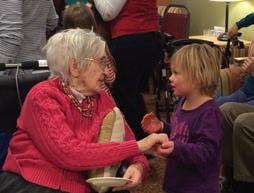
















Whether




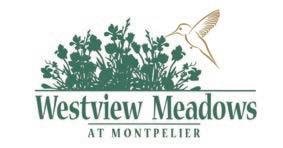
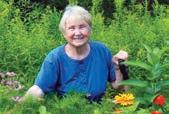




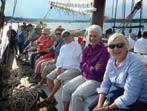

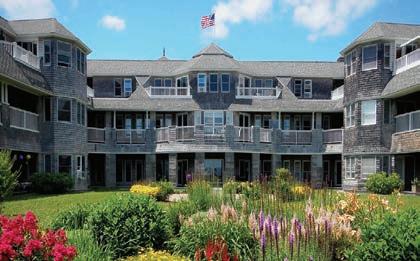
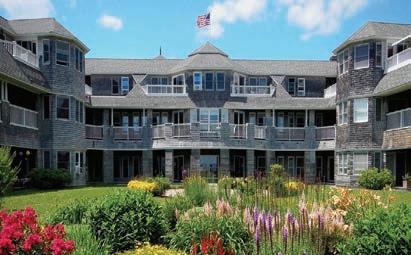
(continued from p. 113)
figure it out on my own. Later in the summer, he turned over his favorite job, picking peppers and eggplant, to me. They were my favorites, too: so shiny and beautiful. Like him, I loved the solitude of the task, walking barefoot between the rows in that sandy loam, filling my basket with what I pre tended were massive green and red and purple jewels.
That summer, right after my high school grad uation, a reporter and a photographer from magazine arrived to do a story about “America’s Oldest Family Farm.” My sister, Lucy, had been liv ing and teaching in Paris since her college gradua tion; Will was in Boston working for Campbell Soup. When the reporter asked my father what might happen to the farm in the future, he shook his head. “I don’t know,” he said. “It is kind of tough when you turn out one son and you have all your hopes on him and they don’t materialize.” Will liked to play golf, he said. Maybe he could turn the farm into a golf course. The reporter looked up from her notebook. “What about your daughter?” My father chuckled. “I’ve never heard of a woman farmer.”
But a week later, he let me start learning the tractor work. He showed me how to start the irrigation pump down at the pond. He started telling me stories about his father and grandfather and great-uncle and the improvements they had made to the farm. He invited me to accompany him to the monthly evening meetings of the New Hampshire Vegetable Growers Association. He was 50 years old that year, sure that his only son would never come home for good.
The article in Life magazine came out in the fall of 1971, at the start of
my second year of college. The fullpage photographs and the words that accompanied them painted a picture of our farm as a place of exquisite beauty and deep-rooted history. Reading it in my dorm room, I wept.
Two weeks later, my brother quit his job and came home to work the farm. My father was, of course, over
Once in control, Will made huge changes. He took out a big bank loan and built a spacious climate-controlled year-round addition onto the old barn. The area that used to be the charming post-and-beam farm stand was now used for storage. He bought a tractortrailer and drove it to Boston two mornings a week to buy produce from the big wholesale market there. He put in walk-in coolers to keep it all fresh. Soon we were selling bananas and iceberg lettuce and Florida corn. There was a gift shop and garden center. My sister managed a deli department, where she sold imported cheeses and fine olive oil. My family stopped referring to Tuttle’s Red Barn as “the stand,” as we always had. Now everyone called it “the store.”
I hated the changes. “I don’t like it either, Beck,” my father said. “But it’s your brother’s farm now, and he gets to make the decisions.” He told me that he had accomplished his work, passing the farm to the only son of the 11th generation of Tuttles.
on a farm would be to marry a farmer.
My sister came home from Europe that summer and pitched in, building a house nearby with her husband and working as hard as I did. Will was more interested in marketing than farming, and more interested in playing golf than anything else. I got married in 1978, but not to a farmer. Five years later, after my second child was born, I reluctantly gave up the work I had loved.
When my father turned 65 he officially deeded the farm to my brother, as was the family tradition. Will wasn’t the farmer in the family, but he was the son. Even though I knew it was coming, I took the news hard. “What if all three of us had been boys?” I asked my father tearfully. “You weren’t,” he replied.
My parents had both died by the time the recession hit and the big bank loan came due. There was no money to pay it. No money for seeds or fertilizer. No energy left to keep going. The year I turned 60, there was no corn planted on the farm for the first time in any living person’s memory.

Our brother’s voice broke when he gave my sister and me the news that he had to sell the farm.
I have a vegetable garden in Maine where I grow my own corn now. Like my mother, I keep a stick of butter just for corn in the refrigerator all summer, with bits of corn silk embedded from the previous night’s cob-rolling. My children and their children and their cousins will likely never be farmers. Their bare feet will never feel that rich Tuttle soil on a summer afternoon. But at least they’ll know what fresh corn tastes like.









 Nicole S.
Nicole S.


I have terrible plantar fasciitis–really painful stabbing pain. I got a pair of Gravity Defyers to try and to my amazement my foot either doesn't hurt or barely hurts when wearing them (major improvement from limping around all day long). These are just what I needed when I was feeling very desperate and like nothing was working!
Our patented VersoShock® technology provides the ultimate protection for the entire body in a way no other shoe can. It is designed to absorb harmful shock from the ground up, converting the shock into renewed positive energy for your next step. Having this kind of cushioning allows you to not only physically feel better, but improve your posture and be on your feet longer without any restrictions holding you back.














ION
Men Sizes 7.5-15
- Red/Gray TB9022MRG



-Black TB9025MBB









Women Sizes 6-11




-Black/Blue TB9022FTL
-Gray/Pink TB9022FGP











- Black/Blue TB9022FTL - Gray/Pink



$150 $12000

Clinical studies show breakthrough acid reflux treatment also helps maintain vital health and helps protect users from the serious conditions that accompany aging such as fatigue and poor cardiovascular health
by David Waxman Seattle Washington:A clinical study on a leading acid reflux pill shows that its key ingredient relieves digestive symptoms while suppressing the inflammation that contributes to premature aging in men and women.
And, if consumer sales are any indication of a product’s effectiveness, this ‘acid reflux pill turned anti-aging phenomenon’ is nothing short of a miracle.
Sold under the brand name AloeCure, it was already backed by clinical data documenting its ability to provide all day and night relief from heartburn, acid reflux, constipation, irritable bowel, gas, bloating, and more.
But soon doctors started reporting some incredible results…
“With AloeCure, my patients started reporting less joint pain, more energy, better sleep, stronger immune systems… even less stress and better skin, hair, and nails” explains Dr. Liza Leal; a leading integrative health specialist and company spokesperson.
AloeCure contains an active ingredient that helps improve digestion by acting as a natural acid-buffer that improves the pH balance of your stomach.
Scientists now believe that this acid imbalance is what contributes to painful inflammation throughout the rest of the body.
The daily allowance of AloeCure has shown to calm this inflammation which is why AloeCure is so effective.

Relieving other stressful symptoms related to GI health like pain, bloating, fatigue, cramping, constipation, diarrhea, heartburn, and nausea.
Now, backed with new clinical studies, AloeCure is being recommended by doctors everywhere to help improve digestion, calm painful inflammation, soothe joint pain, and even reduce the appearance of wrinkles – helping patients to look and feel decades younger.
Since hitting the market, sales for AloeCure have taken off and there are some very good reasons why.
To start, the clinical studies have been impressive. Participants taking the active ingredient in AloeCure saw a stunning 100% improvement in digestive symptoms, which includes fast and lasting relief from reflux.
Users also experienced higher energy levels and endurance, relief from chronic discomfort and better sleep. Some even reported healthier looking skin, hair, and nails.
A healthy gut is the key to a reducing swell-
ing and inflammation that can wreak havoc on the human body. Doctors say this is why AloeCure works on so many aspects of your health.
AloeCure’s active ingredient is made from the healing compound found in Aloe vera. It is both safe and healthy. There are also no known side effects.
Scientists believe that it helps improve digestive and immune health by acting as a natural acid-buffer that improves the pH balance of your stomach.
Research has shown that this acid imbalance contributes to painful inflammation throughout your entire body and is why AloeCure seems to be so effective.
To date over 5 million bottles of AloeCure have been sold, and the community seeking non-pharma therapy for their GI health continues to grow.
According to Dr. Leal, her patients are absolutely thrilled with their results and are often shocked by how fast it works.
“For the first time in years, they are free from concerns about their digestion and almost every other aspect of their health,” says Dr. Leal, “and I recommend it to everyone who wants to improve GI health without resorting to drugs, surgery, or OTC medications.”
“I was always in ‘indigestion hell.’ Doctors put me on all sorts of antacid remedies. Nothing worked. Dr. Leal recommended I try AloeCure. And something remarkable happened… Not only were all the issues I had with my stomach gone - completely gone – but I felt less joint pain and I was able to actually sleep through the night.”
With so much positive feedback, it’s easy to see why the community of believers is growing and sales for the new pill are soaring.
AloeCure is a pill that’s taken just once daily. The pill is small. Easy to swallow. There are no harmful side effects and it does not require a prescription.
The active ingredient is a rare Aloe Vera component known as acemannan.
Made from of 100% organic Aloe Vera, AloeCure uses a proprietary process that results in the highest quality, most bio-available levels of acemannan known to exist.
According to Dr. Leal and several of her colleagues, improving the pH balance of your stomach and restoring gut health is the key to revitalizing your entire body.
When your digestive system isn’t healthy, it causes unwanted stress on your immune system, which results in inflammation in the rest of the body.
The recommended daily allowance of acemannan in AloeCure has been proven to support digestive health, and calm painful inflammation without side effects or drugs.
This would explain why so many users are experiencing impressive results so quickly.
With daily use, AloeCure helps users look and feel decades younger and defend against some of the painful inflammation that accompanies aging and can make life hard.
By buffering stomach acid and restoring gut health, AloeCure calms painful inflammation and will help improve digestion… soothe aching joints… reduce the appearance of wrinkles and help restore hair and nails … manage cholesterol and oxidative stress… and improve sleep and brain function… without side effects or expense.
Readers can now reclaim their energy, vitality, and youth regardless of age or current level of health.
One AloeCure Capsule Daily
• Helps End Digestion Nightmares
•Helps Calm Painful Inflammation
•Soothes Stiff & Aching Joints
•Reduces appearance of Wrinkles & Increases Elasticity
•Manages Cholesterol & Oxidative Stress
• Supports Healthy Immune System
•Improves Sleep & Brain Function
This is the official nationwide release of the new AloeCure pill in the United States. And so, the company is offering our readers up to 3 FREE bottles with their order.
This special give-away is available for the next 48-hours only. All you have to do is call TOLL-FREE 1-800-748-3280 and provide the operator with the Free Bottle Approval Code: AC100. The company will do the rest.
Important: Due to AloeCure’s recent media exposure, phone lines are often busy. If you call and do not immediately get through, please be patient and call back. Those who miss the 48hour deadline may lose out on this free bottle offer.
EnergAire continuously puri es up to 4,000 cubic feet (a large room) of air and makes it breathable and invigorating. Restores natural ion balance to unhealthy environments caused by industrial pollution, automobile exhaust, central airconditioning, and heating, smoke, dust, pollen, animal fur. . . removes microscopic pollution particles not removed by any other method of air puri cation. EnergAire was rated Number One for speed of removal of cigarette smoke by the leading U.S. consumer protection magazine. It has no noisy fan, no costly lter, and requires no maintenance. Uses less than 2 watts. 9" high. 3" diameter. Weighs less than 1 pound. $69.95

RODAR is the super-powerful professional ultrasonic pest repeller with up to 60 or more times the power of other devices — and power is what makes RODAR so e ective. RODAR ultrasound equals a jet engine — noise unbearable to pests but at frequencies humans and pets cannot hear. RODAR units are completely safe. RODAR drives pests out and keeps them from getting in. Handsome simulated walnut cabinet 5-5/8" high. Weight 1-1/2 pounds. Uses less than 5 watts. $99.95





90-day money-back guarantee — 12-month warranty.To order: Send cost for unit(s) plus $10.00 each for shipping and handling (in Mass. add 6.25% tax)

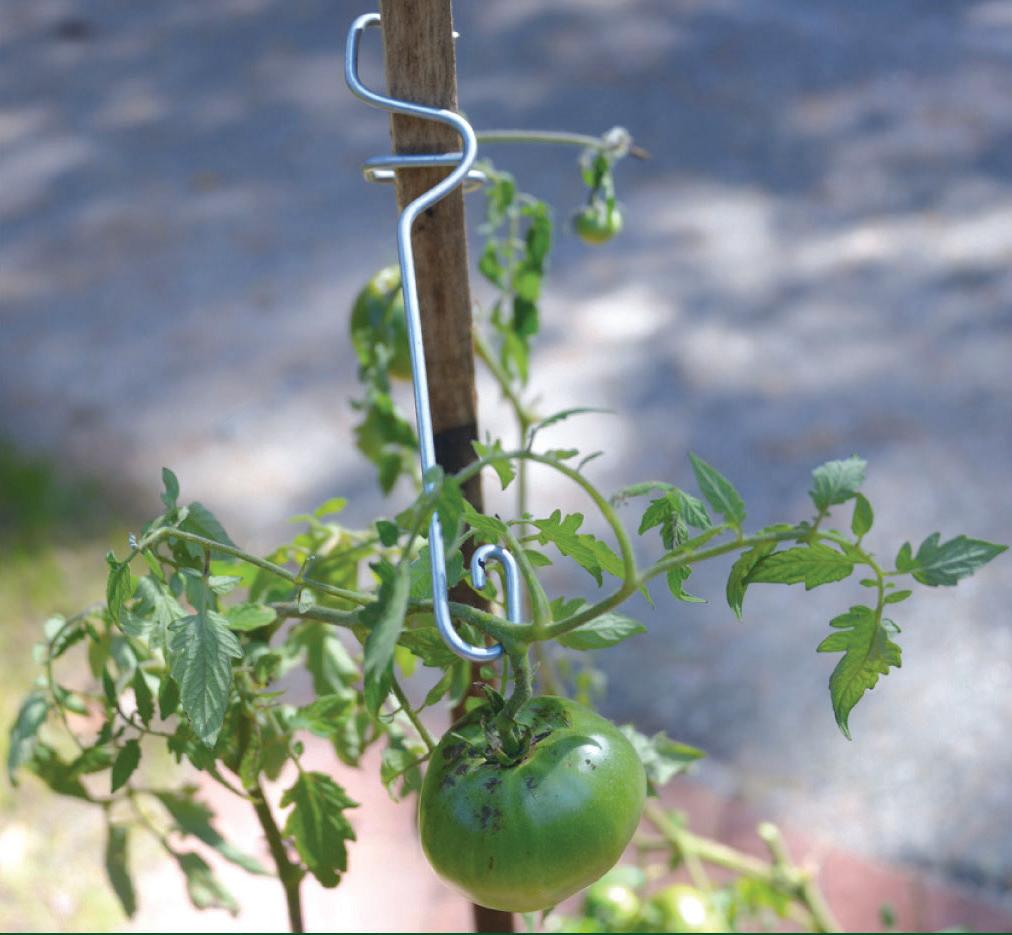






To




Brigger chairs, rockers, recliners, and sofas come in standard and custom sizes. Many have become favorite companions for reading, watching, and relaxing. We have helped many customers with back problems or health and age-related sitting issues. Call to find out what we










www.kleindesign.com






































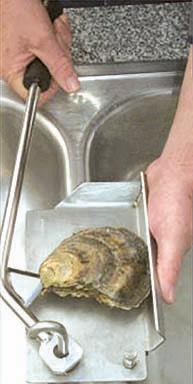



























For nearly 50 years, summers at Tanglewood meant the homecoming of favorite son Leonard Bernstein.
his May, Hollywood unveiled plans for not one but two major movies about conductor and composer Leonard Bernstein: The American , starring Jake Gyllenhaal, and Bernstein, starring Bradley Cooper. Whatever buzz the dueling biopics generate, though, is likely to be drowned out by the thunder of more than 2,500 events being held around the globe to mark 2018 as the centenary of Bernstein’s birth in Lawrence, Massachusetts.

Of all the institutions paying homage to the maestro, looming largest is the Boston Symphony Orchestra and especially its summer home, Tanglewood, which tops off a full season of Bernstein programming with a birthday gala on August 25 featuring Yo-Yo Ma, Midori, Audra McDonald, and no fewer than five world-class conductors.
Bernstein’s ties to Tanglewood go back almost to the start. In 1940, the three-year-old music festival opened an academy—now the Tanglewood Music Center—for young performers, composers, and conductors. In that first session was a 22-year-old Leonard Bernstein, recently out of Harvard.
He was one of only five students accepted to a master class with BSO music director Serge Koussevitzky, with whom he formed a lasting mentor-protégé bond (the two would refer to each other affectionately as “Kouss” and “Lenushka”). In a letter home to his former piano teacher, an excited Bernstein reported: “[Koussevitzky] said today that I will certainly be the greatest (!) conductor, if only I will work hard.”
What Koussevitzky saw then, the world would soon recognize. Over the years Bernstein became internationally famous as both a conductor and the composer of works such as West Side Story and Candide. Yet even as his celebrity grew, he faithfully returned to Tanglewood virtually every summer to teach and conduct.
In 1990, despite failing health, Bernstein led Tanglewood’s season-ending concert; he had to be helped offstage afterward and put on an oxygen tank. That the maestro passed away less than two months later recalls a T.S. Eliot quote Bernstein himself used to describe his connection to Tanglewood: “In my end is my beginning.” —Jenn
Johnson
From a craft-brew getaway in Stowe, Vermont, to a classic windjammer cruise off the coast of Maine, we give you a whirlwind tour of our favorite 48-hour excursions in New England.

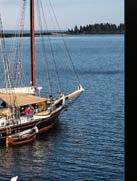
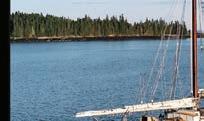


Late summer means fresh corn. To celebrate, we serve up some delicious recipes from the pages of Yankee.
Two recently opened suites at Vermont’s Woodstock Inn take their inspiration from the family that helped put this region on the map. We visit the historic inn for an insider’s look at the new rooms, and more.


Check out a collection of the latest and greatest snapshots from Yankee ’s Instagram community.





For each digital issue, we go deep into the archives to bring back a terrific story. Our August selection is one you won’t want to miss.














